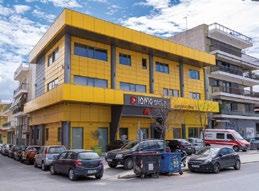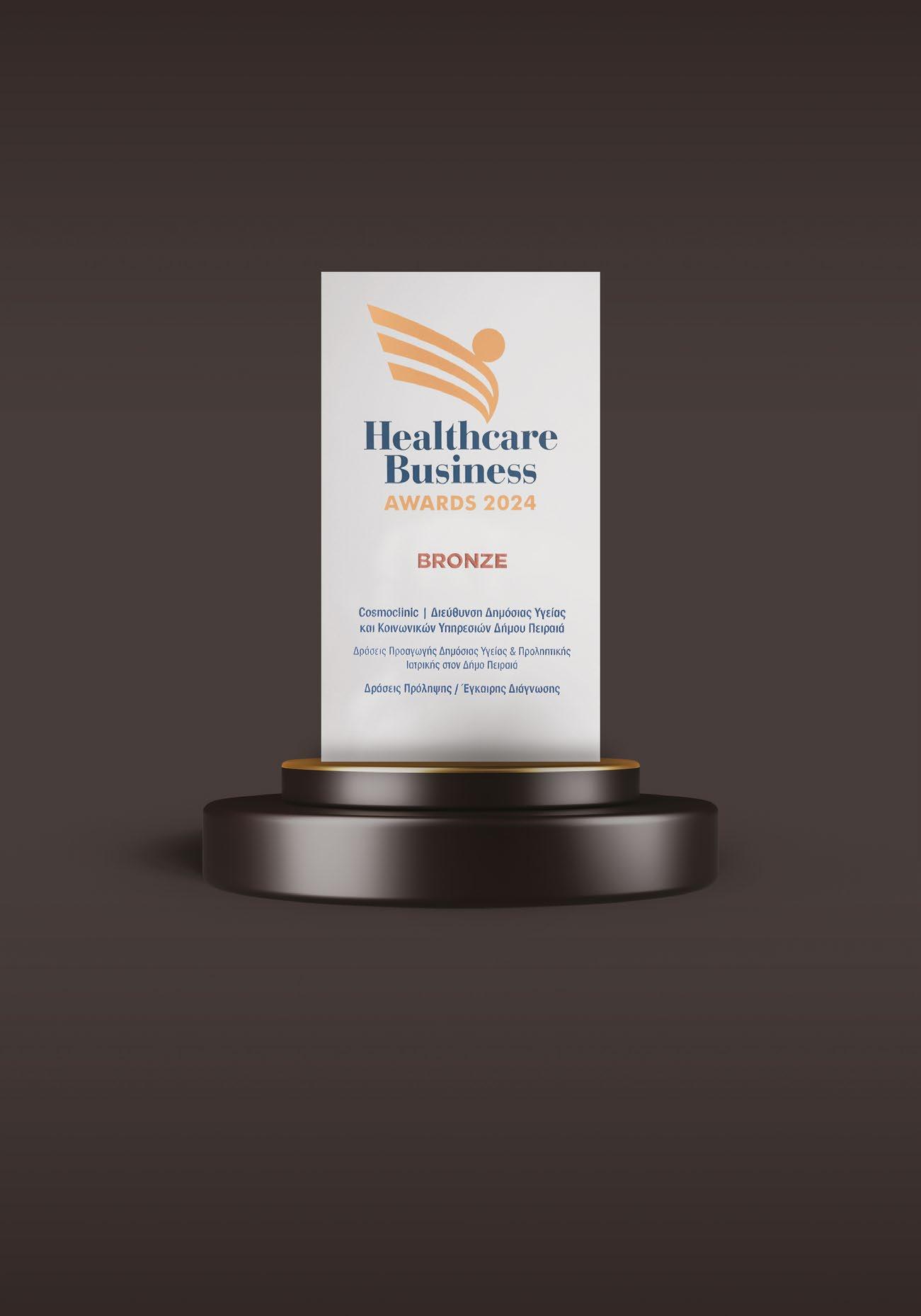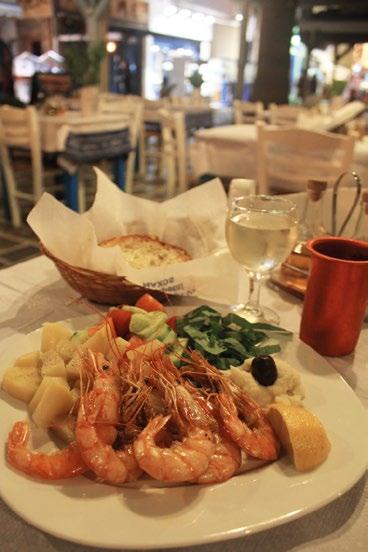SEAJETS
DESTINATIONS + CULTURE + AEPHORIA
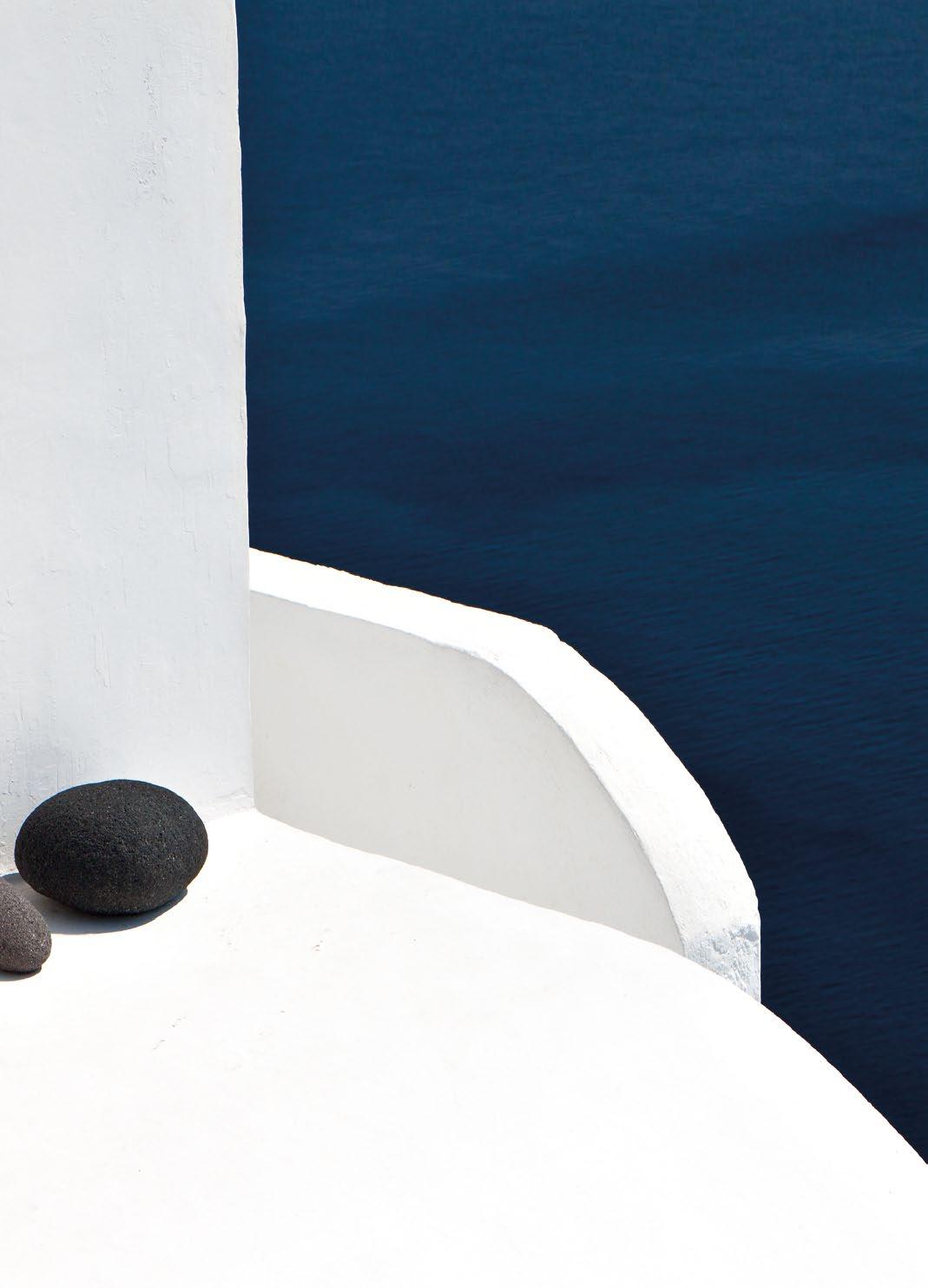
ATHENS
70 YEARS OF THE ATHENS EPIDAURUS FESTIVAL
IOS
ΤHE NEW GAITIS-SIMOSSI MUSEUM ON IOS
ANDROS
TAKIS 1∞ IN ATHENS AND ANDROS
DELOS
DELOS THROUGH THE LENS OF ERIETA ATTALI
SIFNOS
SIFNOS THE ISLAND OF MEMORY



70 YEARS OF THE ATHENS EPIDAURUS FESTIVAL
IOS
ΤHE NEW GAITIS-SIMOSSI MUSEUM ON IOS
ANDROS
TAKIS 1∞ IN ATHENS AND ANDROS
DELOS
DELOS THROUGH THE LENS OF ERIETA ATTALI
SIFNOS
SIFNOS THE ISLAND OF MEMORY


With four decades of solid experience in the global bunkering industry, SEKAVIN stands as a trusted partner, known for transparency, tradition, and unwavering quality of service. Our strength lies in a dedicated team of professionals who work with integrity and precision to meet the evolving needs of our valued clients.
More than just a bunker supplier, we are committed to delivering excellence at every level—supporting not only our customers but also our people, partners, communities, and the environment. Our approach is guided by deep expertise, ethical values, and a long-term vision for responsible maritime services.
Our core offering is built around a triad of specialized services:
• Physical Supply – Reliable and efficient delivery of quality bunker fuels remains our foundation.
• Global Bunkering & Trading – Expert guidance and tailor-made solutions backed by decades of market insight.
• Shipping Agency – Personalized, transparent, and dependable support where local knowledge truly matters.

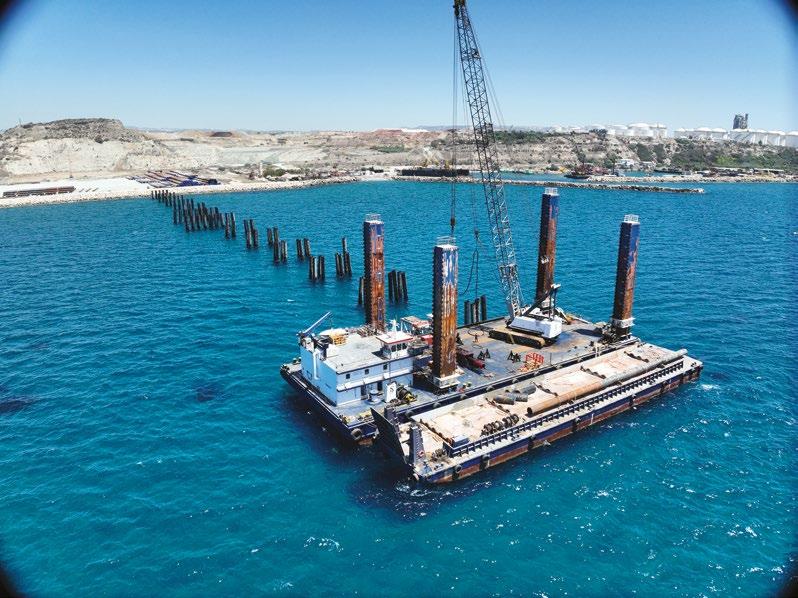



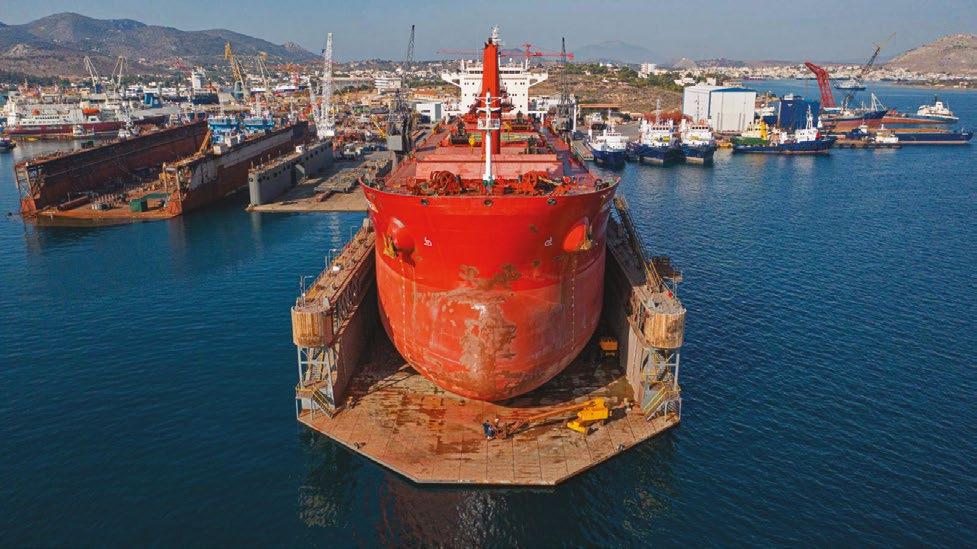





A world leader in heat exchanging technology solutions
specialised employees >45 years of experience 90 >45K successful installations















We guarantee the longevity and performance of our equipment with a set of high-quality services
We provide enhanced corrosion resistance and prevent selective leaching for copper Passivation service Ultrasonic cleaning
We eliminate stubborn residues for optimal heat exchanger performance




We ensure maintenance through design analysis and operating conditions Reconditioning repair

News to share
We conduct in-house tests, collaborate with labs, and enhance installations Research & optimisation

Over 45,000 of our marine-grade products are trusted by the Greek merchant fleet, the Hellenic Navy, and other international Navies and industries worldwide.
In this context, in May 2025, FARAD S.A. announced the signing of a new direct contract with Naval Group Hellas, which establishes FARAD S.A. as an official maintenance provider for the three new FDI frigates of the Hellenic Navy.

A K I S P A P A D A K I S
2, 71201,
: 2 8 1 0 2 2 2 2 4 5
31, 71305,
: 2 8 1 0 2 5 2 4 6 9 , 2 8 1 0 3 7 0 1 3 0
ema il: info @ chro no ro . gr
e- sh op : c h r on or o.gr




Property SEAJETS
2 D. Gounari Str., 185 31, Piraeus, tel.: +30 210 4121001
Publishing - Production: Elc Productions
Content Curation: Elculture
Managing Director: Calliope Alpitsi
Editor in Chief: Pepi Nikolopoulou
Εditors: Old Boy, Deana Kartsagouli, Dimitra Kokkoni, Zoe Lymperis, Miriam Paraskevopoulou, Katerina Parri, Stelios Parris, Sofia Vgenopoulou
Set Design: Mariangela Zampeli
Copy Editors: Anastasia Statha
SEAJETS media: Nikos Ververidis
Advertising: Maria Manioudaki
Digital Content Management: George Rompolas
Financial Consultant: Konstantinos Tzortzis
Accounting: Konstantina Theofilopoulou
Photos: Unsplash, iStock by Getty images
Photographs: "Marabou Project, Historiography in the Aegean" by Konstantinos and Petros Sofikitis.
We would like to thank them for the courtesy of using parts of the Maraboo Project.
Printing: Haidemenos S.A.
SUMMER EDITION
The “SEAJETS Co” isn’t responsible for the contributors’ opinions as they are represented on issues. It is illegal to publish, reproduce, or transmit in whole or part of the magazine without the written permission of the publisher. Free Copy


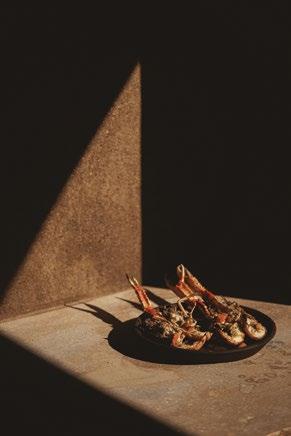



This year, our journey begins with memories and looks toward tomorrow.
In the Aegean islands, light holds memory. It lights up faces that keep their roots alive, women of the islands with stories of resilience, young people singing rizitika in courtyards overlooking the sea, captains who have etched the summer’s routes onto their very skin. This issue is dedicated to them, and to you who travel with us. Because every journey is the people who bring a place to life: those who open their homes and hearts, those who cook the way they were taught by the old ones, those who whisper stories into the island breeze and you, the traveler, who hears them even if you don’t speak their language.
At SEAJETS, we make sure that your journey is not only fast and comfortable, but above all, welcoming. We want you to feel the warmth of our authentic hospitality. With the world’s largest fleet of high-speed vessels, we connect 50 ports and offer more than 400 routes, creating bridges that bring people and stories closer together.
This summer, we invite you to discover the cultural soul of the islands: from the rizitiko songs that echo through paths and village squares, to local festivals, open-air cinemas under the stars, summer performances, museums. Because culture doesn’t reside only in major events it lives in the small, everyday acts that keep identity alive. We explore artificial intelligence applications and imagine how we’ll travel in the future, envisioning new connections and personalized experiences, always seeking the deeper meaning in every journey.
Through the stories of our captains, you’ll sense the salt of their voyages as they lived them. And through our routes, you’ll discover an Aegean full of voices, memories, and invitations.
Welcome to our summer. Welcome to the journey.
team The



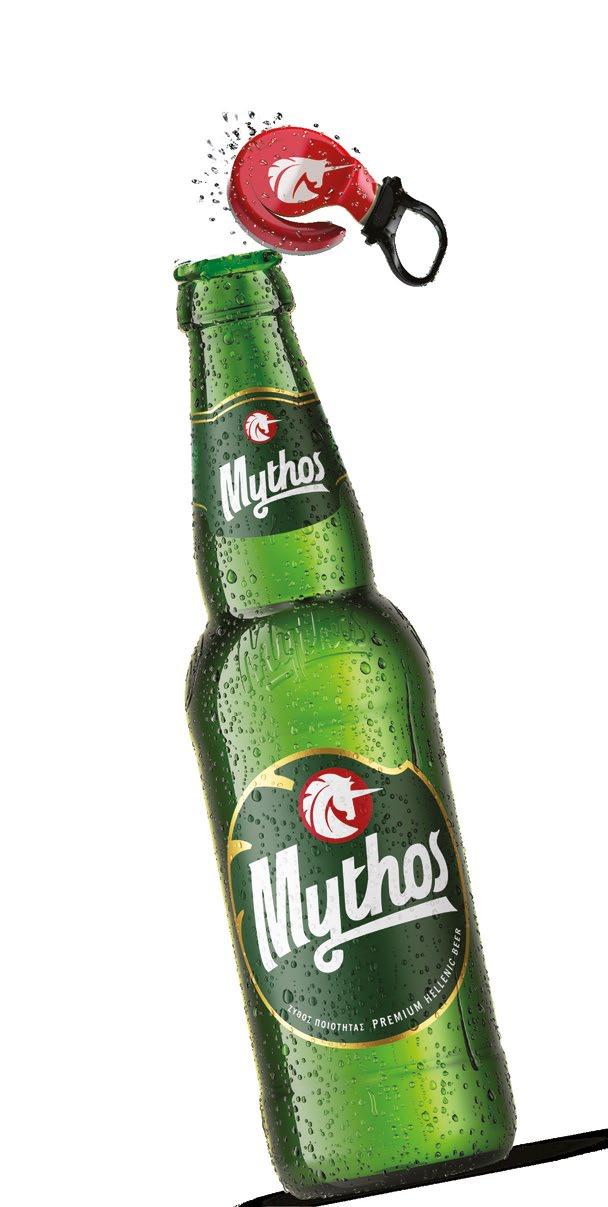
018 Πολιτιστική
Cultural Agenda
028
Nίκος
Nikos HardaliasAttica: A modern metropolis that inspires
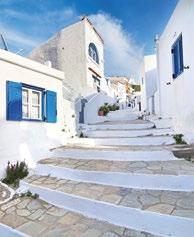
032
Δρυοπίδα. Aνάμεσα
Dryopida. Between two hills
038
Τhe new Gaitis-Simossi Museum on Ios
046

064
Erieta Attali
Delos through the Lens of Erieta Attali
072
Paros and Naxos: Two islands that embody the authentic Cycladic experience
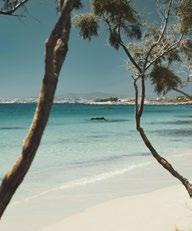
080
Open air cinemas
084
SEAJETS
Through the eyes of SEAJETS captains
056
Sifnos the island of memory
A favourite playlist for your journey
086
Nature calls you to action
090
Aνακαλύψτε
Rediscover luxury in the South Aegean
092
70 years of the Athens Epidaurus Festival
098
Michael Marmarinos
106 H
Skopelos: The island of 365 churches

118
The future belongs to everyone
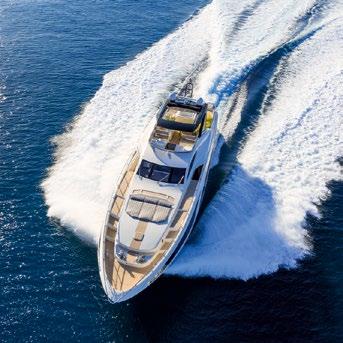
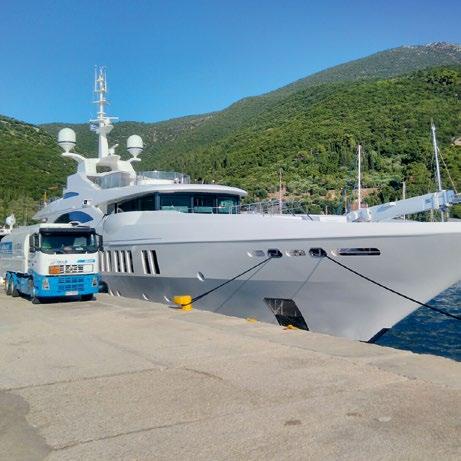
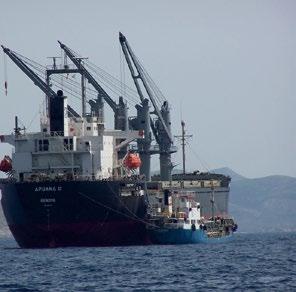






118
Where Papadiamantis meets the sea
122
Island women: Tales of resilience

136
Takis 1∞
Takis 1∞ in Athens and Andros
140
Maria Farantouri
144
Where Athenians eat?
130
Yannis Moralis
131
130 years of Municipal Theatre of Piraeus 134

152
Sweet stories on Aegean waters
166
”You are what you wear”: Clothing and identity
Light, memory and artthe essence of Greece
170
Ai at the traveller’s side
172
Connections on the road
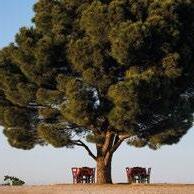
174
Rizitiko. The song of Western Crete
180
Maria Vlazaki: Unearthing history beneath Chania

186
Health & Wellness

KAFKAS, the No.1 company in electrical equipment, technology products, lighting, building & energy management solutions is celebrating 50 years of growth and innovation. This anniversary coincides with the completion of a major cycle of digital and operational transformation, with an extensive network of 84 stores and 8 specialized Business Units across Greece and Cyprus. At the heart of this transformation is the launch of KAFKAS’ new state-of-the-art Distribution Center, equipped with cutting-edge robotic systems, along with the successful transition to SAP Rise (S/4HANA), completed in 2024.
"KAFKAS' 50-year journey is the result of continuous effort, a passion for innovation, a drive for growth, and the ability to adapt to ever-changing conditions.
For5decades,KAFKAShasbeenattheforefrontofelectrifying innovation, driven by the core values that have been key to our success and continue to shape our future: ethos, passion, teamwork, and effectiveness. This milestoneisnotjustareflectionofthesuccesswehave achieved, but of the incredible people who have made itpossible.Toouremployees,partners,customers,and supporters, I want to express my gratitude. Your trust, loyalty, and commitment have been the driving force behind our evolution.
Together, we are ready to illuminate the future!", Nikos Kafkas, CEO of the company.
https://corporate.kafkas.gr/ | https://www.kafkas.gr/


Marlene Dumas: Cycladic Blues | 05.06 - 03.11.2025

Marlene Dumas: Cycladic Blues | 05.06 – 03.11.2025
The first solo museum exhibition in Greece of renowned South African artist Marlene Dumas. Over thirty paintings and works on paper from the past twenty years—along with recent pieces—are presented in dialogue with antiquities from the permanent collections of the Museum of Cycladic Art, at the Stathatos Mansion. Curated by Douglas Fogle in close collaboration with the artist, the exhibition reveals Dumas’s deeply personal engagement with the tradition of figurative representation. For the first time, the artist has selected not only her own works but also the ancient artifacts they converse with, creating a poetic co-existence of body, memory, and materiality.
More info: www.cycladic.gr
Museum of Cycladic Art | 4 Neofytou Douka St., Athens
Αθήνα, 117 43
Why Look at Animals? Justice for Non-Human Life | Until 16.02.2026
The National Museum of Contemporary Art (EMST) presents the largest exhibition in its history: Why Look at Animals? Justice for Non-Human Life – an ambitious international exploration of the relationship between humans and animals. Inspired by John Berger’s influential 1980 book of the same title and curated by Katerina Gregos, the exhibition brings the invisible lives of animals to the fore
front, challenging their systematic exclusion from the modern world. Featuring over 60 artists from 25 countries and more than 200 works, it is a powerful artis
tic call for planetary justice that includes non-human life. Can we truly speak of environmental ethics without animals? EMST responds: not anymore. More info: www.emst.gr / EMST | Kallirrois Ave. & Amv. Frantzi (former FIX brewery), Athens 117 43
Marcus Coates | Extinct Animals, 2018 (άποψη

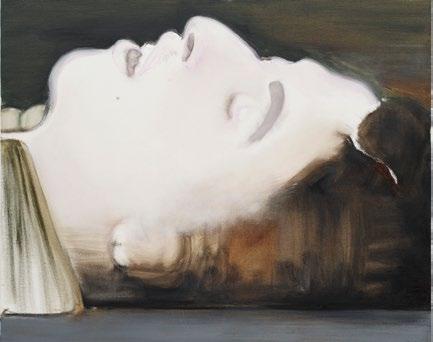
Allspice. Michael Rakowitz & Ancient Cultures | 13.05 – 31.10.2025
The first chapter of a three-part project unfolds at the Acropolis Museum, where contemporary artworks enter into dialogue with ancient artifacts. Internationally acclaimed artist Michael Rakowitz weaves stories of cultural loss, survival, and reconstruction, shedding light on the wounds of looting and colonialism. In collaboration with the Institute for the Study of Ancient Cultures (University of Chicago) and the Th. Zintilis Collection of Cypriot antiquities, his works are exhibited alongside objects from the Middle East and the Mediterranean. Together, they transform the Temporary Exhibitions Gallery—and the symbolic “absence” of the Parthenon sculptures—into a space of active remembrance and cultural reclamation. The exhibition includes three new commissions by the artist. More info: www.theacropolismuseum.gr Acropolis Museum, 15 Dionysiou Areopagitou St., 11742 Athens


Panayiotis Tetsis – The Obsession of the Gaze | 10.04 – 31.10.2025
Forty years of street markets, a lifetime of Hydra, and in between: chairs, tables, pine trees, shipyards, portraits of friends. In Panayiotis Tetsis: The Light and the Obsession of the Gaze, 160 works reveal a painter who observed the world with unwavering focus and profound tenderness. His recurring themes—developed not chronologically but through creative persistence—unfold in a series of oil paintings, pastels, prints, and watercolors. Tetsis returned again and again to the same subjects, seeking to resee them through light, color, and emotion. A deep dive into the unique gaze of one of the most important Greek painters of the 20th century.
More info: www.nationalgallery.gr
National Gallery | 50 Vasilissis Konstantinou Ave., 116 34 Athens

Francisco Goya, Los Caprichos |
29.09.2025
Periklis and Nikos Byzantios | Artistic Affinities and Contrasts | Until 21.09.2025
For the first time, the work of Periklis and Nikos Byzantios—father and son—is brought together in a shared artistic dialogue. The exhibition at the B. & M. Theocharakis Foundation highlights both the aesthetic kinship and the creative divergences between two painters who, through distinct yet parallel paths, sought a new visual language that is both Greek and European. Featuring works from major private and public collections, the exhibition traces their mystic relationship with light, composition, and image-making. Two worlds that converge not in imitation, but in an inner urgency for artistic clarity and spiritual expression. More info: www.thf.gr
B. & M. Theocharakis Foundation for the Fine Arts and Music | 9 Vasilissis Sofias & 1 Merlin St., Athens

Francisco Goya, Los Caprichos | Until 29.09.2025
Francisco Goya’s iconic Los Caprichos—a bold work of satire and social critique—is on view at the National Gallery in a rare exhibition that pairs all 80 original etchings with their surviving preparatory drawings. Visitors are offered a unique glimpse into the artist’s creative process, with photographs of the sketches (mainly from the Prado Museum) revealing ideas Goya later chose to omit, leaving only cryptic titles behind. Liberated from royal commissions, Goya gave voice to a revolutionary art of reason and fury, exposing hypocrisy, superstition, ignorance, and social injustice. A milestone of Enlightenment thought—and a work as urgent now as it was in 1799.
More info: www.nationalgallery.gr
National Gallery | 50 Vasilissis Konstantinou Ave., 116 34 Athens


History | 21-24.07.2025
History | 21-24.07.2025
The new choreographic creation by Patricia Apergi, is a deeply physical and symbolic journey through the history of women’s struggles. Inspired by the Greek word “ystera” and its layered meanings, the piece sheds light on the identities, claims, and demonizations historically tied to the female gender. A continuation of Planites (2012), now viewed through a feminine lens, Hystory portrays women as the wanderers of today—those who strayed, resisted, and dared to claim the right to exist beyond the bounds of being “good girls.”
More info: www.aefestival.gr
Piraeus 260, Athens
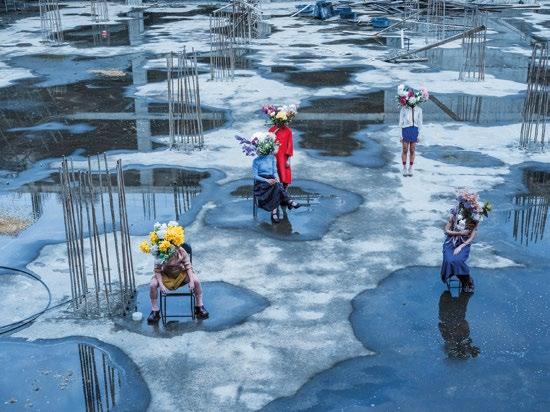

Richter
Max Richter – A Night at the Herodion | 01.07.2025
Under the shadow of the Acropolis, Richter presents a handpicked anthology of seminal works: from the lyrical The Blue Notebooks and the dreamlike Sleep, to the politically charged Voices. His music—blending classical tradition, electronic sensitivity, and philosophical depth—offers a refuge of empathy and introspection. At the Herodion, ancient stones will resonate with emotions beyond words. A night destined to leave its mark—not only in memory, but in the soul.
More info: www.aefestival.gr
Odeon of Herodes Atticus, Dionysiou Areopagitou St., Athens
Verdi’s Rigoletto| 27–31.07.2025
In this pivotal work, Verdi breaks new ground, fusing lyrical beauty with emotional intensity. Director Katerina Evangelatou sets the production in the decaying Italy of the 1980s, spotlighting social and gender inequalities through the tragic tale of the court jester and his daughter. Gilda, caught between love and honor, sacrifices herself in a world that punishes innocence. With evocative sets by Eva Manidaki, this daring production brings Verdi’s haunting opera back to the Herodion with dramatic force and aesthetic boldness. Music conductor Derrick Inouye.
More info: www.aefestival.gr
Odeon of Herodes Atticus, Dionysiou Areopagitou St., Athens

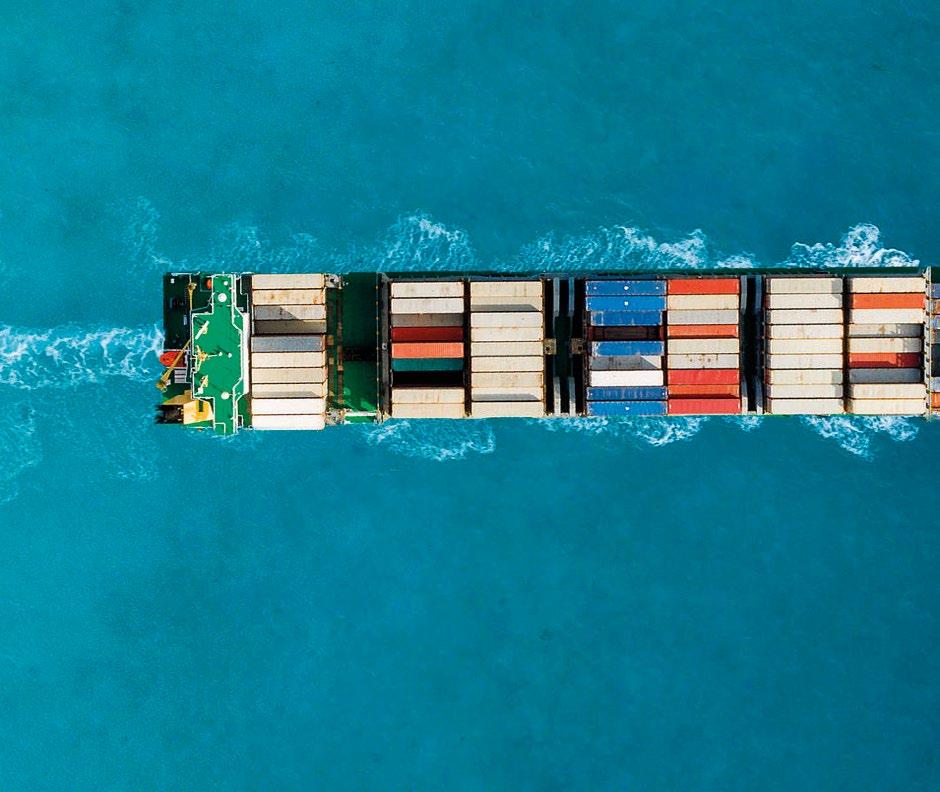

Wärtsilä is a global leader in innovative technologies and lifecycle solutions for the marine and energy markets. As we celebrate our 190th anniversary, we enjoy the trust and loyalty of our customers and we are proud to declare that every third vessel sailing the oceans of the world has Wärtsilä solutions on board. Our passionate team of more than 17,500 professionals in more than 240 locations in 79 countries, shape the decarbonisation transformation of our industries across the globe.
As an industry responsible for transporting over 80% of world trade, maritime shipping serves as the lifeblood of the global economy.
However, there lies the challenge of meeting the increasing demand for capacity while aligning with sustainability goals. And time is of the essence here. In just 25 years – the lifetime of a single vessel – global regulation (IMO) requires that shipping eliminate its entire contribution to climate change.
Wärtsilä understands that the evolution of the maritime sector hinges upon collaborative efforts across the entire ecosystem.
From developing industry-leading technologies to advance maritime’s transition to future fuels through to building an end-to-end digital ecosystem where all vessels and ports are connected, our commitment to innovation and sustainability underscores our vision to supporting the industry’s sustainable future.
Through robust research and development initiatives, we are continuously investing in technologies that will facilitate the energy transition towards 2050, and beyond. Increasing R&D spending, now at approximately 4% of net sales, exemplifies our dedication to driving progress.
Central to our strategy is recognising there is no one-sizefits-all solution to decarbonisation. Our decarbonisation approach is designed to tailor flexible solutions and services to the unique needs of owners and operators globally, ensuring that they are equipped with the right technologies at the right time. By providing a diverse portfolio of flexible technologies and future-proofed solutions, we partner with our customers on their decarbonisation journey.
Moreover, the global nature of shipping means working together with others is the only way the industry can unlock the potential to drive sustainable transformations and develop technologies and solutions that meet the needs of the wider value chain. Wärtsilä actively engages in global, regional and local partnerships and initiatives aimed at advancing sustainable practices through fostering a culture of collaboration, paving the way for a seamless and interconnected ecosystem that supports the transition.
With a target to achieve carbon neutrality in our own operations and to offer a product portfolio ready for zero-carbon fuels by 2030, we are steadfast in our pursuit of a greener and more sustainable future. As we look towards the horizon beyond 2050, we remain dedicated to pioneering solutions that propel the maritime sector towards a more sustainable and prosperous future.
Wärtsilä Greece S.A. Pindou 1-3 & Posidonos Av. 17, 18344, Moschato, Greece www.wartsila.com


Festival at the Park |Until 13.09.2025
The Festival at the Environmental & Cultural Park of Paros hosts leading names in music, dance, and theatre within the unique natural beauty of the Ai Giannis Detis peninsula.
This year’s highlights include Lena Platonos, joined by Savina Yannatou, Yiannis Palamidas, and Stergios Tsirlgiakos; a tribute to Loukianos Kilaidonis on July 21; and concerts by renowned French double bassist Marc Buronfosse on July 23, as well as the duet of Riza (GR) & Stefan Tsapis (FR) on July 30. Their performance, titled Roots of the Mediterranean, will blend melodies and stories from the Greek islands and Asia Minor with jazz tones and Mediterranean soundscapes.
On July 4, the Ballet of the Greek National Opera, in co-production with London’s acclaimed venue The Place, presents Future Cargo — a sci-fi dance performance unfolding on a 12-meter-long truck.
Full programme available at: www.parospark.com
Ai Giannis Detis, Naoussa, Paros 844 01
Cycladic Women: Untold stories of the women of the Cyclades | 21.06–31.10.2025
Α narration of the history of the Cyclades through the female gaze, from antiquity to the 19th century. More than 180 rare artifacts from 17 islands and various public and private collections form a multidimensional portrait of the region’s women — as goddesses and mothers, priestesses, courtesans, warriors, and intellectuals.
Featuring objects that are leaving the Cyclades for the first time, the exhibition sheds light on women's roles in society, their public and private presence, and their evolving identities across time and within the island landscape. Through sculptures, vases, jewelry, inscriptions, and rare documents, the exhibition brings to life the small and large stories of women, many of whom remained in the shadows of official history.
Archaeological Museum of Thira, Erythrou Stavrou Street, 847 00, Santorini
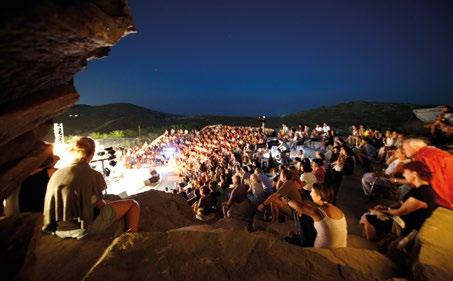
Egon.
Egon:
Nicholas Egon: A Personal Portrait of Greece | 01.07 – 27.07
The Tellogleio Foundation of Fine Arts (AUTh) collaborates with the Municipal Art Gallery of Mykonos Maria Iglessi to present the exhibition Nicholas Egon: A Personal Portrait of Greece. The exhibition features 29 paintings and drawings by Nicholas Egon (1921–2017), dating from 1948 to the final years of his life. The works highlight both the Greek landscape and its people, reflecting Egon’s dual artistic identity: as a portraitist of high society and as a deeply contemplative landscape artist. The artworks come from the donation of Stamatia Komninou and Nikolaos Alexandros Komninos to the Tellogleio Foundation.
Venue: Municipal Art Gallery of Mykonos “Maria Iglessi” – 33M Matogianni Street
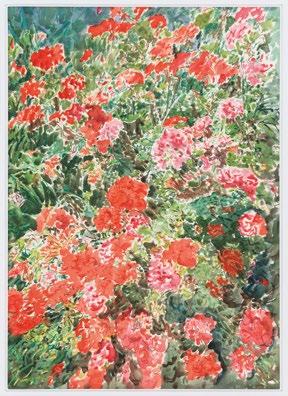



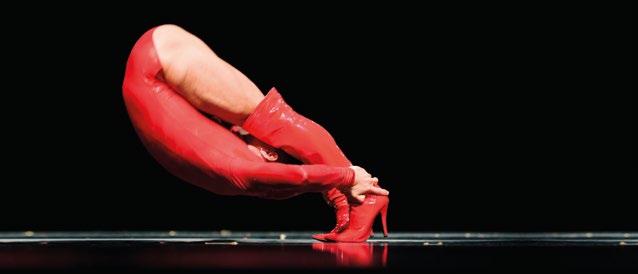
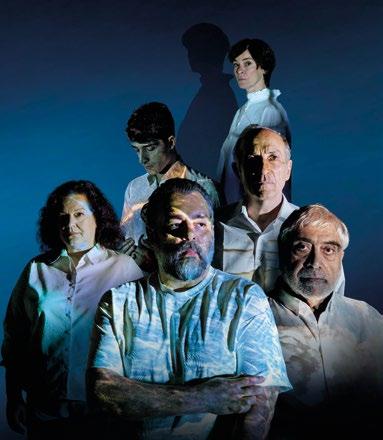
Livia Balazova
www.dancedays.gr
15th International Contemporary Dance Festival | 21.07–02.08.2025
The 15th anniversary edition of Dance Days Chania returns bold.
This year, among many other events, it hosts three powerful female voices who transform experience, pain, and resilience into choreographic language.
Livia Balazova returns to the festival with her fully realized piece on Camille Claudel, shedding light on the dark and lesser-known aspects of the French sculptor’s life. From Morocco, Karima El Aidaoui presents MEKTOUB, a powerful commentary on arranged marriage as a form of “body trade,” seen through her own cultural lens. On the same evening, Iro Konti presents Modulus of Resilience, drawing on real-life testimonies of women to explore how the body carries violence, resistance, and ultimately, survival. More information: www.dancedays.gr

“Archaic Elites: Warriors and Princesses” | 29.06 – 18.10.2025
More than 130 antiquities from 18 museums in Cyprus, Italy, and Spain, in dialogue with over 400 findings from ancient Eleutherna itself. Through objects of daily life, jewelry, weapons, vessels, and ritual utensils, it reveals networks of trade, kinship, and cultural exchange that connected the ancient Mediterranean world—from Crete and Cyprus to Magna Graecia, Etruria, and the Iberian Peninsula.
More information: www.mae.uoc.gr
Museum of Ancient Eleutherna, Mylopotamos, Rethymno 74052
Σύνθετο
11th Andros International Festival | 26.07 – 23.08.2025
The festival opens with a concert by Evanthia Reboutsika (26.07), followed by Vanya by Simon Stephens, starring Giorgos Karamihos (30.07), and Nautodia, a musical performance by Pericles Kanaris (02.08). The Philharmonic Orchestra of MOU.S.A. pays tribute to Thanos Mikroutsikos (07.08) while Foivos Delivorias presents two special concerts: one for adults (09.08) and one for children (10.08).
The program continues with two Epidaurus Festival productions: Euripides’ Andromache (11.08) and Sophocles’ Electra (21.08), as well as the only summer concert outside Athens by Giorgos Chatzinasios (13.08). Young audiences will enjoy the theatrical adaptation of Alki Zei’s classic Wildcat Under Glass (17.08).
A two-day film tribute to Joris Ivens (18 & 19.08), in collaboration with the Andros Film Club, adds a cinematic note to the festival
More info: www.festivalandros.gr
Venue: Open-Air Theatre of Chora, Andros (except for the film screenings, which will take place at Cine Avli, courtesy of the Andros Film Club).


ΝΊΚΟΣ
ΧΑΡΔΑΛΊΑΣ
Αττική: σύγχρονηΜια
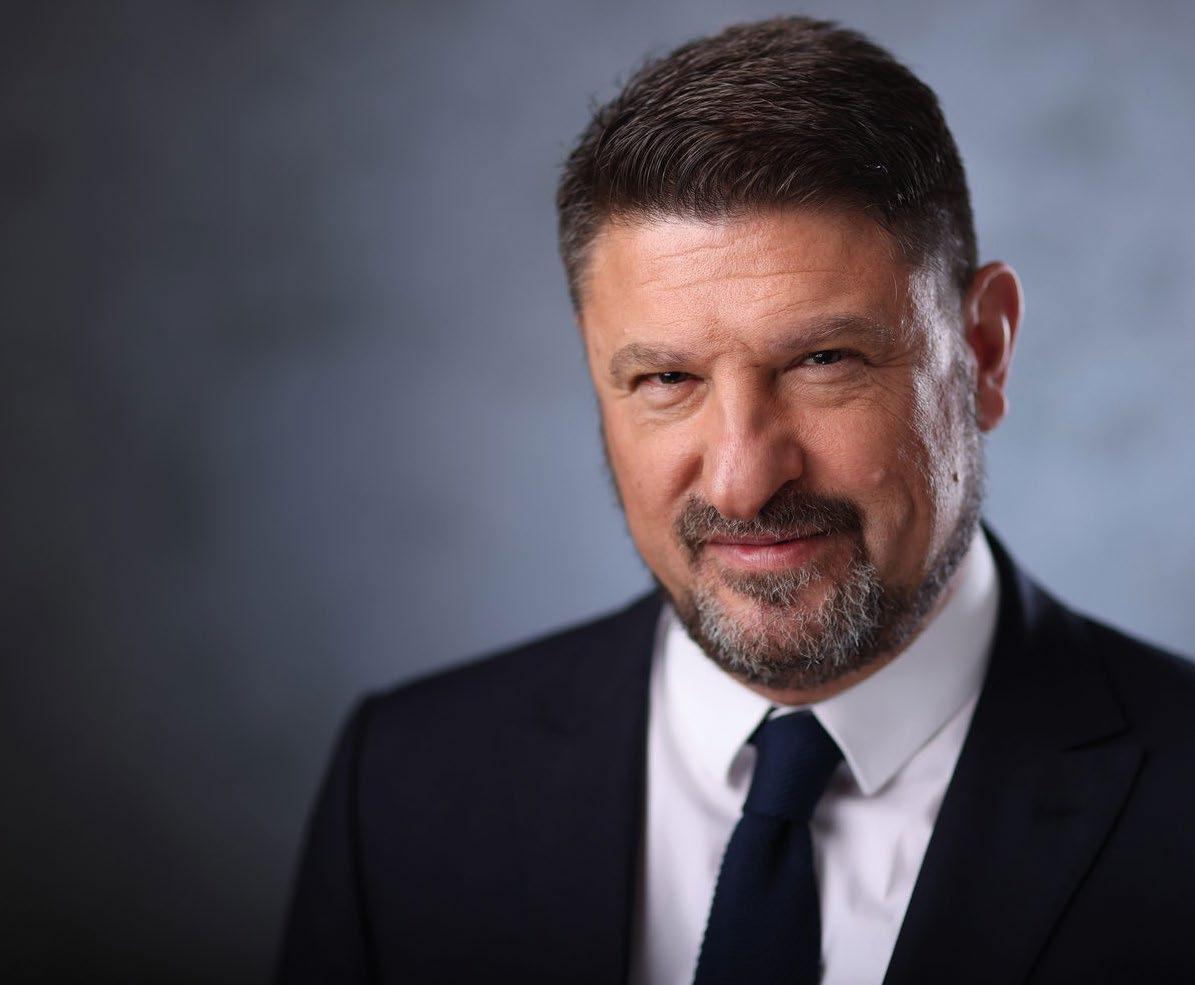
IT IS A UNIQUE OPPORTUNITY TO SHARE WITH YOU, THROUGH THE PAGES OF THE EXCELLENT SEAJETS MAGAZINE, MY VISION FOR THE LARGEST REGION OF OUR COUNTRY: ATTICA. A LAND THAT, BEYOND ITS UNDENIABLE HISTORICAL AND CULTURAL HERITAGE, IS EMERGING AS A MODERN AND PIONEERING TOURIST DESTINATION.
The wider area of Athens is already a landmark for millions of visitors each year, many of whom continue their journey to the islands after spending time here. Our strategic objective for the coming years is to upgrade the infrastructure of our Region, improve the everyday lives of our residents, and elevate the overall tourism experience for our







guests. With more than 280 infrastructure projects either underway or about to begin, we are reshaping Attica’s image and prospects, laying the foundations to further strengthen the flow of international tourism.
Attica already ranks among the most popular destinations in Greece. This brings with it a greater responsibility: to not only maintain but also expand our influence in the tourism sector. The key to the growth we envision is sustainability.
In the Region of Attica, we are committed to implementing a holistic approach to tourism with sustainability at its core. This means that every development plan, every investment, every tourism initiative (and beyond) must take into account three fundamental pillars: the environment, culture, and society. Expanding our tourism footprint both geographically and seasonally is a top priority. We aim to attract more visitors for longer stays and to guide them toward lesser-known but equally fascinating areas of Attica.
We are systematically working to reduce tourism’s environmental footprint by implementing high-impact ecological projects. The Athenian Riviera, the islands of Athens, the wine routes, our authentic neighbourhoods, our gastronomy, contemporary cultural life – these are some of our most treasured “gems.” They are priorities we are determined to showcase. This is why we are rolling out an ambitious program of international outreach, with a strong presence abroad, targeted promotional campaigns, and partnerships with major players in the global tourism market and beyond. We want to be a Region that is widely recognized not only for its many attractions but also as a model of sustainable destination management in the greater Athens area.
At the same time, we are investing in the promotion of our rich cultural heritage in a sustainable way. Our goal is not simply to increase visitor numbers, but to offer authentic experiences that respect and highlight our history, traditions, and unique character. We are promoting cultural exploration throughout Attica, from ancient monuments and museums to Athenian neighbourhoods and contemporary artistic creation, all of which shape our distinctive identity.
Finally, and perhaps most importantly, we are focusing on the social dimension of sustainable tourism. We want tourism to be a source of prosperity for local communities: creating jobs, supporting small businesses, and ensuring that its benefits are shared fairly. Tourism must be reciprocal; it should offer meaningful experiences to visitors while also empowering local societies.
Attica is not just a destination. It is a modern metropolis, a place where past, present, and future converge. With sustainability as our guiding compass, we are building a Region that will continue to inspire and welcome the world, all while preserving its beauty and authenticity.
I invite you to discover Attica as a truly sustainable destination, one that is waiting for you to experience it.
Nikos Hardalias Governor of Attica Region
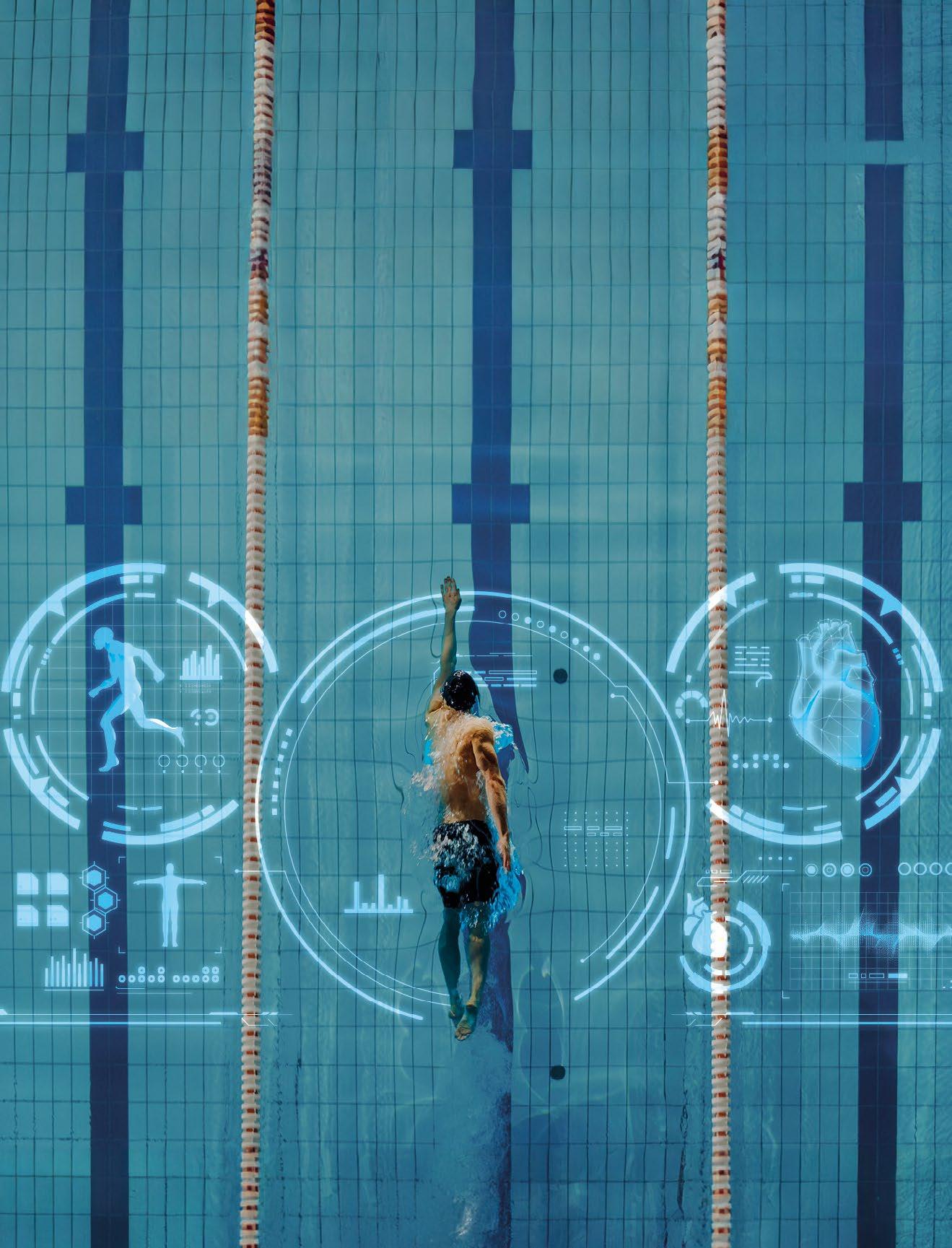


DEANA KARTSAGOULI
IN THE SURPRISING VILLAGE OF KYTHNOS, THE CHARACTERISTIC BLUE AND WHITE OF THE CYCLADES GIVES WAY TO TILED ROOFS, ARCHITECTURE UNLIKE ANYTHING AROUND IT, AND A CAVE - SANCTUARY.
In the image we have of the Cyclades, coastal villages and the typical architecture of white houses with flat rooftops and blue windows dominate. However, Dryopida takes a different path. The village, with a population of a few hundred inhabitants, unfolds in the inland of Kythnos, at an altitude of 190 meters, protected from the strong Aegean winds.
The first thing one notices is its roofs: made of red tiles, they give the feeling of being in one of the traditional villages of mainland Greece, rather than on a Cycladic Island. This architectural phenomenon, the result of both the village's geographic location and its cultural history, has its roots in the return of inhabitants who had migrated to Athens and returned bringing with them the aesthetics and functionality of the tiled roof, which they incorporated into the local architecture.
The cobbled streets, arches, and low houses with flower-adorned verandas are some more features that shape the overall image of the village, where life seems to flow peacefully and without rush.
The small churches stand out, discreetly placed in the neighbourhoods, each with its own story. The church


of Saint Mina, with its wooden-carved chancel and 16th-century icons, deserves special attention. The Ecclesiastical and Byzantine Museum, housed in the church of Saint George, hosts exhibits that testify to the religious and artistic tradition of the area.
At the Folk Museum, located in an old traditional house, visitors can see costumes, tools, and everyday objects from past decades – all preserved with care, as if their owners are about to return at any moment.
Before becoming known as Dryopida, the settlement was known as Syllakas, a name still surviving in the memory of older locals. Its renaming occurred at a time when an effort was made throughout Greece to give various places names with an ancient flavour. The new name refers to the ancient Dryopes (people of the oak), the first inhabitants of Kythnos, whose ancestor was Dryops, son of Priam.
The historical journey of the village is intertwined with the need for safety. Its location, not visible from the sea, was not a coincidence; it was chosen to protect the inhabitants from invasions. The first references to the settlement appear around 1700, although oral history stretches far beyond that.
A few steps from the last houses of Dryopida, a narrow entrance leads to the Katafiki cave. The name is not metaphorical, as it was at times used as an actual refuge. From the Ottoman period to the German occupation, the inhabitants found safety, hiding places, and supplies here.
With natural vaults, stalactites, stalagmites, and impressive geology, it offers an experience one wouldn't expect to find in such a small village. Inside, traces from the time when it served as an iron mine in the early days of the Greek state are still preserved.
In more peaceful times, the cave was even transformed into a theatre. Events and theatrical performances were hosted there, making this underground landscape a cultural landmark.
Register now at the SEAJETS SEACLUB and begin a journey filled with exclusive benefits, gifts and discounts.


SEACLUB is a unique privileged program, specially designed to maximize the benefits of its members with every transaction. Start travelling with SEAJETS and get rewarded on every step of your journey.
Join the SEAJETS SEACLUB in just 1 minute:
1.
2.
3.
1. Visit seajets.com or scan the QR code below
2. Fill in the online application form
3. Welcome to the SEACLUB
Enjoy the benefits!
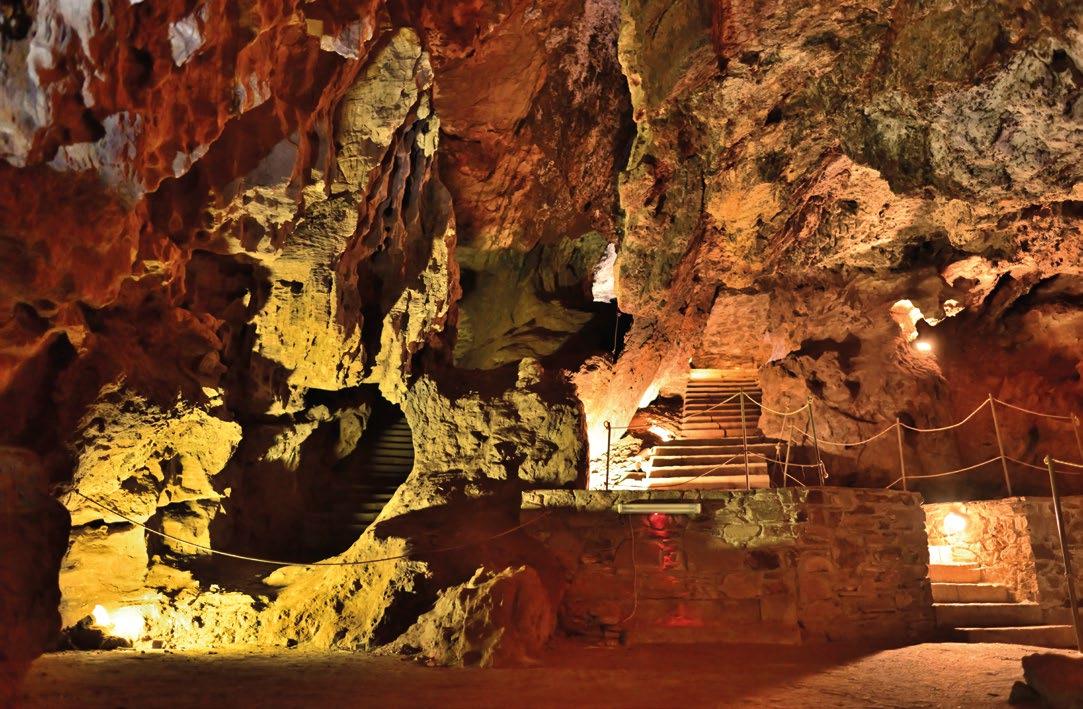
Dryopida is accessible from Mericha, the port of Kythnos, after a 10-minute drive. Its location, near the geographic center of the island, makes it an excellent base for exploration. From here, hiking and road paths lead to Panagia Kanala, the eastern shores, and small seaside villages. Hiking enthusiasts can follow the path to Lefkes or even to the church of the Virgin Mary of Mathias, through routes that alternate between vegetation, stone, and views of the Aegean Sea.


New Destination:
Just 1 hour and 40 minutes!
Kythnos embodies the timeless elegance of the Cyclades. It is known as the island of simplicity. Minimal, bright, and serene. A destination that wins over travelers with its true character: unpretentious, unexplored, and stunning. And now, thanks to SEAJETS, it’s closer than ever.
With daily routes from Piraeus, the Superrunner Jet II takes you to Kythnos in just 1 hour and 40 minutes. A new destination awaits you, perfect for short getaways or extended holidays, for relaxation or adventure.
Discover the iconic Kolona Beach, unwind in the thermal springs of Loutra located right by the sea, and wander through the narrow alleys of Chora and the traditional village of Dryopida, with its tiled roofs and underground cave. Don’t miss a visit to Panagia Kanala, one of the Aegean’s most important pilgrimage sites, nestled among pine trees and the sea. This island is an authentic Cycladic destination, boasting over 100 beaches, hiking trails, and genuine local flavors.
Kythnos is now part of the SEAJETS network and invites you to experience the Cyclades in their most authentic form. With comfort, speed, and daily service.

BY PEPI NIKOLOPOULOU
Where art took root
On Ios, the island of eternal summers – where light stretches across rooftops and the sea gazes at the sky with the wild clarity of the Aegean – a museum has opened that seems to have emerged from the earth itself. The Gaitis–Simosi Museum (GSM) is a dream that matured over decades in the thoughts and heart of Loretta Gaitis. A tribute to her parents, the emblematic Greek artists – painter Yiannis Gaitis and sculptor Gabriella Simosi – it celebrates their deep, personal connection to this land.
Their daughter, Loretta, an architect and museographer, drew inspiration from her parents’ tireless devotion to their art. With perseverance and emotion, she curated a space worthy of their legacy. Built on the hilltop site of Tsoukalaria, offering a breathtaking panoramic view, the new museum – born from a collaboration between Loretta and the Municipality of Ios – is a temple of proportion, silence, and creation.
Construction of the museum began in 2007, following an agreement with then-mayor Giorgos Poussaios and funding from the Ministry of Culture. Yet the path was long and steep. Technical challenges, the island’s remoteness, and administrative delays tested the endurance of the vision. The museum was completed and inaugurated in September 2024, following the persistent efforts of the current Mayor of Ios, Mr. Gikas Gikas: a remarkable stone structure that harmonizes effortlessly with the landscape, honoring Cycladic architecture.


The permanent collection unfolds across two main buildings, like two points in a dialogue between art and life. On the left stands the two-story “Gaitis Building.” There, visitors begin their journey on the ground floor with the artist’s early works and ascend to the upper level – entirely dedicated to the iconic world of the “little men.” Paintings, installations, and painted wood constructions form a parallel reality, where repetition does not mean monotony, but rhythm.
Across 1,600 square meters, Gaitis’ famous “little man” gazes out from every corner toward the open sea –guardian of a story that has finally found its place.
Next to it, almost embraced by it – as in life – an elevated courtyard with a solitary, Doric olive tree leads to the second building. The “Simosi Building” welcomes us as if stepping into an inner sanctuary. The walls are whitewashed. The floor and pedestals, clad in white marble. And at the heart of the space, sculptures – quiet, almost weightless – made of white resin. Εleven works that the artist herself lived to see placed on their bases. Alongside them, older plaster sculptures and delicate collages weaving images of bodily and emotional transformation. A space of contemplation – one that invites you to slow your step, to linger a little longer before the form, the trace, the gaze of time cast in sculpture.
To many, Yiannis Gaitis is the creator of the “legendary little men” – his series of almost identical male figures: silent demonstrators of a time of uniformity, loss of identity, and profound existential anxiety. His art, rooted in the European avant-garde yet charged with Mediterranean introspection, has always been political in the deepest sense – speaking of the individual within the collective, the need for differentiation within the pressure of conformity.
Seven exclusive boutique suites, each with its own private pool and uninterrupted ocean views. Designed for discerning travelers seeking privacy, serenity, and elegance—this is beachfront living at its most sublime.


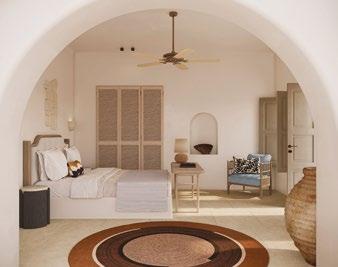

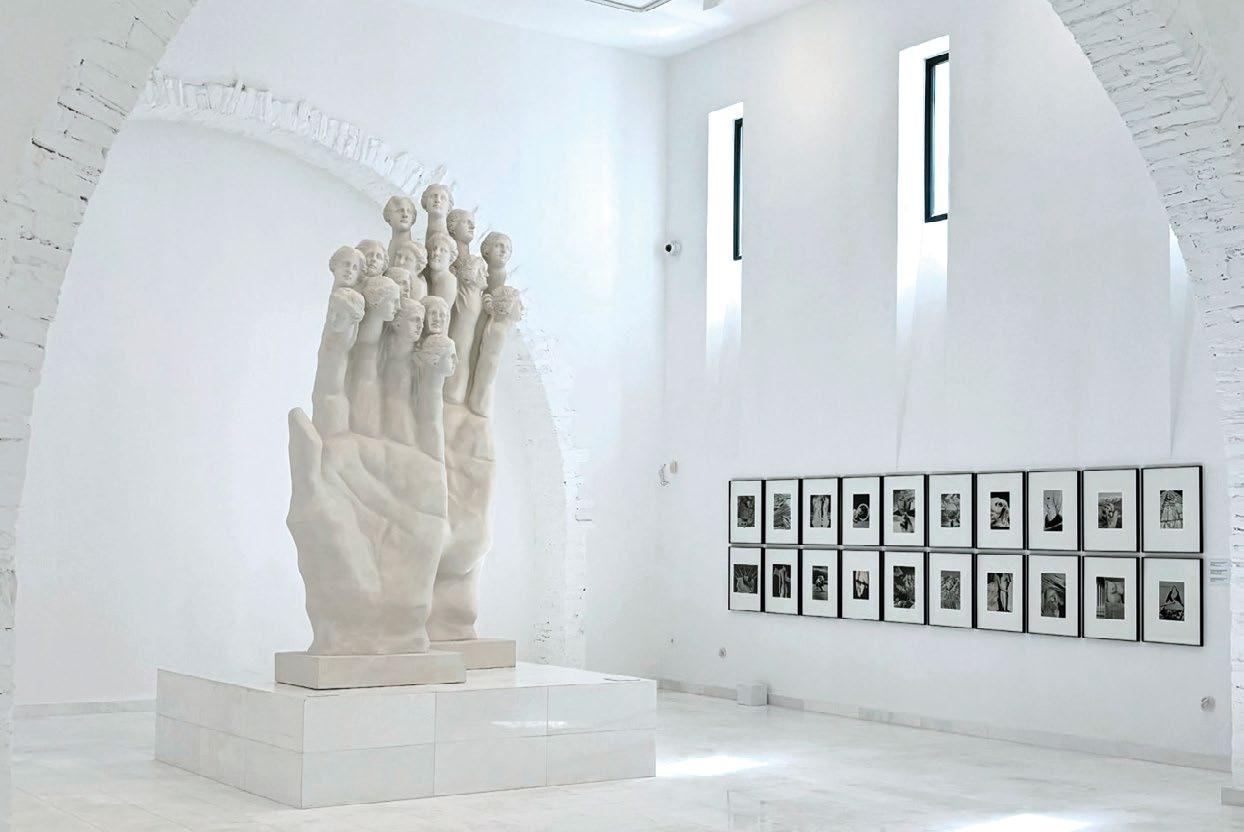
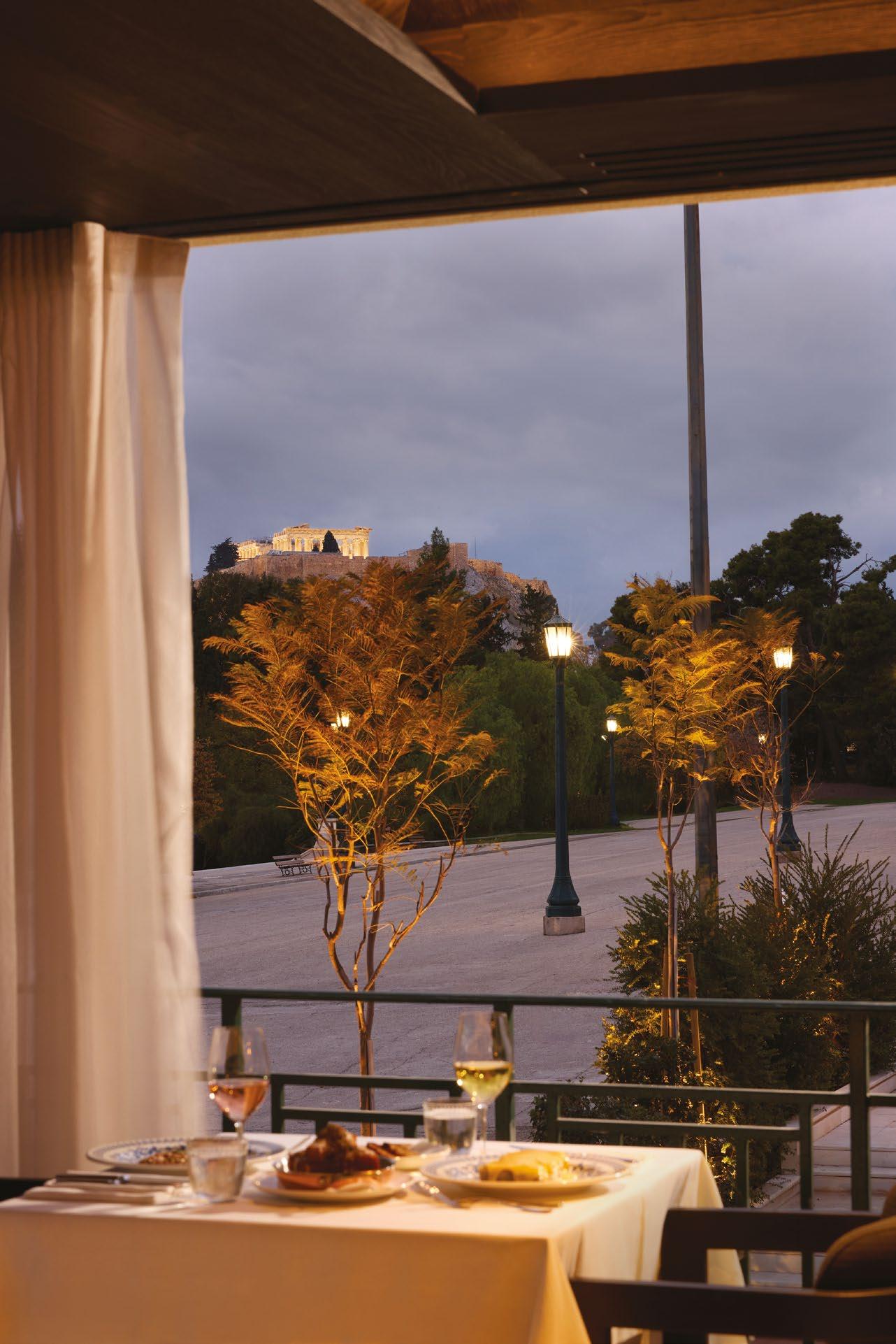

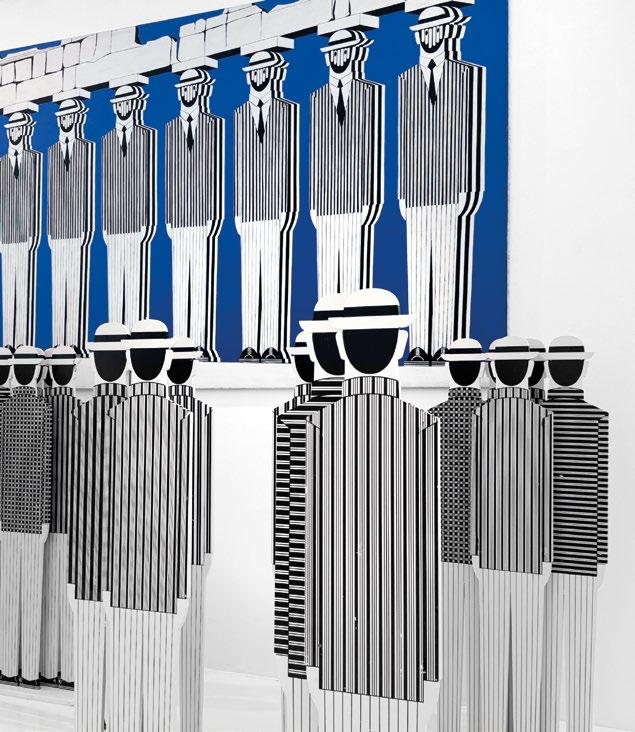
Beside him stood Gabriella Simosi – a rare example of a female artist of her time, a sculptor with a deeply personal idiom and a commanding sense of form. Her work exudes sacredness, gravity, and an internal movement – as if whispering through marble, bronze, and stone.
Together, they were far more than a couple: they were fellow travelers in creation, companions in a life where art was not a profession but a daily calling – a repeated gesture of devotion and purpose. “The same gesture, every day, to the point of exhaustion,” their daughter recalls.
Seeking brought Yiannis Gaitis to Ios. Though descended from Tinos, Gaitis lived and created in Paris, and fell in love with Ios during a trip with writer Jean-Marie Drot. A random stop, a silent pact with the wild landscape: this was how his relationship with the island began. From that moment, Ios was a space of creation, solitude, and essence.
In 1964, Gaitis designed Drot’s house. Soon after, just a few steps away, he began building his own – stone by stone, day by day – for nearly a decade. No architect, no contractors. Only a gaze fixed on the light, the waves, and an internal sense of measure. In that house, still standing across from Drot’s, he worked until his final breath.
For him, Ios became a temple of artistic discipline. The place where Simosi sculpted on terraces overlooking the Aegean. The site of the happiest summers for Loretta Gaitis – “summers that smelled of salt and art,” as she recounts. The place where she decided to build a small white chapel with her own hands, where her parents would finally rest – together, forever, in the land that had become theirs.
INFO
MUSEUM GAITIS - SIMOSSI
84001, Chora - Ios


A captain learns to read the sea the way a poet reads silence

WHICH ISLAND HOLDS A SPECIAL PLACE IN A CAPTAIN’S HEART? WHICH ROUTE STILL GIVES THEM GOOSEBUMPS AFTER DOZENS OF CROSSINGS THROUGH THE AEGEAN? AND IF WE ASKED THEM TO DESCRIBE THE SEA –THE COMPANION OF THEIR EVERY DAY – WHAT WORDS WOULD THEY FIND? WHAT DO THEY SEE ON THE HORIZON THAT PASSENGERS MIGHT NEVER NOTICE?
This feature is a short voyage from the ship’s bridge. We spoke with SEAJETS captains and asked them to share their favourite routes, the most unique corners of the islands, and the nautical phrases that carry deep meaning. They recalled moments with passengers that left a mark, spoke about their own “special child” of the Aegean, and revealed their deep – almost poetic – relationship with the sea.
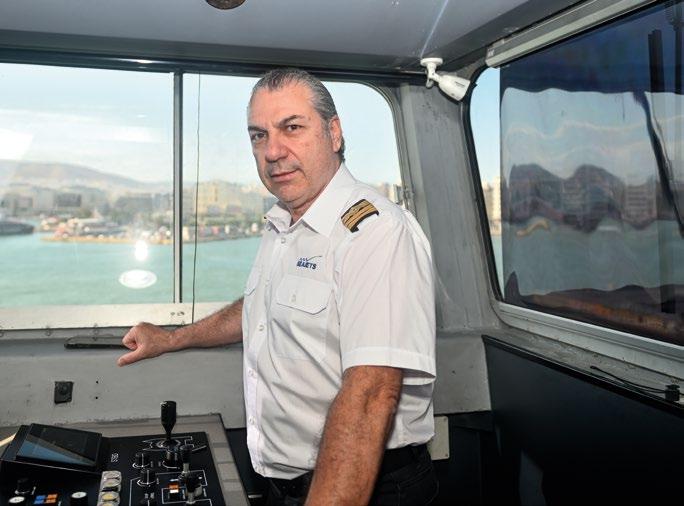
He chooses the route from Paros to Naxos, early in the morning. When the light is still searching, and the sun begins to gently bathe the Cycladic peaks in that golden hue that defies description – you simply have to live it. Just before Naxos comes into view, there’s a turn that always makes him pause inwardly and simply look. It’s the moment when everything comes together: time, sea, presence. And then there are those rough-weather days when the ship weighs the waves and the passengers don’t even realize it. That’s when he reconnects with the sea – not as its master, but as its fellow traveller.
If the sea were a person, he says, it would be a woman. Unpredictable, but fair. Sometimes calm, almost maternal. At other times, wild and demanding. She’s protected him, tested him, taught him. She’s taken his fear, but never his respect. You don’t conquer the sea – you learn to live with her, to listen to her.
One moment left a deep imprint. One summer, as they approached a small island, he saw a grandmother with her granddaughter on the deck. It was the girl’s first time visiting her ancestral island. The grandmother pointed: “That’s where your mother was born… That’s where I was a child too.” And the girl, with a voice clear as water, said: “Then it’s my island too.” A simple moment, but it hit him like a wave. That’s when he was reminded you don’t just transport people – you carry roots, memories, homecomings, and farewells.
Paros is calm, balanced, hospitable. Naxos is like an older sister – strong and generous. Mykonos, explosive – like a child full of energy and brilliance. Syros is the old soul of the Aegean – a storyteller of shipyards and neoclassical grace. And the small islands – Donousa, Schinoussa, Iraklia – are the shy children. They don’t approach you first. You must go with an open heart. Then, they reveal their magic.
Reading the weather is like reading poetry, but signs. And that, he says, can’t be learned from books. It takes years. It takes humility. It takes respect.
«Reading the weather is like reading poetry but signs. And that, he says, can’t be learned from books. It takes years. It takes humility. It takes respect».
Athanassios Ioannou
The bridge’s language connects people and sea. Words like “attention to the bow,” “let go all,” “bring the ramp,” carry responsibility and history. And then there are the words that sound like prayers: “Safe voyage,” “calm seas,” “have a good watch.” They’re not said to fill silence. They’re said to fill the soul.
«His relationship with the sea can be summed up in one word: mother. A nurturing presence that knows when to warn, soothe, entertain, or support you».
Konstantinos
Katagas
We all carry a talisman, a moment that anchors us in the day. For him, it’s the passage past the Church of Saint Demetrios in Ermoupoli. Legend has it that the icon was found there in 1936, after a vision, and a Byzantine church was later built on the spot. Each time he passes, he salutes with the ship’s horn – and feels that the saint greets him in return, blesses him, urges him forward.
His relationship with the sea can be summed up in one word: mother. A nurturing presence that knows when to warn, soothe, entertain, or support you. Coming from a family of fishermen, the sea wasn’t a career choice – it was a continuation. He doesn’t know if he could ever have done anything else. He’s grateful to her the way a child is to their mother – for everything she taught, offered, and shaped in him.
Among countless memories at sea, one moment always brings comfort: the moment of arrival. After long hours at the helm, when the ship reaches the port and the captain sees the passengers – smiling, grateful, reassured – he knows the journey has fulfilled its purpose.
As for his “special child” of the Aegean, although all islands have their charm, he singles out Santorini for its rare warmth, its welcoming spirit, and an open embrace that hasn’t changed with time.
Life aboard is a world of its own. Words change meaning depending on the weather, the tension, the moment. One phrase has become a kind of prayer for him: “Take the gate, let go”. He says it at the end of every embarkation, when he feels the crew has done everything right – and it’s time to move on to the next destination.

For over a century, Accelleron has been leading innovation in turbocharging.
At Accelleron, we're proud to power Seajets exceptional passengers’ experience through our advanced turbocharging solutions. Our cutting-edge turbochargers deliver the optimal combination of performance, fuel efficiency, and reliability that Seajets' fleet depends on, day after day. By enhancing engine power while reducing fuel consumption and emissions, Accelleron technology enables Seajets to maintain its impressive schedules and speeds while minimizing environmental impact. This partnership represents our shared commitment to excellence—providing passengers with smooth, dependable journeys across the beautiful Aegean waters while ensuring operational efficiency and sustainability for the future of maritime travel.
In 1924, the first commercial heavy-duty turbocharger was manufactured in Baden, Switzerland, to increase the efficiency of our customers‘ engines.
Our commitment to innovation has ensured that our technology remains just as relevant a century later. Today, we are a leading provider of turbochargers, digital solutions and services to industries that form the backbone of modern life. We are supporting our customers on their decarbonization journey with technology, expertise, and smart solutions.
Accelleron has an installed base of approximately 180,000 turbochargers and a network of more than 100 service stations across 50 countries worldwide.

«One word stands out on the bridge: Aganta
A small word, but powerful. It means: stand firm, don’t break. ». Konstantinos Nikolaou

Every journey has its peak moment. It might be the light on an island, a difficult weather passage, or a sudden glimpse of the horizon. For him, that moment always comes when approaching Santorini. The black cliffs of the caldera, the white houses overlooking the sea, and that light just before docking – when the sea mirrors the sky and everything falls silent. That is his quiet moment of gratitude.
The sea, to him, is life, companion, mother, and teacher. She’s kept him awake, tested him, guided him. He never truly mastered her – and that’s her greatness.
One unforgettable moment: after a particularly difficult voyage to Piraeus, where the crew gave their all through every mile, they finally reached the port – and the passengers burst into applause. It wasn’t a casual thank-you. It was silent recognition, a shared sense of relief and appreciation.
Sifnos is the most demanding child – gusty winds, tricky currents, unpredictable terrain. Mykonos is the most restless – busy, exposed, chaotic, requiring precise coordination. Syros is the “good child” – welcoming, safe, reliable.
Reading the weather is about watching: the colour of the sea turning greenish, the silent build-up of clouds, birds flying low. Even the moon has signs. As the old saying goes: “Upright moon, captain lies down – tilted moon, captain stands up”. There’s wisdom in simplicity.
One word stands out on the bridge: Aganta. A small word, but powerful. It means: stand firm, don’t break. More than encouragement, it’s connection, devotion, silent commitment. In a ship’s society, it’s the strongest word you can offer – or hear.
And when the day ends, when the sun slips behind the island’s edge, someone whispers a quiet wish: “Have a good watch”, “Let’s have a calm night”. Like a prayer upon the sea.





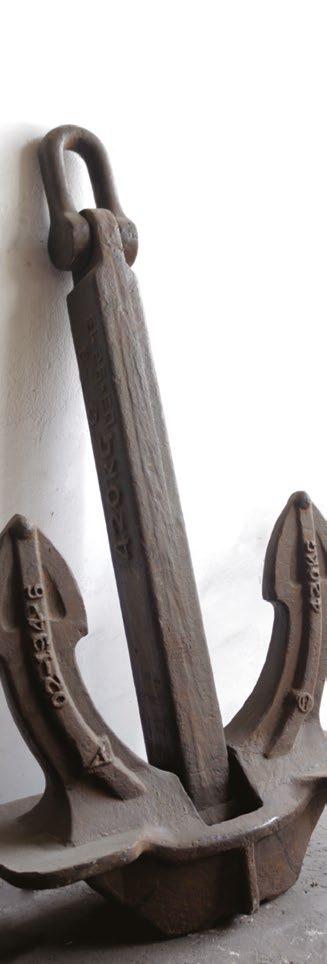
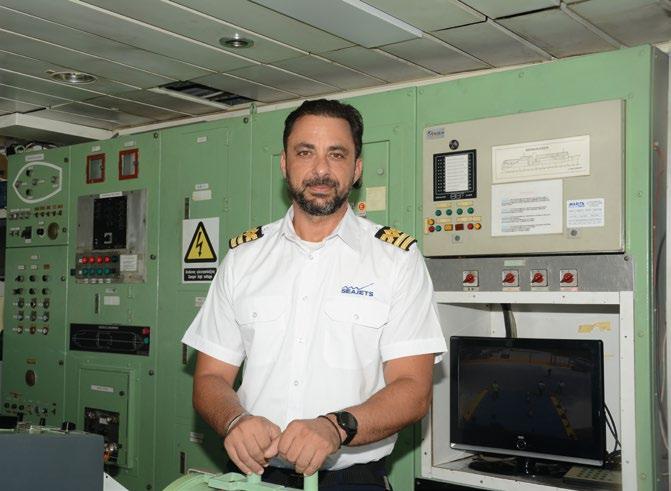
«And when darkness falls, it’s the moon –especially the full moon – that keeps him company, casting its light as comfort over the waves».
Evangelos Roupakas
Sunrises and sunsets never cease to captivate him. And when darkness falls, it’s the moon – especially the full moon – that keeps him company, casting its light as comfort over the waves.
His bond with the sea is existential. She seduces you but also traps you in her nets. You feel both free and imprisoned, balanced between dream and duty.
He has many memories of passengers, but one moved him deeply. An elderly woman, whom he had never met, once sent him a letter. Just a few words – but powerful enough to touch his soul. She closed with: “You are the captain of our hearts”. That phrase has stayed with him ever since.
If he had to name one island, it would be Agios Efstratios. For the past five years, he has built a deep, familial bond with the island and its people – even those he doesn’t know personally. He shares their anxieties and their joy. When bad weather makes docking difficult, he feels the weight of responsibility – but when the horn sounds, he knows the locals feel reassured. Their farewells and the anticipation of the next arrival make this island, as he says, his “special child” of the Aegean.
His experience has taught him to read weather signs passengers may never notice: the moon’s angle, the way seagulls behave, the direction dolphins swim. A flat new moon means trouble; upright means stability. Seagulls floating on the water suggest calm; perched on rocks, a storm may be coming. Dolphins swimming away from a certain direction? Weather is approaching.
On the bridge, words carry weight. “Anchor down”, “heave away”, “let go” – everyday terms, yet filled with emotion and meaning. This is the language of the bridge: a fusion of instruction, intimacy, and unspoken prayer. A world where every word signifies safety, order, and trust.


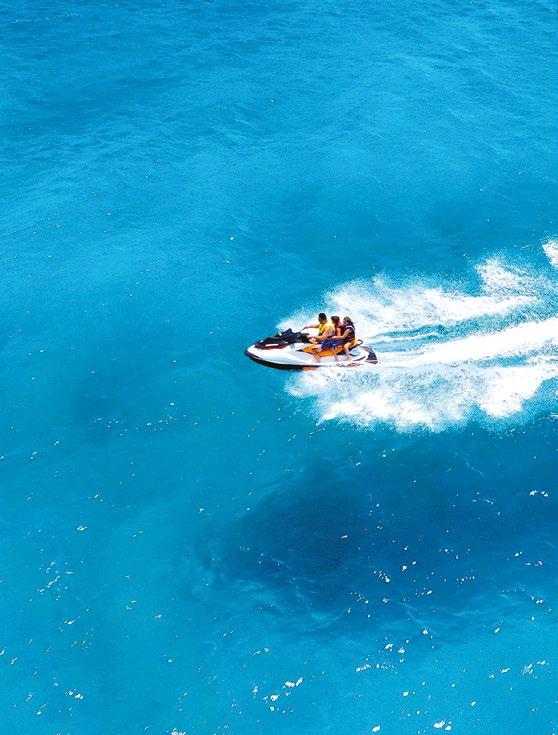
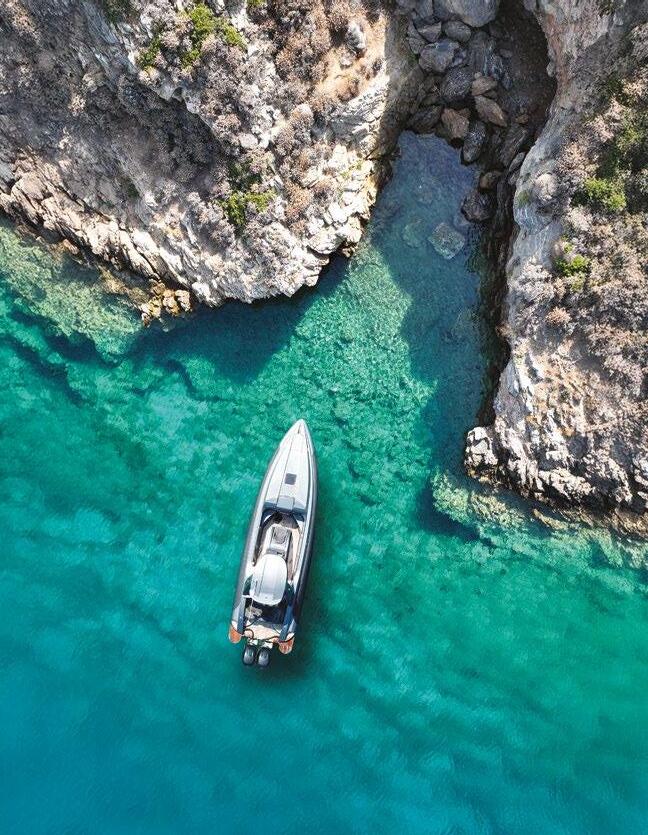

There are summers you’ll never forget. And there are places that seem to be made for those unforgettable summers. In the heart of the Cyclades, three islands stand out: wild Serifos, elegant Sifnos, and enchanting Milos. Different from one another, yet equally captivating, they invite you to discover them.
As you approach Serifos, the landscape feels like it’s come straight out of an old Greek film:

Σίφνος



dry-stone walls, a whitewashed village clinging to the hillside, and beaches that suddenly appear at the end of dusty dirt roads. This is an island that blends rugged Cycladic beauty with absolute tranquility. Award-winning Psili Ammos awaits with its clear, shallow waters, while Ganema offers moments of pure relaxation and carefree feeling.
Atmospheric, serene, lively, and cosmopolitan, Sifnos is one of the Cyclades’ most refined and flavorful destinations. It welcomes you with its picturesque villages, walking paths overlooking the Aegean Sea, and a culinary tradition that has become legendary. From the historic village of Kastro to the charming Artemonas, every step on this island feels like a journey through time.
Milos
The volcanic island of the Cyclades, where the famous Venus de Milo was discovered, feels almost exotic with its turquoise waters, colorful or stark white rock formations, and tales of pirates. In Sarakiniko, you’ll feel as if you’re walking on the moon, while at Kleftiko, you’ll swim through sea caves and passages like pirates of a bygone era. In Klima, a traditional fishing village, you’ll see the brightly painted boat houses carved into the



/
BY PEPI NIKOLOPOULOU
The past as a backdrop for the present

by Ακρόπολη
IN SIFNOS, ABOVE KAMALAFKA, WHERE THE GAZE EMBRACES THE AEGEAN AND THE WIND CARRIES WHISPERS FROM THE DEEP PAST, THE ACROPOLIS OF AGIOS ANDREAS STANDS PROUDLY – THE ISLAND’S ONLY ORGANIZED AND ACCESSIBLE ARCHAEOLOGICAL SITE.
The first excavation took place in 1899, led by the eminent Christos Tsountas. However, systematic archaeological research began in the 1970s under the guidance of Sifnian archaeologist Varvara Filippaki, shedding new light on the island’s historical identity. Since 1997 and continuing to this day, Dr. Christina Televantou – in collaboration with Dr. Georgios Gavalas and a host of researchers, students, and scientific institutions – has been methodically unveiling an acropolis layered with architectural, residential, and religious phases spanning centuries.
The most significant milestone in the site’s history came between 2002 and 2008, with the implementation of a site enhancement and promotion project, funded under the Ministry of Culture’s “Culture” Operational Programme. The result was exemplary: an organized archaeological site featuring structured pathways, informative signage, accessibility for visitors with disabilities, and a small exhibition space. Its overall restoration and museological presentation were internationally recognized with the Europa Nostra award.
In recent years, excavation work – supported by the Municipality of Sifnos – has focused on the interior of a rectangular monumental sanctuary enclosure. These ongoing investigations gradually bring to light precious insights into the religious practices and spiritual life of ancient Siphnians.
& Bring your Chair Festival
Chet Baker.
Here, the land has preserved voices from across the centuries. From Christos Tsountas’ first dig in 1899 to today’s research missions under the aegis of the Archaeological Society at Athens, the Acropolis of Agios Andreas remains a vibrant hub of knowledge and memory – as well as a space for living encounters with the present. In addition to its exhibition and visitor facilities, it is fully accessible to all and each summer opens its gates to art, music, and theatre – engaging the ancient in dialogue with the contemporary.
Today, this landscape continues to be “inhabited” –by art, music, and the spoken word. On July 26 and 27, the children’s play “Glass Mountains and Bone Valleys” will be brought to life here, as part of the Ministry of Culture’s “All of Greece, One Culture” initiative. This is also where the philosophy of the Bring Your Chair – Cozy Festival is rooted. Now celebrating its fifth year, the festival brings to Sifnos one of world cinema’s most significant auteurs: Emir Kusturica. This year’s musical highlight unfolds at the heart of History, at the archaeological site of Agios Andreas, under the light of the August full moon. There, jazz trio Andreas Polyzogopoulos, Giorgos Kontrafouris, and Kostas Konstantinou invite us to an evening of virtuosity and emotion – set against the backdrop of the Aegean and the silence of History – in tribute to American jazz trumpeter and singer Chet Baker. The Acropolis of Agios Andreas becomes a site of experience. A place where Sifnos invites those who wish to listen, to see, to feel.
Special thanks to Dr. Georgios Gavalas, Archaeologist, Ephorate of Antiquities of the Cyclades, for his valuable insights.
More
at: www.bringyourchairfestival.com


Sifnos and the legacy of metal: walking through old mines, learning in a new museum.
In the Cycladic island complex, the need for survival led early on to the exploitation of mineral wealth. Metallurgy developed as early as the 3rd millennium BCE, marking the beginning of the Bronze Age. Archaeometric studies confirm the existence of rich ore deposits on Kythnos, Serifos, and Sifnos, where raw materials were sourced for objects distributed throughout the Aegean.
The transnational project “Landscapes of Metals” (Greece–Cyprus), a collaboration among NCSR Demokritos, the Ephorate of Antiquities of the Cyclades, the Municipality of Sifnos, the University of Cyprus, and the Asgata Community, aims to highlight and promote metallurgical sites in the Cyclades through thematic trails, digital tools, and cultural actions. The three islands were selected for their significant mining activity from antiquity to modern times, and their trails offer great environmental and cultural interest.
If you’re looking for an alternative experience on Sifnos – beyond its beaches and whitewashed alleys – it’s well worth following the traces of the island’s mining history, which dates back to the 3rd millennium BCE.
As part of the European “Landscapes of Metals” programme, two unique hiking trails have been cleared and signposted, revealing galleries, shafts, and slag deposits from ancient and modern mining activity. The first, the Northern Route, begins at Katavatos, passes through areas with signs of ancient and more recent silver-lead ore exploitation, and leads to Agios Sostis, above Kamares. The Southern Route traverses the southern mineral belt, from Faros to the Church of Panagia Chrysopigi. The landscape changes constantly, and the walk becomes an archaeological exploration.
Note: These trails are not designated archaeological sites. Visitors should exercise particular caution due to natural hazards (e.g. mine shafts, tunnels) and avoid disturbing or removing any materials.
Don’t miss the new Mining and Metallurgical Heritage Centre in Artemonas, which hosts exhibits, minerals, digital projections, and experimental constructions created in collaboration with Demokritos. A small yet substantial museum that “reads” the island from the inside out.




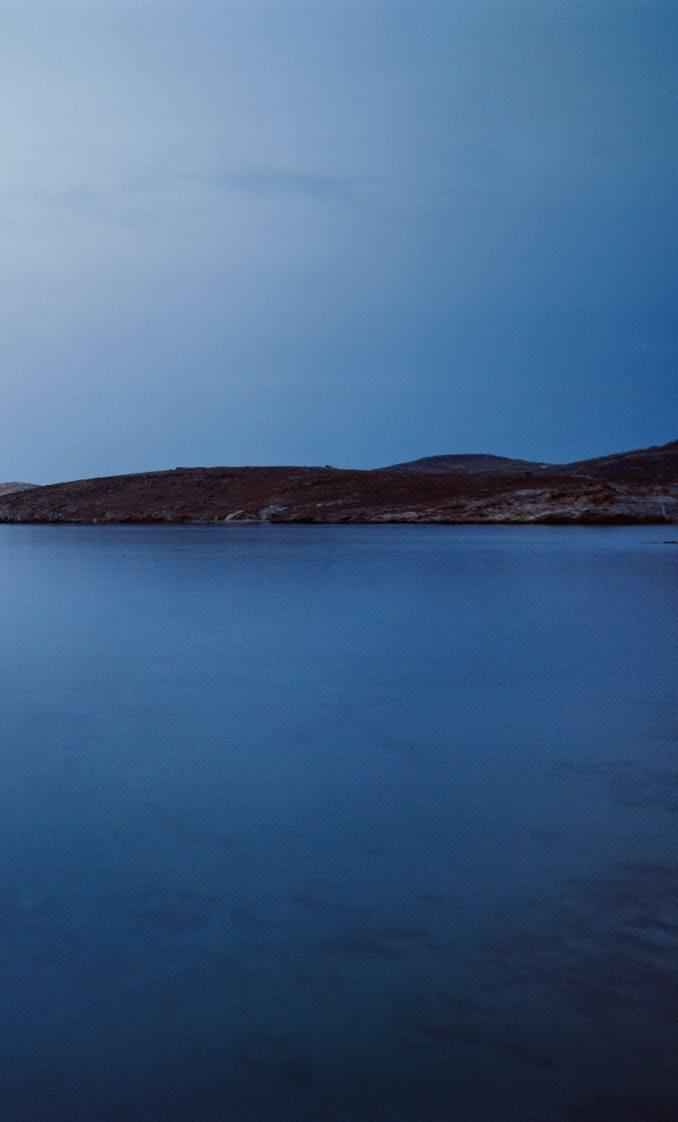
Delos, the island of the gods, the center of the ancient world, emerges through the lens of Erieta Attali in a way that is hard to describe with words. In her photography exhibition Delos: Land Adrift, which opens on June 25 at the Benaki Museum, a new, lyrical dimension of the island is revealed – that of silence, light, and desolation.
Erieta Attali is one of the most prominent landscape and architectural photographers of our time. She began her career in archaeological sites, and today she captures the mythical island of Delos, the birthplace of Apollo and Artemis. For Erieta Attali, the artistic representation of an archaeological site transcends the mere literal act of recording. Simply put, she primarily focuses on the spirit of the place – the spirit of the people who inhabited the Cyclades and the Aegean islands.
"Delos is the center of the world," she tells me, and she is not referring only to its historical significance, but also to its spiritual position on the map of the Aegean. Her engagement with archaeology began early when photography became her first professional tool for recording and capturing archaeological sites.
"From the age of 26, I worked in excavations, photographing the finds and the ancient buildings, and this shaped me as both a photographer and a person. But for me, photography was never just a tool of documentation. It has always had an artistic dimension, a way to express the essence of the place and its history with a different perspective. The 12 years I spent

working on archaeological sites, such as the Macedonian tombs and ancient Greek archaeology, gave me the opportunity to understand the deep connection between light and space with human history."
Thus, photography evolved within her into something more than a mere recording. She began to see photography as a language that could tell stories, revealing the hidden truths of each place.
So, when the time came to work in Delos, this project was a natural continuation of her path. "The island, which was the center of the world for ancient Greece, captivated me again with the same power I had felt all these years in archaeology. Photography here, in this landscape, became the bridge to connect the archaeological history with my artistic approach, giving new meaning to the place and time."
When Erieta Attali travelled from Paris to photograph Delos, the weather conditions would not only alter her plans, but also reshape her artistic approach. " When I arrived from Paris, we encountered fierce winds which actually forced the authorities to stop flights and boats. I had just made it to Mykonos.
Flights were cancelled, ferries stopped, and I was forced to stay in Mykonos," she says. "From there, I started seeing Delos. Just 20 minutes from the island, and I couldn’t go! I watched Delos from Mykonos appear and disappear, depending on the light and the waves caused by the strong winds, the sunset. This specific moment and experience shaped my concept around the entire photography project."
This unique experience in Mykonos became the starting point for her work on Delos. She made the decision to photograph the island from surrounding Cycladic islands – such as Paros, Syros, Mykonos, Sifnos, Naxos and Tinos – capturing the transformations that occurred with the rising and setting of the sun, as well as the singular moment of the full moon.



Attali’s photography of Delos is a reflection of the spirit of the place, the light, and the absence of human presence. "I don’t need to try to depict the desolation. My camera captures the silence of the place,".
I wonder what it was that accompanied her through the endless hours of silence with her large-format camera, with which she photographs with great care and precision. Exposure times can range from 30 minutes to two hours, and it is interesting to imagine how many thoughts, emotions, and observations may arise during this time. What connects the photographer with the landscape and the light for such a long period, in complete stillness and silence, waiting for the right moment to capture the image she so vividly envisioned? "I wait for hours, on the mountain or at a spot from where I can see Delos," says the photographer herself. "Time may pass and nothing happens – but it’s the moment when the light changes, when the place reveals itself."
With the generous support of the French School of Athens, the Benaki Museum, and the Department of Prehistoric and Classical Antiquities of the Cyclades Antiquities Ephorate, Erieta Attali’s exhibition is presented for the first time in Greece and incorporates the unique elements of the island. A revelation of Delos as a living composition of light and shadow, of the past and the eternal, offering a unique visual narrative that bridges history with myth, landscape with the soul of the place.
Curated by Erieta Attali and Lambros Papanikolatos, the exhibition features 25 large scale prints by Erieta Attali, a 7-minute film by Elizabeth Tsouctidi, and a cartographic mapping designed by architect Aris Kafantaris. Exhibition design by Tasos Roidis.
INFO
INFO
ERIETA
ERIETA ATTALI. DELOS | LAND ADRIFT
Benaki Museum, Museum of Greek Culture, Koumbari 1 & Vas. Sofias, 106 74 Athens
Duration: From June 25, 2025, to September 21, 2025




SUPERMARKET | FRUITS & VEGETABLES | DELICATESSEN | WINES & SPIRITS
Welcome to a place where shopping becomes an artistic journey, offering a huge variety of quality products. Indulge in the stunning interior and treat yourself to a moment of respite at our elegant Bar, as our in-store DJ creates an immersive atmosphere.
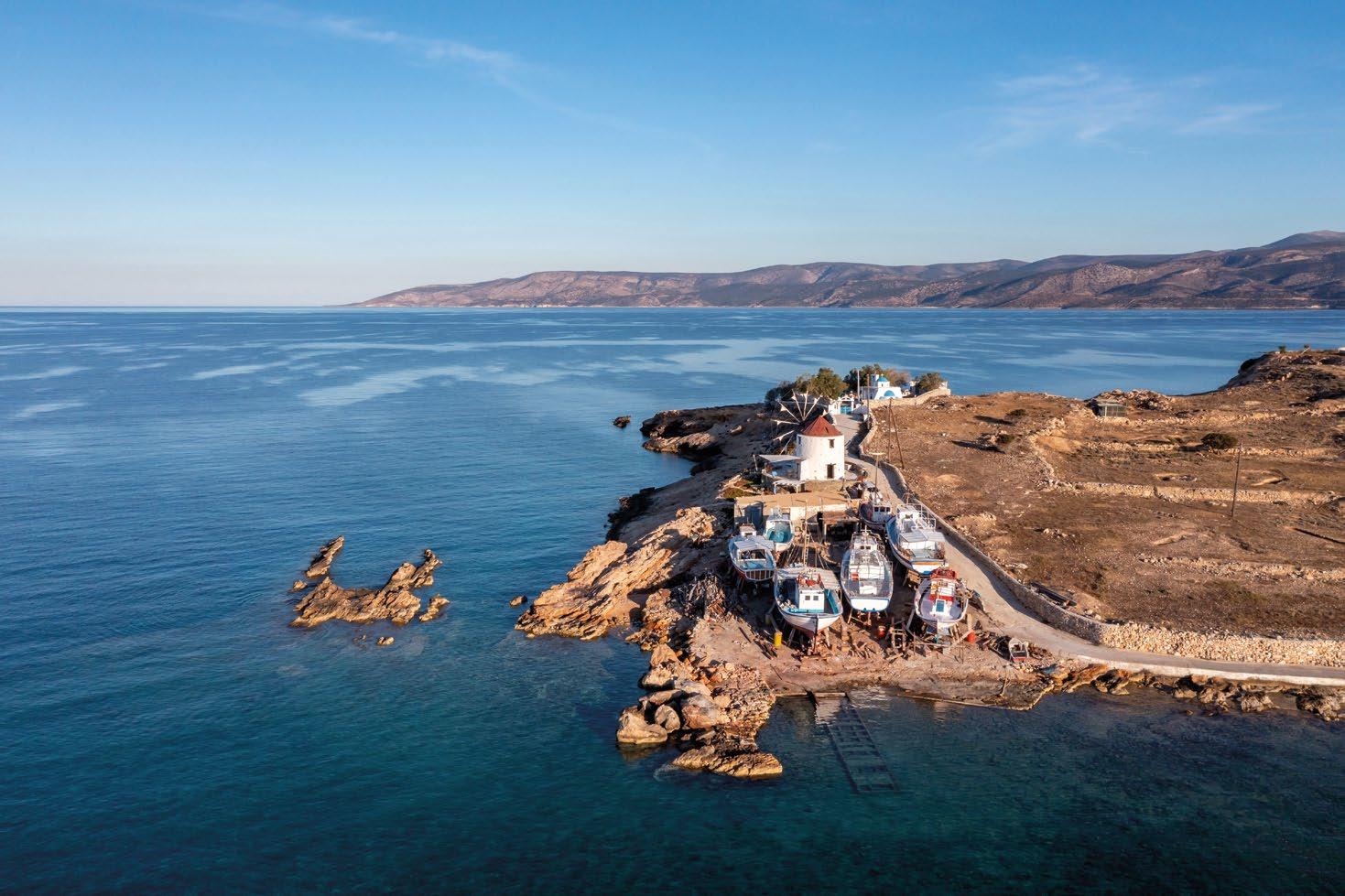

This summer, the Aegean is taking on a new rhythm. With the impressive Tera Jet 2 , we open the fastest connection to Paros and Naxos, bringing Koufonissi, Schinoussa and Iraklia closer than ever. A journey full of island images, on one of the fastest and most comfortable ships in the Aegean.
Board at Piraeus port, and in just 2 hours and 45 minutes, you’ll arrive at the most stylish island of the Cyclades: Paros. Paros needs no introduction. Its natural beauty, the enchanting alleys of Naousa and Parikia, golden beaches, and vibrant nightlife make it one of the most popular destinations in the Aegean.
The largest island in the Cyclades, Naxos is a perfect blend of mountain and sea, history and tradition. From the imposing Portara to the authentic village flavors, the island captivates every

Crystal-clear waters, natural sea pools, and pure relaxation, Koufonisi, small but irresistible, is the ideal escape for those seeking peace. In just 4 hours and 10 minutes, you’ll reach this exotic Cycladic island, known for its golden sandy beaches and turquoise waters.
In 4 hours and 30 minutes, you’ll arrive at Schinoussa, where you can swim at any of its 18 beaches, explore Mesaria village, and hike the unique Harakas Gorge. With its clear waters, welcoming locals, and genuine tranquility, Schinoussa has never been more accessible or more inviting.
If you’re headed to Iraklia, you’ll dock at the island in 4 hours and 45 minutes. Perhaps the quietest island in the Small Cyclades, Iraklia’s charm lies in its simplicity. With trails, caves, and uncrowded beaches, it offers a rare sense of isolation and authenticity. Every inch of Iraklia hides a new surprise: the German shipwreck, Papas Hill, and beaches like Livadi and Tourkopigado, to name a few.
With SEAJETS, summer begins even before your feet touch the sand. It starts on deck, with the sea breeze and islands rising on the horizon. From cosmopolitan Paros and charming Naxos to the hidden gems of the Small Cyclades: Koufonisi, Schinoussa, and Iraklia, each destination is waiting to be discovered.
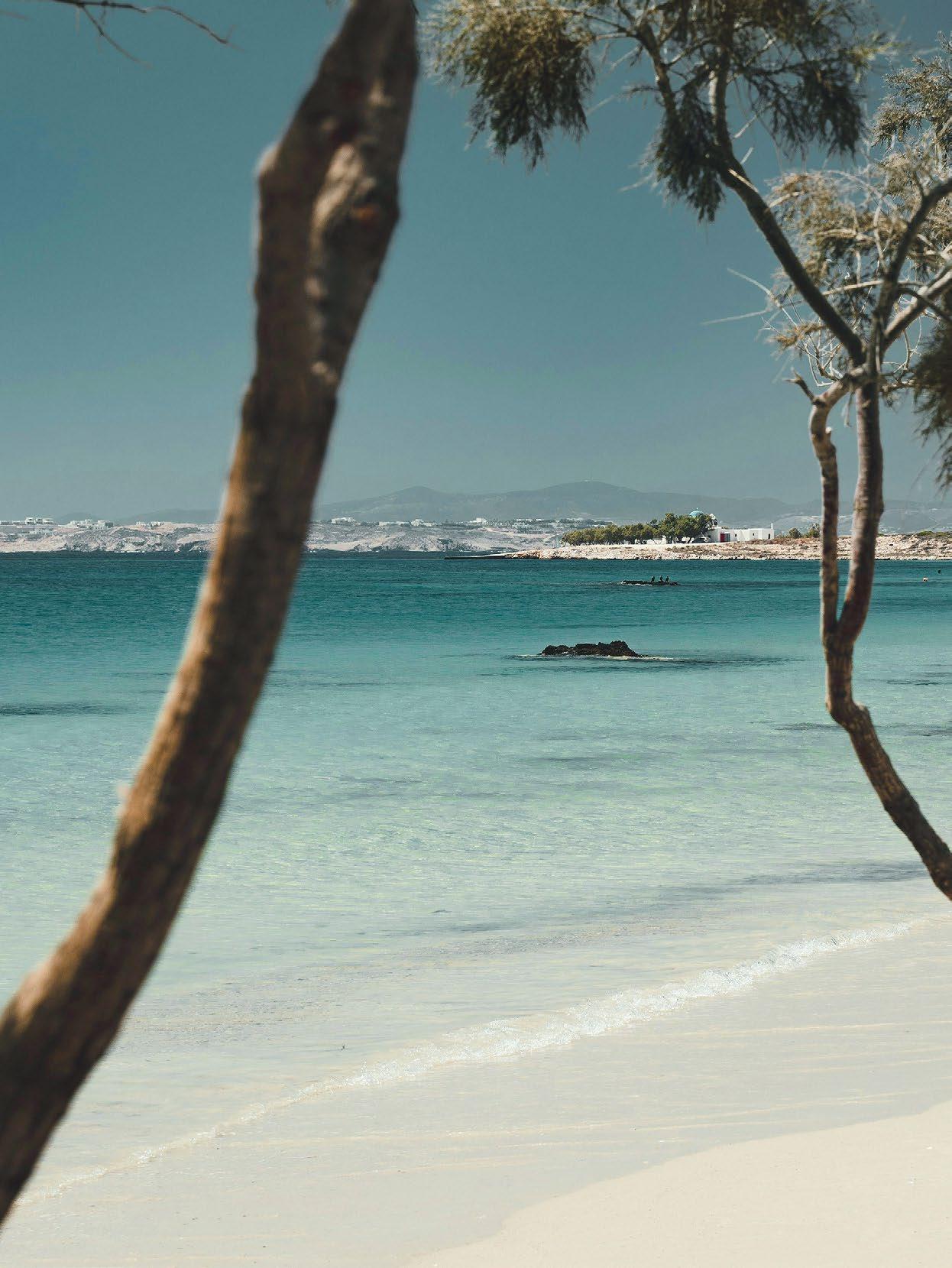

In the morning, you walk on the golden sand of “lace-like” beaches; in the afternoon, you lose yourself in romantic cobbled alleys. At midday, you enjoy fresh fish by the sea; in the evening, you drink souma under the plane tree in the village square, swept away by the rhythm of the ballos. It’s summer, and you are in the Cyclades. Somewhere between mountains and sea. Cosmopolitan and traditional at the same time, this unique island complex is the ultimate destination for those who believe in the art of summer leisure. And right at its center: Paros and Naxos.
Two islands that perhaps best exemplify this balance. Paros, with its vibrant ports and beaches, wins you over instantly.
Naxos, more reserved despite its size, reveals itself gradually – provided you make the effort to explore it. It's best to start from its villages.
Halki – As you move inland, Naxos becomes less touristy. Halki is one of the first villages to welcome you on this transition. Once the island’s capital, today its cultural hub. Cafés in jasmine- and lemon-scented squares, churches with 9th-century frescoes, neoclassical houses. Here you’ll find the Vallindras distillery, known for its citron liqueur, and “Spitiko”, famous for its galaktoboureko.
Apeiranthos – The “marble village” of Naxos stands on the foothills of Mount Fanari, at an altitude of 600 meters. With stone houses, marble-paved alleys, and Venetian-era towers, it keeps its traditions alive both architecturally and culturally. The village is home to five museums and an impressive library, while its women continue the weaving craft through a local cooperative.
Λεύκες, Πάρος. | Lefkes village, Paros Island.
Komiaki (Koronida) – Further north in Komiaki, the landscape and air of Naxos change. The scenery becomes more rugged, more rural. Old houses, Byzantine churches, trails leading to the village of Apollonas, and views over the Aegean.
Lefkes – The most well-known of all Paros’ villages, Lefkes, a former capital, has preserved its stately charm. It remains lively year-round, and though not coastal, it offers unique views of the Aegean and Naxos. Notable is the Church of Agia Triada with its impressive marble bell towers and iconostasis. The narrow alleys, whitewashed houses, and bougainvilleas are ideal for strolls, while the local shops offer handmade goods.
Marpissa – A small semi-mountainous village on eastern Paros, Marpissa stands discreetly between mountain and sea. It bridges the island’s traditional soul with modern tourism without losing its identity. Its history dates back to the Neolithic era, and the Venetian castle on the hill now houses the Monastery of Saint Anthony. Windmills, the Church of Christ, and the Perantinos Sculpture Museum maintain their authenticity.
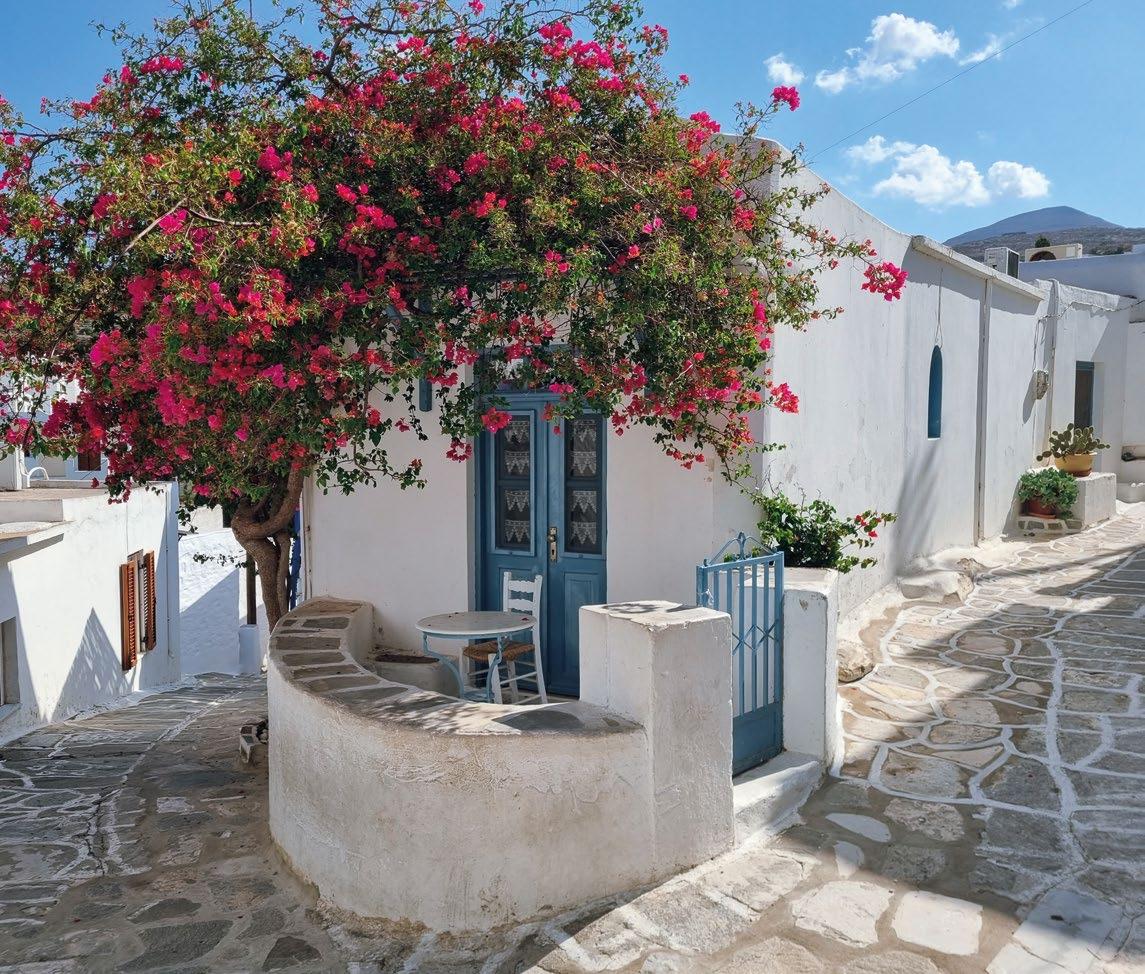
Like

Have you ever thought that an island in the Cyclades could be the other side of yourself? A place away from mass tourism, ready to fill every selective visitor with experiences? If so, welcome to Kimolos! A destination that, despite the times, stands out for its authenticity, without «decorations». Kimolos is a small, authentic island in the Cyclades, known for its pure natural beauty and unique character. Far from the crowds, it offers experiences full of tranquility and authenticity. The Village, with its narrow cobblestone streets, the Medieval Castle, and the Windmills, creates a charming image, while over 80 churches and chapels reveal the island’s rich historical and religious heritage.
Kimolos, apart from its uncomparable natural beauty, is famous for the geological monument «Skiadi» and its crystal-clear beaches, such as Prassa, which have earned international recognition for their cleanliness. Beaches like Rema, Bonatsa, and Mavrospilia with their magical sunsets create unique landscapes. The island’s gastronomy, based on local products, offers authentic flavors. Other notable spots include the beaches of Ellinika, Dekas, Monastiria-Soufi, and many more accessible by boat, such as the Cave of Gerakia, Therma, Agioklima, Kastro, and Athinias, as well as the beaches of Polyaigos, all contributing to the island’s breathtaking scenery. These are just a few elements that make Kimolos unique for those who want to escape the daily routine and seek experiences that will stay with them long after they leave, till they return!



Prodromos – Arched passages connect houses with low doors and flower-filled courtyards. The quiet cafés serve as meeting places. The Byzantine trail that connects it with Lefkes, just 5 kilometers away, is one of Paros’ most beautiful routes, passing through olive groves and vineyards.
Drios Bay – In the bay of Drios in Paros, with its white sand, green tamarisks, fig trees, and clear waters, there are no sunbeds, no music, no loud crowds. Instead, you hear the rustle of the trees and the gentle waves.
Laggeri – A small path, a bit of effort, and suddenly you arrive at a beach that feels forgotten by the world, just 4 km from Naoussa. Golden dunes, crystal-clear waters, and no infrastructure – it offers a nearly deserted experience. Very close lies Stefano Beach, a natural setting of rare beauty, with sea on both sides.


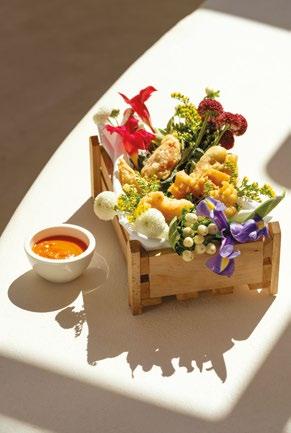


Logaras – A Cycladic beach with a family-friendly feel, next to Piso Livadi. Logaras offers clean waters and sandy shores with some pebbles. Once a peaceful spot for quiet foreign visitors, today it has become more cosmopolitan.
Kalogeros – Hidden on the eastern coast of Paros, it’s a small natural treasure for those seeking a genuine connection with the landscape. Located near Molos, it can only be reached on foot via a short path. The scenery is wild and unspoiled, with golden sand and striking rocks leading to cool, clear waters. The beach has no tourist infrastructure, reinforcing its character as a “natural sanctuary”. Its sand is believed to benefit the skin, and many use it as a natural mask.
Alyko – One of the most distinctive and wild beaches of Naxos, located on the southwestern part of the island, about 17 km from Chora. Alyko is a small, sheltered cove with powdery white sand and turquoise, crystal-clear waters. Its great asset is the rare cedar forest that stretches behind the shore. The area is famous for its small, hidden beaches, such as Mikro Alyko.
Glyfada, Kedros, and Hawaii – Next to Alyko lie the beaches of Glyfada, Kedros, and “Hawaii”, all with fine sand and cool, clear waters due to the western winds. They are easily accessible by road, and the Hawaii beach features the distinctive FBI canteen. For those seeking variety in the landscape, Glyfada offers endless sandy stretch and tranquility. In Kedros, the feeling is one of seclusion: few people, clear waters, shade under the tamarisks.
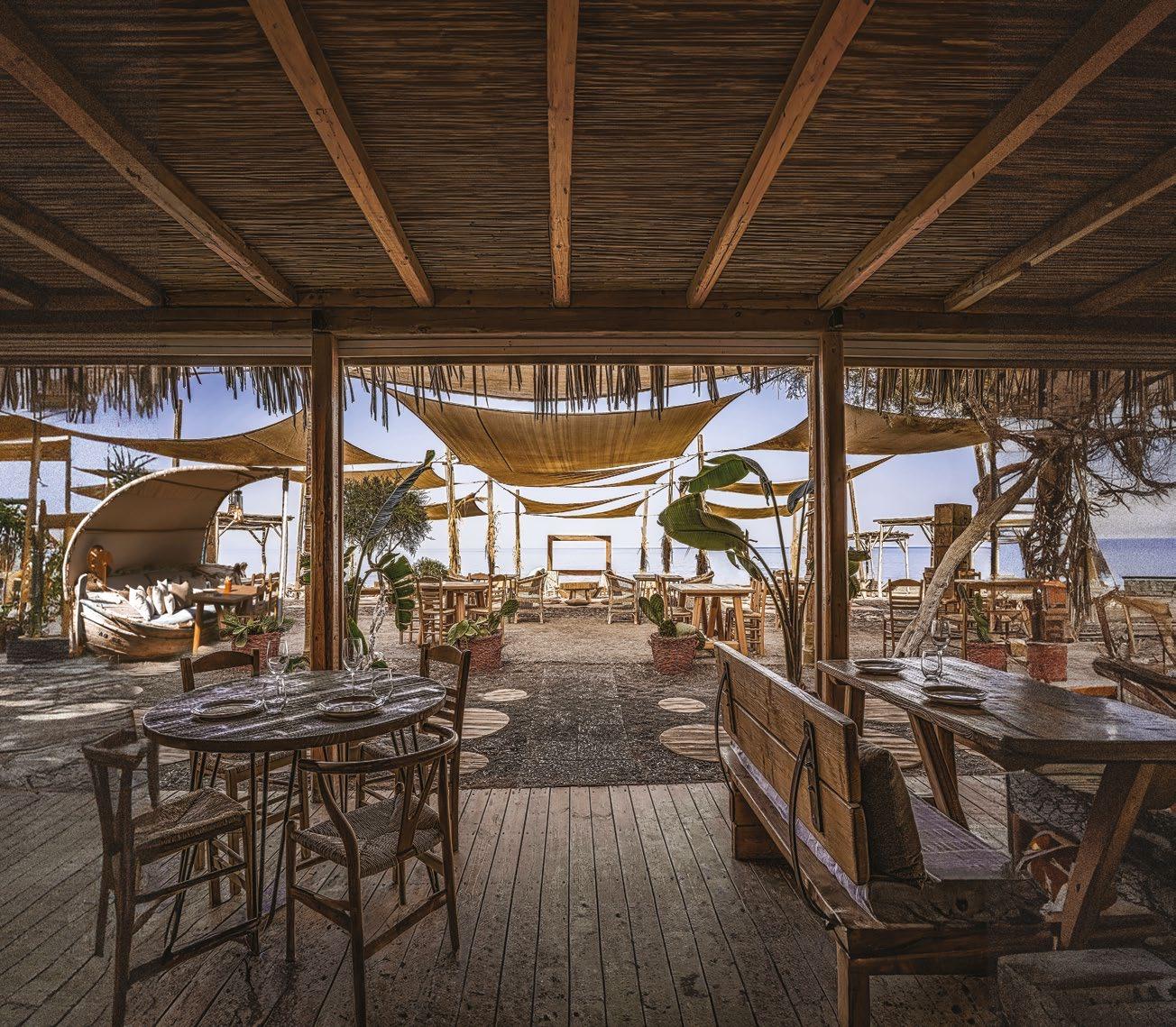


Old

“Do We Match?” That’s the question posed in the Greek title of Celine Song’s new film. At least in the Greek version, since the original is “Materialists” and Madonna’s “Material Girl” plays in the trailer. Celine Song captivated viewers two years ago with Past Lives and now returns with a similar dilemma: once again, a woman caught between two men. Dakota Johnson plays the woman, a professional matchmaker – an occupation that seems to be coming back into style, especially in New York, where everything seems to start. And when one of the choices is Pedro Pascal, we’re clearly in summer crowd-pleaser territory. In the worst case, we’ll have a film full of glamorous names –perfect for an open-air cinema night. In the best case, we’ll get a movie that tries to add its own take on modern relationships, on how people “match” today, and the criteria by which two individuals decide to take –or not take – that big step toward intimacy.
“28 Years Later” by Danny Boyle. When the first lockdowns hit and urban streets were deserted, many of us who had seen 28 Days Later recalled its imagery. A sequel with a different team (28 Weeks Later) came in between, and now, 23 years after the original 2002 film, Danny Boyle returns behind the camera with dystopian sci-fi master Alex Garland writing the script. Viruses escaping from labs, suffocating quarantines, the infected and the fearful – it all hits differently now. And


zombies under the stars of a summer night? Not a bad idea at all. As for the cast: there’s the strongly rumored new James Bond Aaron Taylor-Johnson, Killing Eve’s Jodie Comer, and the one and only Ralph Fiennes
Μυκόνος: Cine Manto, Πάρος: Enastron, Άνδρος: Άλεξ,
INFO «Cine

“The Birthday Party” by Miguel Ángel Jiménez, based on the novel of the same name by Panos Karnezis. A tycoon throws a party for his daughter’s 25th birthday on his private island. He’s played by Willem Dafoe, with supporting roles by Christos Stergioglou and Antonis Tsiotsiopoulos. Set in the jet-set scene of the 1970s, the film promises to blend wild parties with Greek tragedy, and to bring The Great Gatsby into conversation with Festen. Like every summer, every film is a promise waiting to be fulfilled. But heaven forbid everything depended solely on being fulfilled. What kind of life would we live without summers, without films, without promises?
In every corner of the Aegean Sea, when the sun sets and the breeze softens, the magic of cinema comes alive under the open sky. From community courtyards to old schoolyards, island cinemas transform into meeting places, emotional havens, and dreamy summer sanctuaries.
Mykonos: Cine Manto, Paros: Enastron, Andros: Alex, Santorini: Cine Kamari, Syros: Pallas, Kimolos: Cine Kalisperitis, Samos: Rex, Kos: Orfeas, Chania: Kipos
INFO
“Cine Kalisperitis” is the name of Kimolos’s open-air cinema, a small paradise under the stars lovingly set up by the volunteer group “Kimolistes.” Screenings are free and open to everyone – locals and travelers alike. The name comes from the first star that appears in the sky at dusk, which islanders call “Kalisperitis” (Evening Star). Since 2014, from June to September each summer, the cinema comes alive with one or two screenings per week – always with the hope that the weather allows it.

BY MYRIAM PARASKEVOPOULOU
A favourite playlist for your journey at sea
It’s official: you’re on board a SEAJETS vessel and your vacation has just begun. You’re waiting to leave the port with the excitement of a child, watching people pass by. You share glances filled with the same joy – even if you’re headed to different destinations. You turn your head toward the window. Blue. That endless, blessed blue –glistening with just a touch of golden sunlight. The screens may try to pull you back into routine, but your eyes and your mind are craving a detox from everything artificial. You reach for your headphones. Of course – you made sure they were fully charged the previous night.
You scan the QR code, and suddenly you’re swept into a nearly 6-hour playlist. You hit play, grab your coffee, and head up to the deck. Breathe. This playlist smells like summer – like watermelon, sunscreen, sea salt, and freedom. It’s made for your SEAJETS journey, for your beach speaker, for those scenic drives from village to village. It’s perfect for your downtime in the room while picking which photos to post – and yes, it helps you decide on the perfect outfit for the night ahead.
This is a playlist for the journey within the journey. We hope it keeps you great company.



/ Set a new course every day with a sailboat. Discover a new bay daily. Enjoy boat holidays: Are you experienced? Take the helm. Prefer to relax? Choose a skipper.Craving luxury? Opt for a full crew with hostess and chef.
• Cyclades & Aegean Regatta:
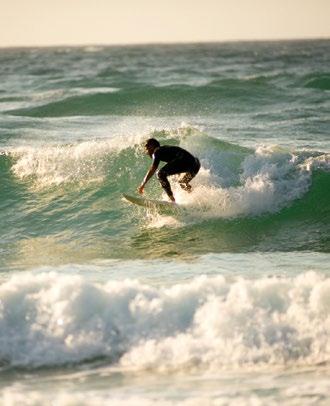
• Ρόδος / Rhodes: Windsurf, kitesurf
wing
/ Windsurfing, kitesurfing, and wing foiling in Prasonisi – choose calm waters for smooth moves or choppy waves for impressive jumps.
•
/ Paros:
/ For milder conditions, try Golden Beach or Santa Maria – ideal for beginners and families looking to try something new.
•
/ Rhodes, Symi or Milos:
RUGGED MOUNTAINS, LACE-LIKE COASTLINES, AND TRAILS STEEPED IN HISTORY –SOUTHERN AEGEAN OFFERS MORE THAN RELAXATION. AGAINST A BACKDROP OF ENDLESS BLUE, EVERY ACTIVITY BECOMES A LIFE EXPERIENCE.
/ Join guided kayak tours through crystal-clear waters for peaceful moments and a close connection with nature.
• Tήνος / Tinos: Surf
/ Surfing for beginners at Kolymbithra beach – start with a lesson or simply rent a board.
/ Sailing races open to both seasoned sailors and competitive beginners.
/ Day Cruises by Boat and Catamaran
•
/ Astypalea:
/ Traditional boats take you to secluded beaches.
• Σαντορίνη / Santorini: Το
/ Sunset cruises with the caldera as a backdrop are unforgettable.
• Πάτμος / Patmos: RIB ταχύπλοα
/ Speedboats (RIBs) take you to Tiganakia, Arkioi, and Marathi.

•
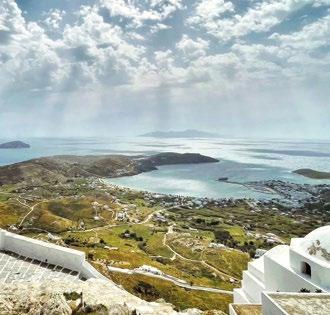
•
/ Rhodes: Το
/ The island of certified trails – Europeanrecognized hiking routes pass through bridges, watermills, and valleys, ending at tranquil beaches.
Νέο highlight: Andros Trail Challenge, με
34 χλμ. / Andros Trail Challenge, with routes from 1 to 34 km.
• Σίφνος / Sifnos: 100 χιλιόμετρα πεζοπορίας ανάμεσα σε ελαιώνες, παρεκκλήσια, αρχοντικά
του Χαλκού. / 100 km of hiking paths through olive groves, chapels, mansions, and ancient Bronze Age mines.
• Tήνος / Tinos: Με πάνω από 150 χλμ.
/ With over 150 km of marble trails, explore traditional villages, dovecotes, and monasteries. Exomvourgos, Volax, and the Ysternia Bay offer stunning routes.
/ For Runners:
/ Kalymnos:
inox. / The climbing mecca – hundreds of routes with Aegean views and inox bolts.
•
/ Karpathos: Ένας
/ An up-and-coming sport climbing destination with lush gorges and 390 routes in a dramatic landscape.
•
(και
/ Tinos Exomvourgos for the daring (and young climbers): 90
/ 90 routes + a kid-friendly sector called “Disneyland” for ages 6–12. The granite masses of Volax and Livada are perfect for bouldering – no gear needed, just a mat.
/ Aegean Caves: Magical
Passageways: •
/ Kastellorizo:
/ The Blue Cave glows with an ethereal blue light and stalactites.
• Aντίπαρος / Antiparos:
/ Its cave dazzles with natural formations like shimmering chandeliers.


/ The Rhodes Marathon celebrates 10 years, offering races for all ages. Tinos Running Experience (21 km): From Volax to the main town of Chora. •
•
/ Naxos: Mountain biking through villages and gorges
/ Ride up Mount Zas (1004m) or follow the circular route of Apeiranthos – 20 km through a marble village.
300
road cycling / Rhodes: 300 days of sun for road cycling
/ Start from Kalavarda, pass through coastal and inland roads, ending at the Old Town or the Valley of the Butterflies. •
/ Leros: Scenic and historic cycling
Between
/ From Lakki to Xirokampos, visit the chapel of Panagia Kavouradena (with an icon inside a crab!) and the 11th-century A.C. castle in Pitiki.

The Superstar II from Piraeus to the Eastern Aegean & Dodecanese.
With tickets starting from €43.70, we set sail for new destinations! The impressively renewed Superstar II will take you to Mykonos, Ikaria, Samos, Patmos, Leros, Kalymnos, and Kos, with absolute comfort, modern aesthetics, and authentic hospitality.
Discover our new destinations:
>IKARIA Ikaria enchants with its harmonious blend of mountains and sea, traditional villages, and genuine hospitality. A place where the celebrations last until dawn!
>SAMOS A magical destination where lush green mountains embrace the blue of the Aegean. The birthplace of Pythagoras offers natural beauty and warm island hospitality.

/ Heraion, Samos

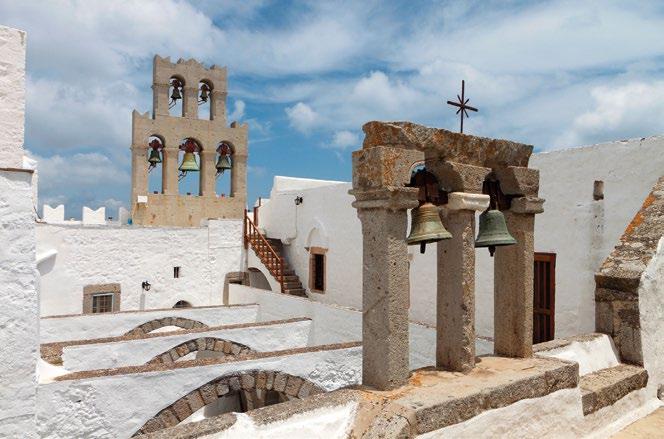

/ Seychelles, Ikaria Aγ.

Λέρος / Agia Marina, Leros
/ Kalimnos Χώρα, Κως / Capital, Kos


>PATMOS Widely known as a sacred island, Patmos has evolved into an elegant, cosmopolitan destination. Chora, the Monastery of Saint John, and the Cave of the Apocalypse are UNESCO World Heritage Sites.
>LEROS The island of Artemis, a hidden gem that blends Italian architecture, neoclassical elegance, and Dodecanese simplicity in a unique way.
>KALYMNOS Untamed natural beauty, legendary caves, shipwrecks, and world-class diving. Authentic Kalymnos captivates those who seek both adventure and tradition.
>KOS History, cosmopolitan energy, and endless beaches with turquoise waters. Known as the island of Hippocrates, Kos offers a rich and multifaceted escape.
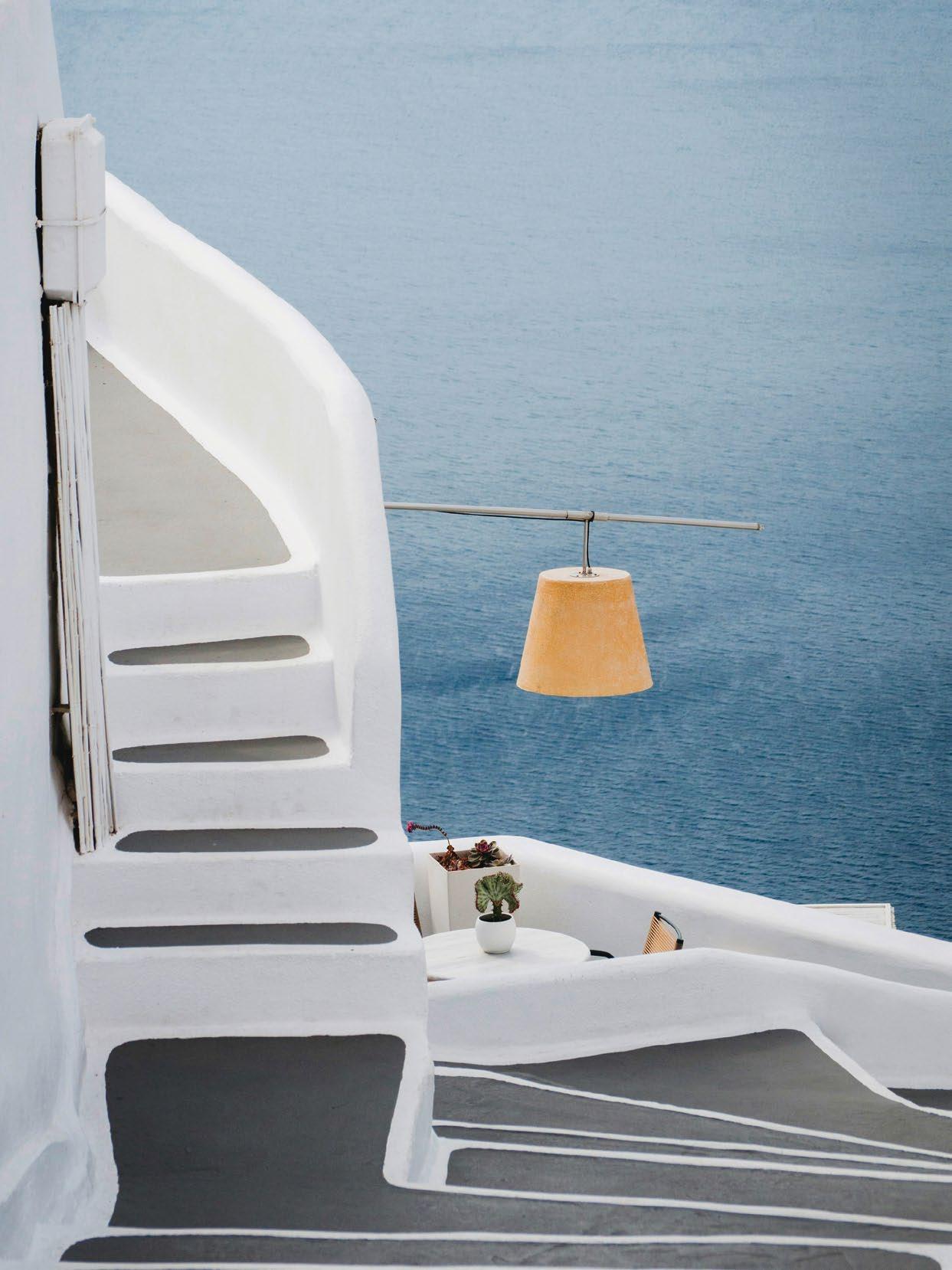
When Jackie Kennedy arrived in Mykonos in 1961, she shone a spotlight not only on an island but on a whole new image of elegance. Since then, in the heart of the South Aegean – in the Cyclades and the Dodecanese –where blue waters meet whitewashed houses and traditional rhythms blend with contemporary aesthetics, the concept of luxury has been constantly redefined.
In Santorini, luxury lives in the taste experiences offered by local wineries and in the sweeping views of the caldera. In Mykonos, beyond the glamor, lie genuine connections with locals and hidden corners of authenticity. Rhodes and Kos combine traditional architecture with modern comforts, offering experiences like visits to local vineyards and participation in cultural activities.
In Santorini, enjoy not only the breathtaking caldera views but also unique tastings at local wineries, with a glass of wine born from the island’s own vineyards. In Mykonos – known for its nightlife and beach bars – luxury is intertwined with authentic, personal encounters with locals.
In Rhodes, one can choose from luxury resorts that harmonize traditional architecture with modern design. In Kos, luxury extends to experiences like wine-tasting tours and engagement in local cultural events. Both islands merge historical charm with contemporary amenities, offering moments that are both refined and rooted in tradition.
Gastronomy and local crafts play a key role in this new definition of luxury. New restaurants, led by acclaimed chefs, focus on local ingredients prepared with contemporary techniques – without losing the soul of the region. At the same time, visitors can discover and take home unique items – from handcrafted jewelry to eco-conscious goods – made by local artisans, showcasing each island’s artistry and heritage, and supporting local communities.
Above all, the true luxury of the South Aegean lies in its “hospitality with heart.” Here, every traveler is a welcomed guest in a place where the authentic meets the refined – and every experience becomes a lasting, meaningful memory.



Having completed seven decades of unwavering presence and cultural contribution, the Athens Epidaurus Festival – this unique summer celebration of the arts – presents an anniversary programme richer than ever before. With over 100 productions, the 2025 edition features major world premieres, prestigious international co-productions, classical texts seen through a contemporary lens, new creations, and acclaimed artists across Theatre, Music, and Dance.
From May 28 to August 30, the Festival unfolds across a constellation of venues: the Odeon of Herodes Atticus, the Ancient Theatre of Epidaurus, the Little Theatre of Ancient Epidaurus, Peiraios 260, the City of Athens Lycabettus Theatre, the Athens Conservatoire, and many more!



Yuja Wang
AS PART OF THE CLASSICAL MUSIC CYCLE, THE ATHENS EPIDAURUS FESTIVAL WELCOMES THREE OUTSTANDING VIRTUOSOS FOR UNFORGETTABLE EVENINGS OF CLASSICAL EXCELLENCE.
On July 6, the supreme American violinist and threetime Grammy Award winner Hilary Hahn joins the Münchner Philharmoniker under the baton of distinguished conductor Andrés Orozco-Estrada to perform Brahms’ Violin Concerto in D Major – a work that will reveal the full range of her technical brilliance and expressive sensibility.
The concert is kindly sponsored by Piraeus Bank.
On July 15, Yuja Wang – renowned for her commanding stage presence and as one of today's most compelling classical musicians – will enchant us with her virtuosity and emotional depth. The Chinese pianist will perform and simultaneously lead the Mahler Chamber Orchestra – one of the world's most esteemed orchestras – from the piano in an evening featuring works by Beethoven, Chopin, Stravinsky, and Tchaikovsky.
On July 19, Daniil Trifonov – the Russian pianist who has surpassed the expectations of classical music connoisseurs with his intricate technique and deep intuition – delivers a unique recital featuring works by Tchaikovsky, Chopin, and Barber that is destined to stir profound emotions among the audience.
A Grammy award winner and recipient of many other prestigious accolades since his youth, the 34-year-old Daniil Trifonov surely ranks among the most astonishing performers in classical music today.



A visit to the Little Theatre of Ancient Epidaurus – a marvel of a site

THE LITTLE THEATRE OF ANCIENT EPIDAURUS, THIS EVOCATIVE, “GENTLE,” AND LESSER-KNOWN THEATRE TUCKED AWAY IN THE AREA OF ARGOLIS, OFFERS A UNIQUELY INTIMATE SETTING FOR THEATRICAL AND MUSICAL PERFORMANCES – THIS YEAR EVEN INCLUDING A FILM PREMIERE. RUNNING FROM EARLY JULY THROUGH THE END OF AUGUST, THE SUMMER PROGRAMME BOASTS A HANDFUL OF EVENTS!
Thēbae Desertae, 4 & 5 July
A stage appropriation of the Antigone myth, set to music performed live on stage. Award-winning writer Kiriakos Haritos draws inspiration from Sophocles’ Antigone to create a folk fable directed by Olia Lazaridou – one that possesses the form of a whisper and unfolds like a dream, eliciting genuine emotions like those that inhabit a song.
Music composition: Jan Van Angelopoulos. Cast: Alexandra Kazazou, Olia Lazaridou, Giannis Psallidakos, Vasilis Tryfoultsanis.
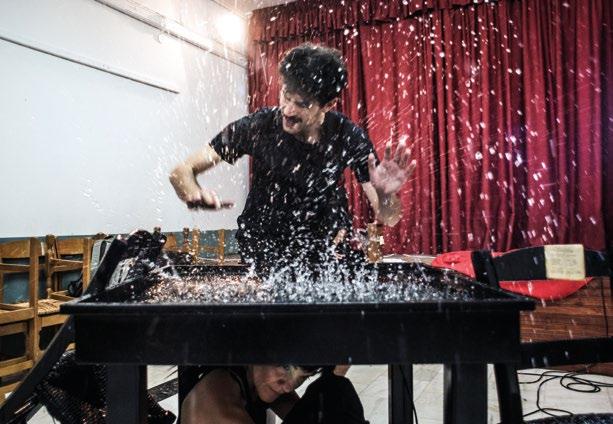
Cries, 11 & 12 July
Uprooting. Migration. Enslavement. These universal and timeless issues are traced within a singular performance that brings together excerpts from ancient tragedies, original texts, and verses from demotic, modern Greek, and world poetry.
Dramaturgy: Taxiarchis Deligiannis and Vasilis Tsiouvaras. Music composition: Alex Drakos Ktistakis. Direction: Christos Stergioglou. Performers: Christos Stergioglou, Giorgos Iatrou. Θήβα
bijoux de kant.
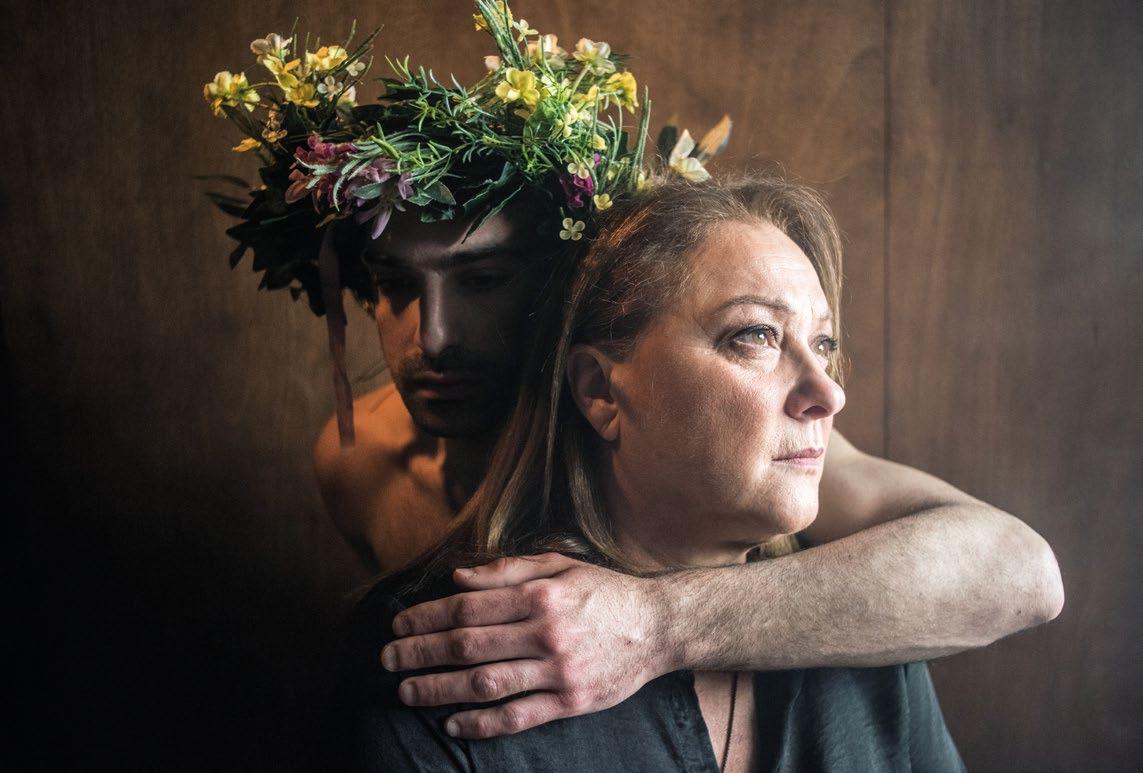
To the Right of the Creek and War Session, 25 & 26 July
Two monologues directed by Giannis Skourletis – bijoux de kant
In To the Right of the Creek by writer Giannis Palavos, we witness a tender portrayal of a father-daughter relationship, inspired by Sophocles’ Oedipus at Colonus
In War Session, writer Aris Alexandris draws inspiration from Aristophanes’ Lysistrata, and makes us privy to an online therapy session where the psychiatrist advises her patients to wholly abstain from sex!
Cast: Renia Louizidou, Harry Charalambous-Kazepis. Chorus: Dionisis Nikolopoulos, Dimitris Oikonomidis, Mariam Rukhadze.

Electra 7, 18 July
A hypothetical matricide, in a mystery that awaits its resolution! A riveting cinematic relay helmed by seven filmmakers: Sofia Exarchou, Christina Ioakeimidi, Babis Makridis, Argyris Papadimitropoulos, Elina Psykou, Alexander Voulgaris, and Neritan Zinxhiria. Inspired by Sophocles’ Electra, this original film, scripted by Panagiotis Christopoulos and produced in collaboration with the Hellenic Film Academy, will have its premiere at the Little Theatre of Ancient Epidaurus.
The film is being realised with the generous sponsorship of PPC (Public Power Corporation – DEI).


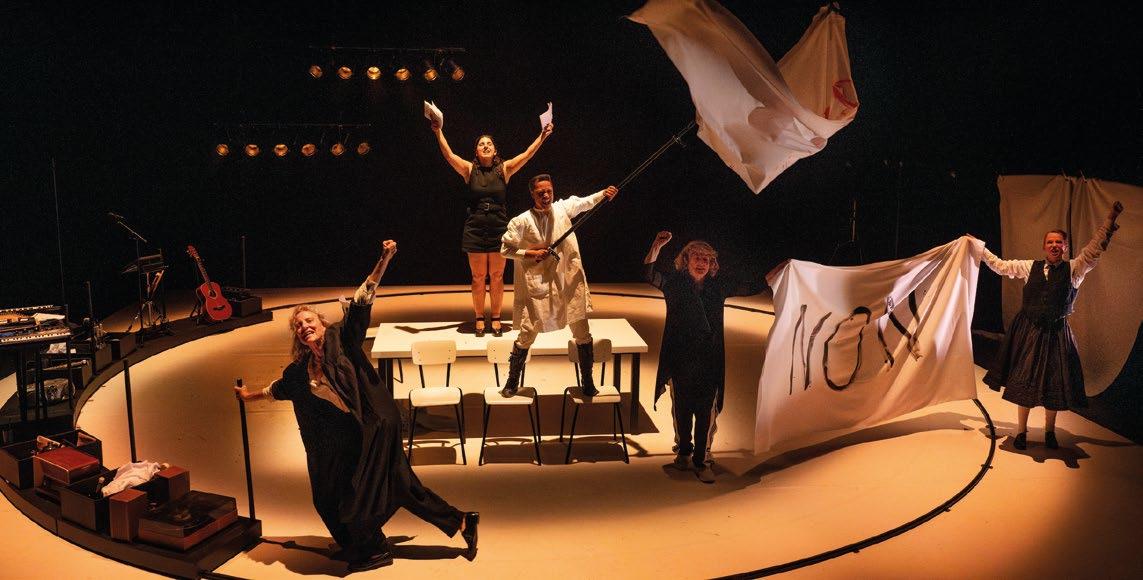
IN THE FRAMEWORK OF THIS YEAR’S ANNIVERSARY PROGRAMME, THE ATHENS EPIDAURUS FESTIVAL PRESENTS “BOOKS ON STAGE,” A CYCLE OF PERFORMANCES FEATURING CONTEMPORARY LITERARY MASTERWORKS BY NOTABLE WRITERS.
The Years, by 2022 Nobel Prize in Literature winner Annie Ernaux, is masterfully adapted on stage by the acclaimed director Eline Arbo.
Five actresses collectively narrate the life of one woman against the backdrop of a rapidly changing world. Growing up amidst the debris of the Second World War, the protagonist breaks free from her middle-class upbringing and, through writing, develops a keen political and social awareness. The work traces her path to emancipation, illustrating how female identity is interwoven with sexuality, class background, and personal aspirations. A woman's personal history thus transforms into a biography of post-war Western Europe.
Co-production Het Nationale Theater and Internationaal Theater Amsterdam
With Greek and English surtitles Peiraios 260, Hall D, 13 & 14 July.
Man Booker International
Daria Deflorian, Francesca Marciano.
The Vegetarian, by Han Kang, 2024 Nobel Prize in Literature, Man Booker International 2016.
The performance, based on scenes from the titular novel, sketches a diagram of violence – physical, psychological, or political – through a family portrait, culminating in a dark allegory of power, obsession, and the struggle of a woman to free herself from both external and internal violence.
Celebrated director Daria Deflorian distils the power of Kang’s masterpiece into a theatrical tour de force. Like a walker on a tightrope, she fuses the most mundane aspects of life with dreamlike, neurotic or even fantastical instances that simply flash with brilliance on stage.
Theatrical adaptation: Daria Deflorian, Francesca Marciano
With Greek and English surtitles
Peiraios 260, Hall D, 13–15 July.

Η Χορτοφάγος / The Vegeterian



Michael Marmarinos is a scholar, director –and perhaps a modern-day philosopher –whose reflections flow like undiluted wine at a symposium. His works are experiences. He is the new Artistic Director of the Athens Epidaurus Festival. We'll discover his plans when the time comes. For now, he’s at the helm of a production titled “ζ – η – θ The stranger. A return to the sources: a visit to three Odyssey rhapsodies”
“I don’t want to talk about Odysseus. I want to talk about the stranger – the one who seeks a place. That’s something different. Odysseus embodies the quality of being a stranger. That’s precisely where I focus my thinking: on the stranger, not the heroic. The Odyssey, for me, is an adventure of being. A journey of the human, the mortal – because we’re talking about mortals and the afflicted. Afflicted figures who nonetheless carry a smudge of divinity on them. Just like strangers. Homer says it clearly and explicitly: the poor and the strangers are messengers of Zeus. That’s why I speak of Xenius (the hospitable), not Odysseus. Odysseus is a figure we easily slot into the fairytale of our minds – charming, of course, but disarmed. And I don’t want to disarm him. I want to rearm him.”
I asked him whether he sees himself as a captain or an epic poet. He doesn’t like questions that contain an “or.” “One doesn’t cancel out the other. One doesn’t exclude the other. I feel many things in my life.”
He did pause, though, at the question of whether summers seem too short and winters endless: “Summers could definitely be a bit longer. It’s a season that’s been wronged – or rather, we’ve wronged it, with our urban lives, our habits, our pace. Summers can’t be endless; only in songs can they be.”
And there, in rhapsody θ of the Odyssey, where the blind bard Demodocus moves the stranger with his song, I asked another question:
Do we reveal ourselves through songs? Do they help us shed the role of the stranger, the mask assigned to us?
“It’s not exactly that every bard moves us with their song. Yes, many songs touch us – mainly because they connect us with something of our own, with ourselves, in a way that’s indescribable. That’s what a song is: a kind of grease. A slippery thing that throws you to a place you thought you didn’t belong. If you think about it, our life is a chain of memories from songs. Link them together, and you map your life. Your whole life – only through songs.”
I pressed the question: Is the director a captain? “You know, a performance is like a sailing trip. And that means, up there, because people’s lives are often in crisis, nothing is simple. Time is limited, movements must be precise and synchronized. To have a good time, you first have to go through difficulty – and be
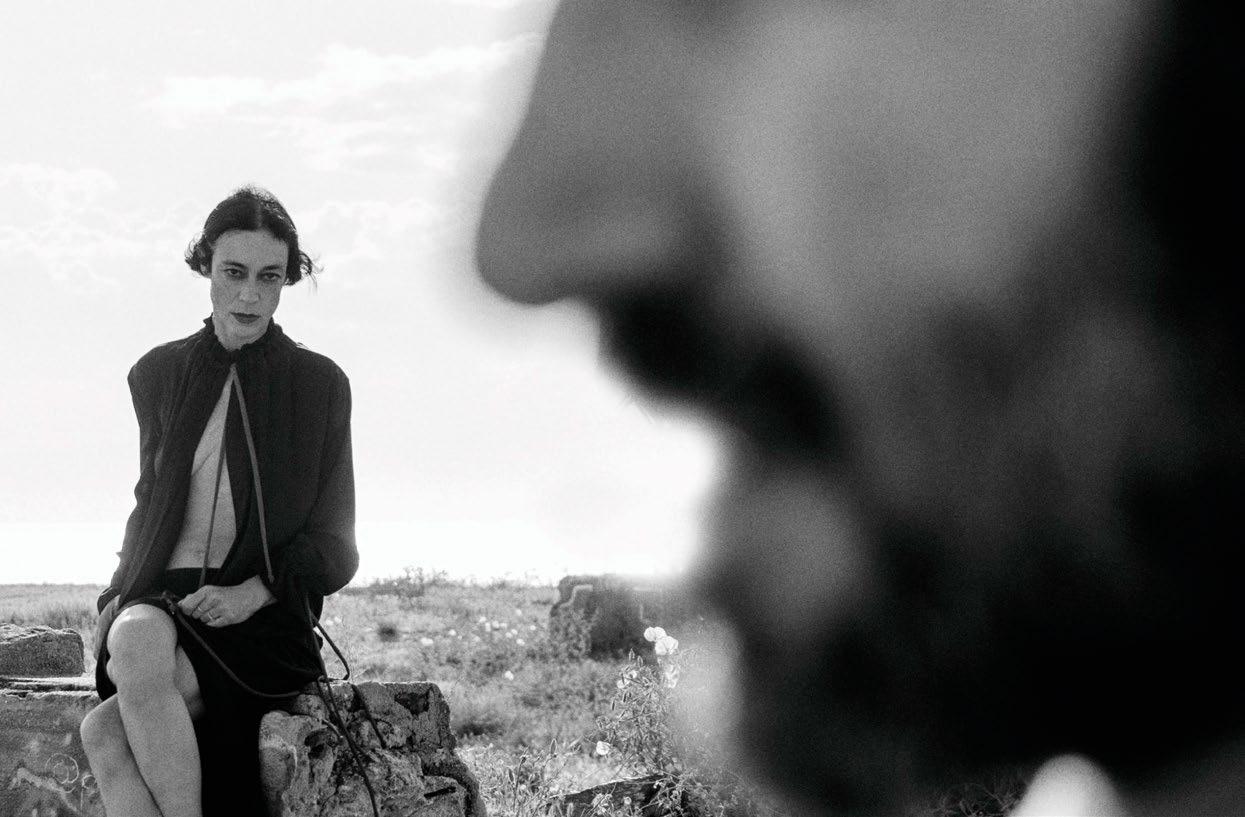
by












able to turn that difficulty into something beautiful. Fortunately, that almost always happens. And I consider that luck – though it's luck I can, to an extent, provoke. Because I can choose the people who will be with me on this ‘voyage.’ That’s very important: these souls, with their generosity, are the ones who allow you to do what you do.
I have excellent collaborators. From these collaborations, meetings have emerged with great potential and a spirit of genuine coexistence. The stranger in the Odyssey says it in other words: the guests in the hall, seated in rows, listen intently to the bard. The tables are full of bread and meat. That atmosphere, that condition, is – truly, I believe – the most beautiful thing there is.”
– The Aegean Sea, Michael... who does it really belong to?
“Ah, don’t make me say the Aegean belongs to its fish – because Homer says that too. He speaks often of the 'fish-laden sea,’ and of course, he means mainly the Aegean.”
– Are there elements in these rhapsodies you were eager to share with us?
“What you will see… I can’t say more. But you will see it. And when you do, you’ll also see what I wanted to share – because it cannot be hidden. That’s what’s fascinating about these things: they are inexhaust-
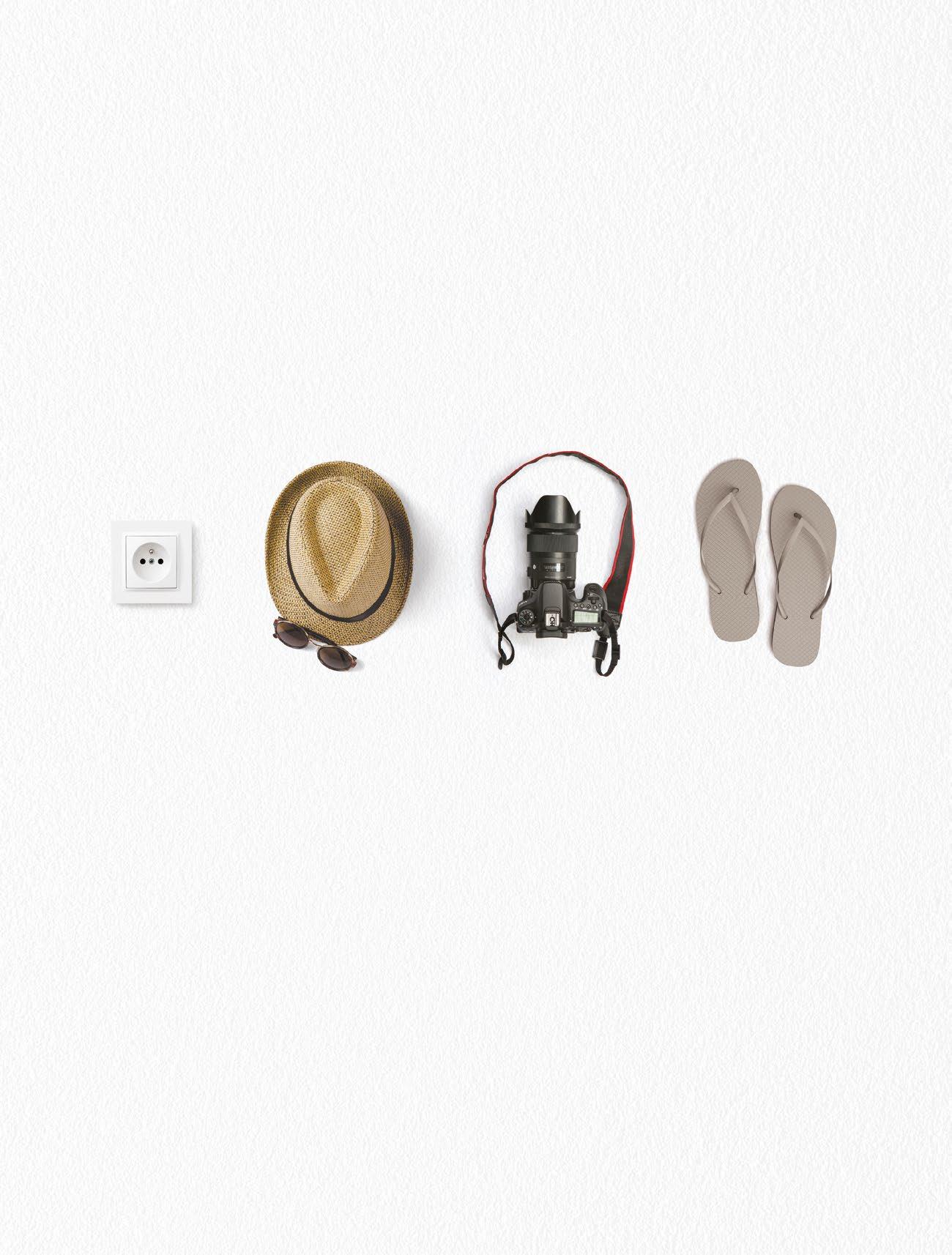
RENTAL & CHAUFFEUR SERVICES

by

ible. We focused on certain aspects, certain areas –like rhapsodies ζ and θ – where, I believe, we are the first to present a specific observation. It happened to me too, while reading, to suddenly exclaim: ‘How is it possible we hadn’t seen this? That we hadn’t noticed this riveting plot, this intrigue of events?’”
Michael Marmarinos has become identified with the Aegean – not for its archetypal beauty, but for the hardships it gifted him.
“The Aegean fascinates me as a sea – perhaps because I know it better. It’s the one I’ve suffered in more than any other sea. That’s what I love, mainly. But it has nothing to do with the place. An Odyssey can happen on any sea – and, of course, on any land.”
He does not feel like a stranger in this epic we call life. “I simply travel through it. It hasn’t cast me ashore – I’m sailing. Sailing in the sense that I’m holding the helm and turning it this way and that. You know… I’m at sea.”
INFO ζ – η – θ The stranger | A return to the sources: a visit to three Odyssey rhapsodies
National Theatre of Northern Greece – Cyprus Theatre Organisation Ancient Theatre of Epidaurus: July 11–12, 2025 at 21:00
As part of the Athens Epidaurus Festival.




ONE FOR EVERY DAY OF THE YEAR – OR CLOSE TO IT. THE CHURCHES, MONASTERIES, AND CHAPELS OF THE LARGEST ISLAND IN THE NORTHERN SPORADES BLEND HARMONIOUSLY WITH THE ISLAND’S UNIQUE NATURAL BEAUTY.
Perched on steep and rugged cliffs, nestled in the endless blue of sky and sea, and embedded in earth and stone as if they sprouted from Skopelos itself, these sacred places emanate a deep and primal connection with the divine. It feels as though nature and humankind silently and gracefully joined forces to create these small places of worship – refuges for any traveler or wanderer seeking comfort and spiritual uplift through prayer.
Estimated at around 365 in number, one for each day of the year, Skopelos’ churches and chapels are scattered across the island. A simple walk through the island’s main town, Chora, reveals more than 120 of them, with that number rising even higher when you include the 15 beautiful monasteries nestled in the surrounding hills.
These sacred sites are a testament to the deep religious devotion of the island’s people and to the prosperity brought by its maritime tradition. Many were built by seafarers, seeking divine protection for their loved ones.

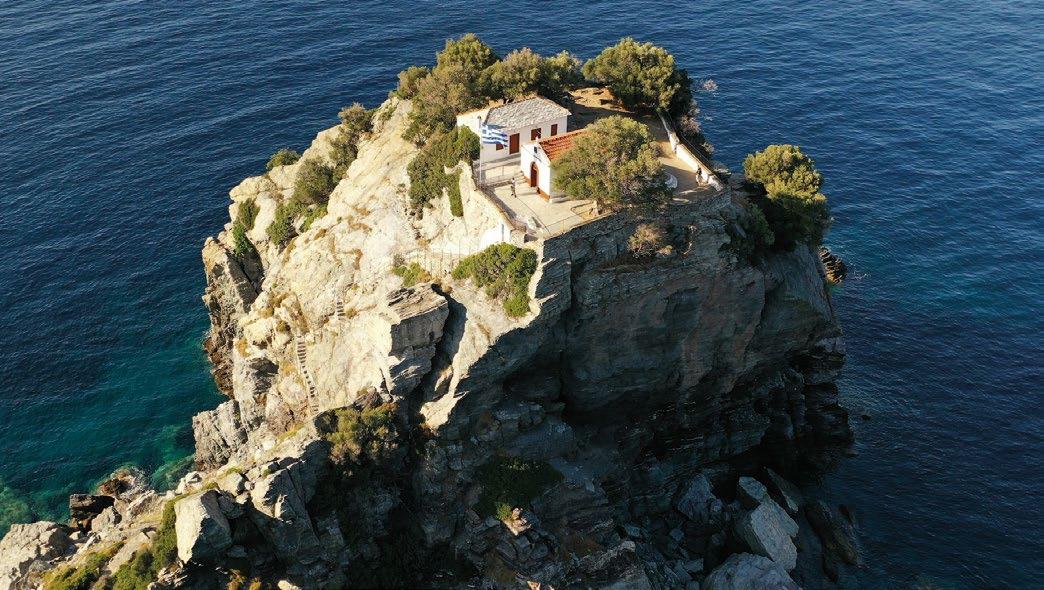
Most of Chora’s churches date back to the post-Byzantine era, including the island’s most iconic one – Panagitsa tou Pyrgou. Built atop a rock where a Venetian fortress once stood, this small church greets visitors as soon as they arrive at the port of Skopelos.
Although reaching it requires climbing 60–70 steps, the path is relatively easy, and once you reach the top, you’ll be rewarded. The view over the town – especially at sunset – is breathtaking. Next to the main church, there’s a small chapel dedicated to All Saints.
Carved into the rock, 106 steps lead to St. John at Kastri, with the Aegean Sea spreading out in front of it. The dramatic contrast of grey cliffs and turquoise beaches makes for a stunning setting – so stunning, in fact, that it was chosen as a filming location for the Hollywood movie “Mamma Mia!”, starring Meryl Streep.
According to tradition, a fisherman from the nearby village of Glossa used to see a mysterious light shining from the top of the sea rock every night. One night, he dreamed of a woman who revealed that an icon lay up there. When he climbed the rock, he found the icon of St. John the Baptist. Though he tried to take it home, the icon kept returning to its original place – so a chapel was eventually built right there, 100 meters above sea level.
Just outside Chora, on the road to Stafylos, lies the small church of St. Riginos, the patron saint of Skopelos. Tradition holds that the saint was martyred here in the 4th century. The church was built in 1728 over his relics, atop the ruins of a Byzantine monastery. Every year, on February 25, the saint’s feast day is celebrated with a grand procession and local festivities.



























Located near the waterfront of Chora, the Panagia Eleftherotria stands out thanks to its stunning architecture – a favorite among both locals and visitors. Built in the 18th century, the church is especially noteworthy for its embedded sculptures, both ancient and Byzantine, inside – something unique on the island.
Just a few kilometers from the town lies one of Skopelos’ most cherished monasteries – Timios Prodromos, dating back to 1612. Maintained by a community of nuns known for their warm hospitality and exquisite handicrafts, the monastery offers panoramic views and a profound sense of peace and seclusion from the noise of everyday life.
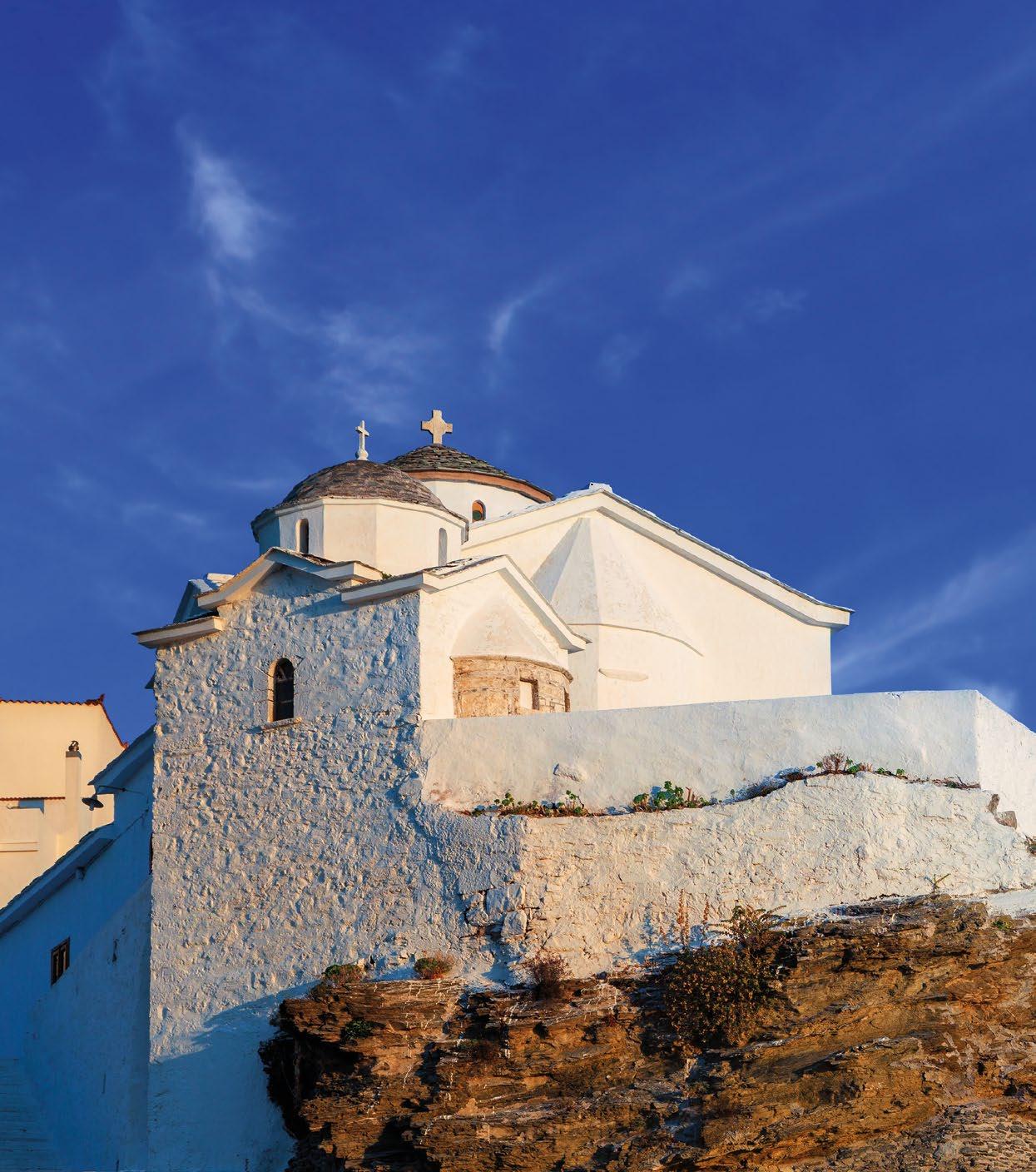
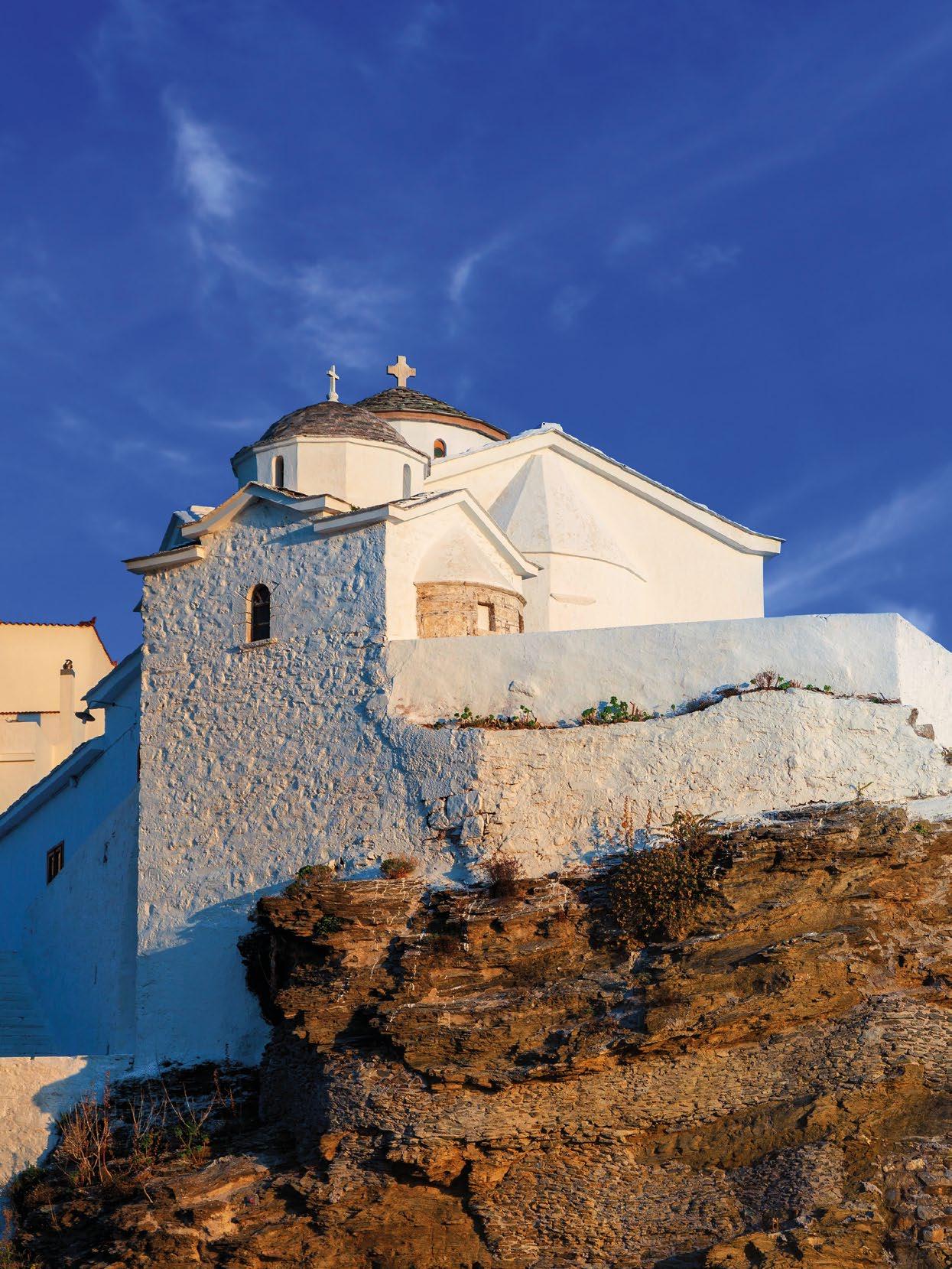

��������� ������ SHIP REPAIRS
��������� ������� PUMP REPAIRS
����������� ������� ENGINE �VERHAU�S ���������� ����������� PARTS MANU�ACTURING
������������ SPARE PARTS
��������

CUTTING

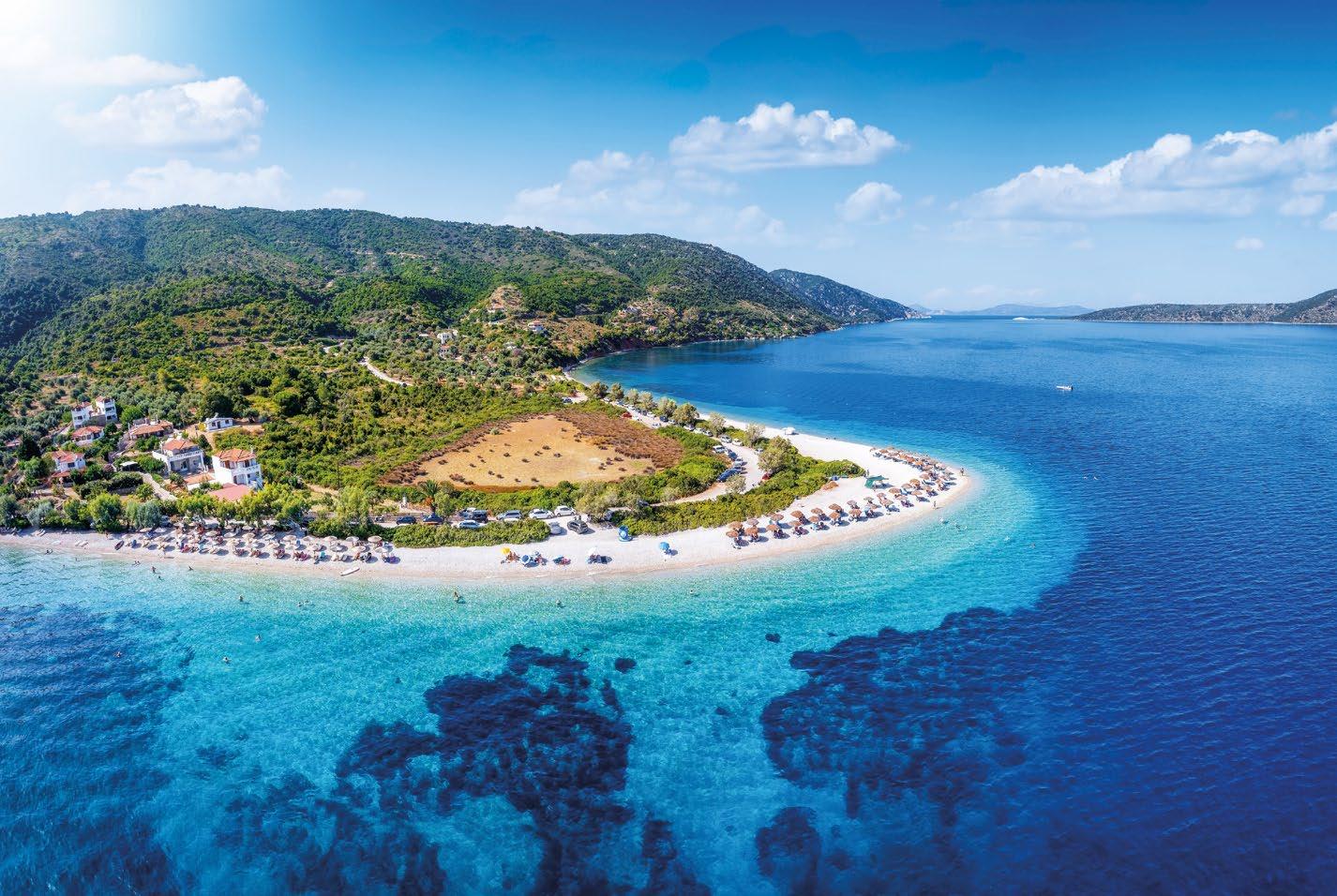
Between Pines & Waves
Whichever island you choose, the natural beauty, turquoise waters, and charming alleys will captivate you. Summer in the Sporades flows at a relaxed pace, full of cinematic landscapes, the scent of pine, and uniquely delicious flavors.
You’ll reach Skiathos in record time, a lively destination known for its exotic beaches, like the much-photographed Lalaria. Koukounaries, with its fine white sand and dense pine forest, is considered one of Greece’s most beautiful beaches, while Mikri and Megali Banana beaches are perfect for water sports.
Swim at Agnontas and at Skopelos’ most famous beach, Milia, where pine trees reach all the

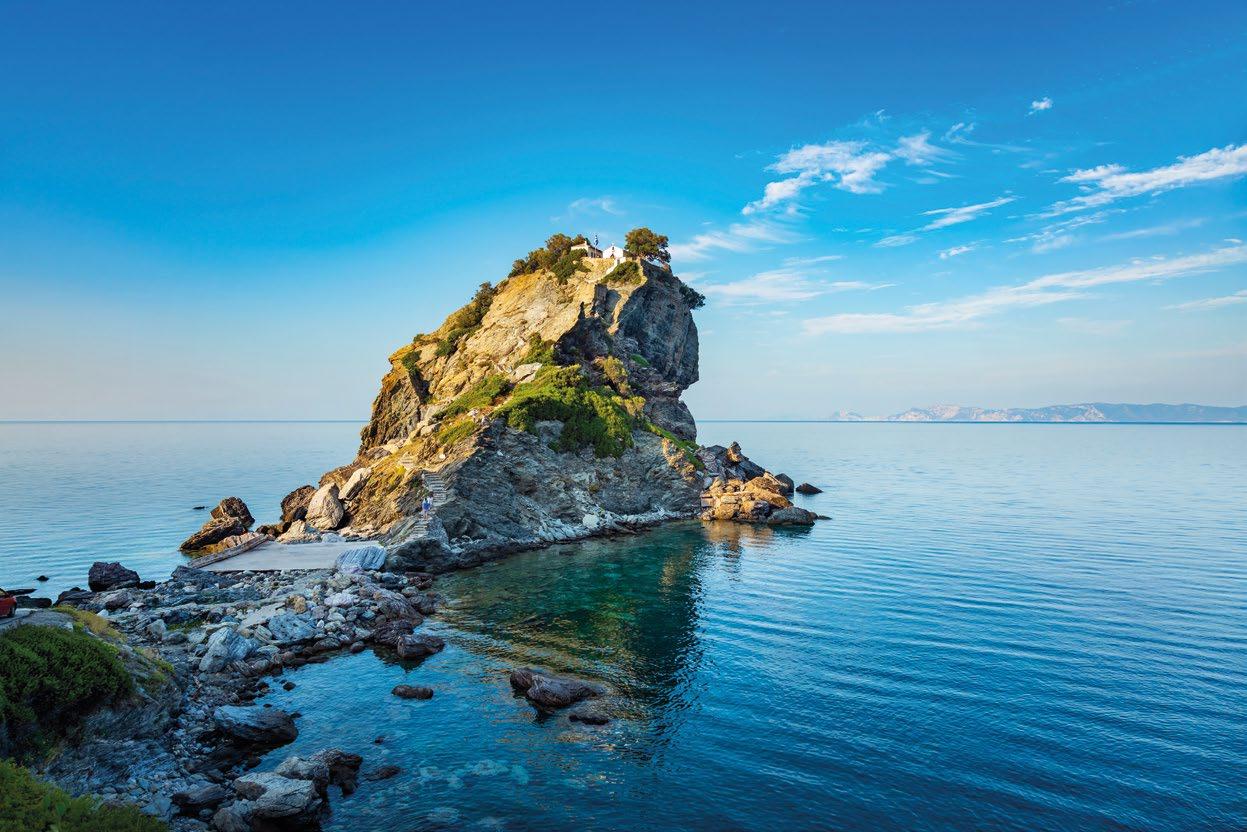
way down to the emerald waters. Don’t miss the stunning Perivoli beach, which is often described as a small paradise, and pair your visit with a stop at the home of the famous author Alexandros Papadiamantis. Agios Ioannis at Kastri in Skopelos, perched atop a 100-meter-high rock, is where scenes from the movie Mamma Mia! were filmed, offering a magical view.
Visit the Alonissos National Marine Park, the first of its kind established in Greece and today the largest marine protected area in Europe. Alonissos, the most peaceful and alternative of the Sporades, is also home to the rare Mediterranean monk seal, Monachus monachus.
With daily departures from Mantoudi in Evia, just 2 hours from Athens, you’re even closer to this island paradise. Board the Speedrunner Jet II and kick off your summer with daily routes and impressive travel times:
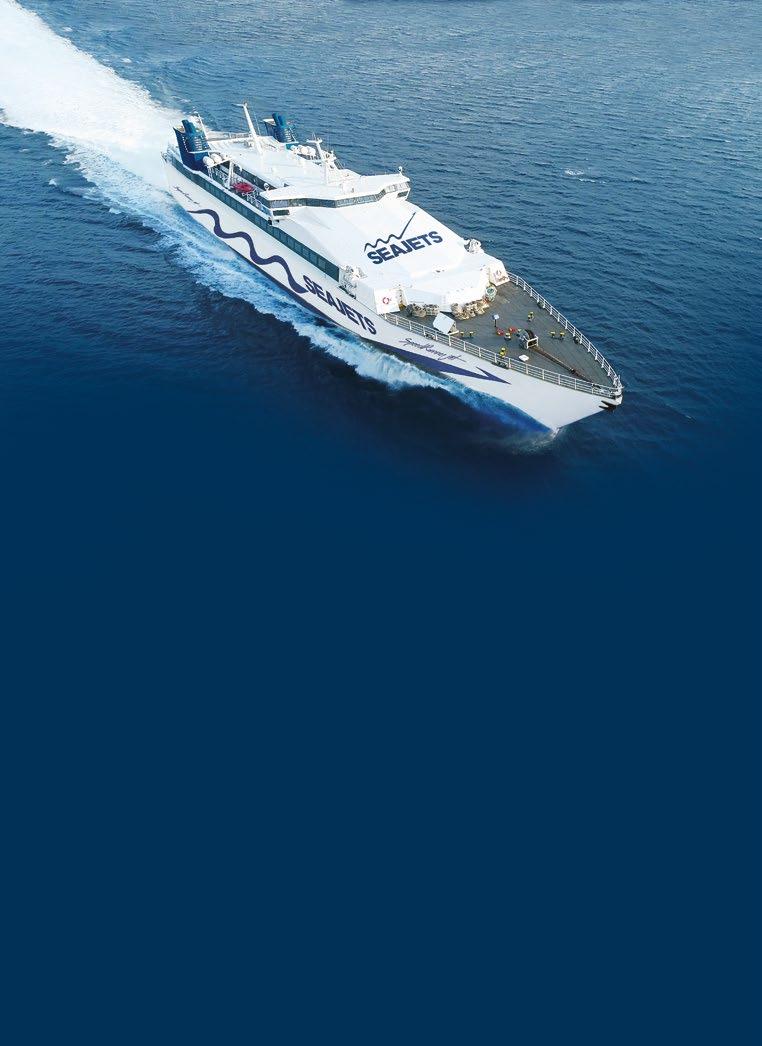
• Skiathos in just 40 minutes
• Glossa (Skopelos) in 1 hour and 5 minutes
• Skopelos in 1 hour and 30 minutes
• Alonissos in 2 hours and 5 minutes
You can also begin your journey from Volos, another popular departure hub for the Sporades. And don’t forget, the short distances between the islands make island hopping easier than ever- in just 15 minutes, you can hop between Skiathos, Skopelos, and Alonissos. One trip, three islands.
/
BY DIMITRA KOKKONI


Georgia Kaltsi and Giorgos Kapoutzidis on the set of the show, featuring guest Katerina Vrana.
ELLON ENA” is the first television show in Greece dedicated to inclusion and self-representation for people with disabilities. In each episode, Giorgos Kapoutzidis and Georgia Kaltsi present the portrait of a person with a disability. Reflecting on her experience, Georgia Kaltsi notes: “It is an honor, a responsibility, and an opportunity to actively participate in something that breaks stereotypes, demands visibility for all, and fosters a more inclusive public discourse.”








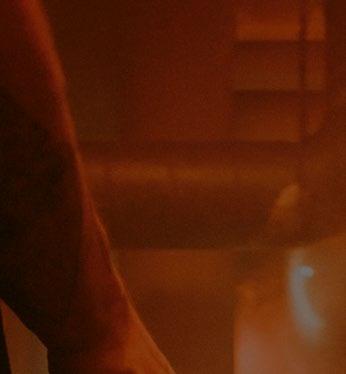






Nikos Papangelis, Paralympic road cycling medalist, during the

“MELLON ENA”, aired on SKAI TV, gives a voice to people who are often invisible. It offers us the opportunity to understand their challenges, where those challenges stem from, and – equally important – their dreams. Guests such as Katerina Vrana, Anastasia Tasoula, the Cool Crips, and others share personal stories from daily life, pointing out how even the simplest things can feel like an impossible task in Greece.
In the episode featuring stand-up comedian Katerina Vrana we learn and hear about her life before and after the accident. She talks about how difficult it is to find venues that are accessible and inclusive – for both her and her audience – and, together with Chrysa Katsarini, explores the line between well-intentioned, welcome humor and jokes that cross the line when it comes to disability.

For Georgia Kaltsi, one of the most memorable guests is Anastasia Tasoula, whom she describes as “the first live proof of a successful lung transplant” – a powerful source of courage and hope for many people. But beyond that, she adds, “she has such a commanding presence, you simply can’t ignore her.”
The show “MELLON ENA”, powered by PPC (Public Power Corporation), is aired on SKAI TV and is produced by elc productions.


Up to 250Mbps Speed
Connect easily in 3 steps:
1. Connect to vessel’s Wi-Fi
2. Enter the voucher code you have purchased from the bar
3. Surf unlimited for 3 hours
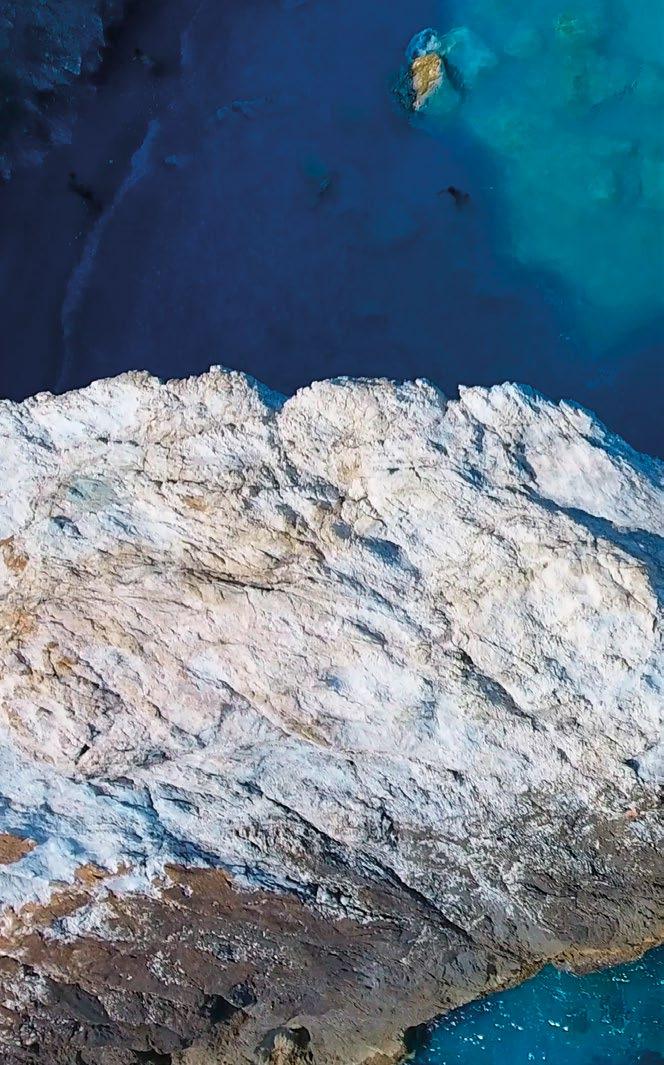
In a place that seems to have been born from the pages of a book, Skiathos invites you to surrender – to the scent of pine, the rhythm of the sea, the silence of hillside chapels, and the words of Papadiamantis, still whispered in the courtyards. It is a land of contrasts: cosmopolitan yet deeply traditional, densely forested yet drenched in light, vibrant yet serene. A place that carries its past not as a relic, but as breath.
Wandering through the town (Chora), the cobbled paths lead almost instinctively to the house-museum of Alexandros Papadiamantis. Within its humble walls, the spirit of one of the most essential figures in Greek literature still lingers. Just opposite, the Church of the Three Hierarchs stands modest and still – as if his chanting voice could still be heard in the quiet hours.
The writer who carved the world with words
He lived simply, almost invisibly, and yet his work hovers over modern Greek letters like a silent veil. Alexandros Papadiamantis, born in Skiathos in 1851, never sought fame or recognition. He led a solitary and often difficult life, marked by poverty but also by unwavering devotion to literature.
PEPI NIKOLOPOULOU

SKIATHOS: Where Papadiamantis meets the sea and tradition lives in the light
In the six decades of his life, the "humble saint of Greek letters," as later generations called him, wrote over 180 short stories, three novels, three novellas, and dozens of articles and essays. Constantine Cavafy once referred to him as “the summit of summits.” Self-taught in foreign languages, Papadiamantis studied English, French, and Italian in order to engage with literary giants such as Dostoevsky and Dante in their original tongues. His translation of Crime and Punishment is considered exemplary.
He died in 1911, having spent his final years back on the island that had shaped him. He never lived to see a single one of his books published in standalone form. A moving moment of posthumous recognition came in 1933, when four hundred French intellectuals traveled to Skiathos and joined Greek writers and admirers in a series of speeches held before his bust. That year marked the beginning of his works being translated into French – the first step toward his recognition as a writer of global significance.

Papadiamantis House-Museum: In the heart of Chora stands the modest home where he was born and spent his early years. Today, it is a small but deeply moving museum that preserves his presence.
Bourtzi: The pine-covered peninsula at the harbor where his monument now stands. Papadiamantis often sat here, gazing out to sea – a place of reflection and inspiration.
The Cave of the Fonissa: The sea cave associated with his tragic heroine, Frangoyannou. Accessible by boat along the island’s northern coast, this haunting spot echoes with both natural power and literary memory.
The Kastro (Castle): Once the medieval capital of the island, the Kastro crowns a rugged peninsula in the far north. Its ruins, chapels, and wild beauty compose a landscape that is as mystical as it is historically resonant.
Church of the Three Hierarchs: Where Papadiamantis used to chant during his time on the island – always soft-voiced, always discreet. The church remains much as it was, gazing out at the sea with quiet dignity.

But beyond the shadow of the writer, Skiathos continues to tell stories in its own voice. As you wander its paths, you might come across women making “fouskítes” with honey, just as their grandmothers did; fishermen who measure their days not by calendar but by weather; or tavernas nestled among the pines, where octopus grills slowly over coals and goat simmers gently with lemon and garlic mash
The local cuisine – modest yet generous – feels like it belongs in the same world as Papadiamantis’ stories: a world where nothing shouts, yet everything speaks with depth. A salad of wild capers and sun-warmed tomatoes, an almond sweet scented with rosewater, a sip of wine at dusk – these are not just flavors, but fragments of everyday poetry.
Skiathos speaks the language of both nature and narrative. And those who truly listen leave the island richer – not just in images, but in something deeper. As if they carried with them a small fragment of that eternal summer that always returns.
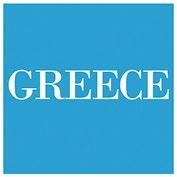




ANEZOULA KONSTANTINOU
Eighty-five-year-old Anezoula lives year-round in Avlona, Karpathos, carrying the weight of a life marked by hardship and resilience. “Christ’s suffering lasted days – mine, years,” she says, recalling the loss, the toil, the illness of her husband, the care for her aging parents, and the grueling work – from construction sites to the tuberculosis ward at Sismanoglio Hospital.
Today, Avlona offers her peace and a rare sense of connection. She fondly remembers childhood festivals in Vroukounta and the panigyri in Mesochori – moments etched in memory alongside a miracle: a child swept into a cave and returned safely by the sea.
Despite the struggles, Anezoula remained generous and strong. “Now we have everything – except our health,” she reflects quietly. And each night, before sleep, she counts the years and the scars – without a trace of regret.
ΣΑΝΤΟΡΙΝΗ

By Themis Sakellariou
ALITHINI KOLIOUSI
Alithini traveled from Germany to Santorini for a holiday, unaware that her destiny awaited her there.
Within just a few days on the island, she met Dimitris – the man who would become her life partner and the father of their three children: Iliakhtida, Apollonas, and Odysseas.
Embracing her womanhood with courage and tenderness, she chose to bring Odysseas into the world in their old home in Oia, with only her partner by her side. Fully prepared and deeply trusting in the rhythms of nature and motherhood, she gave birth in a rare, quiet, almost ritualistic way.
Her creative spirit finds expression through naïve painting – through her art, she reveals her soul, radiating light and a sense of well-being to those around her.
Today, she lives with her family in a caravan by the sea. A place where time flows differently – more truthfully, more peacefully, more freely.
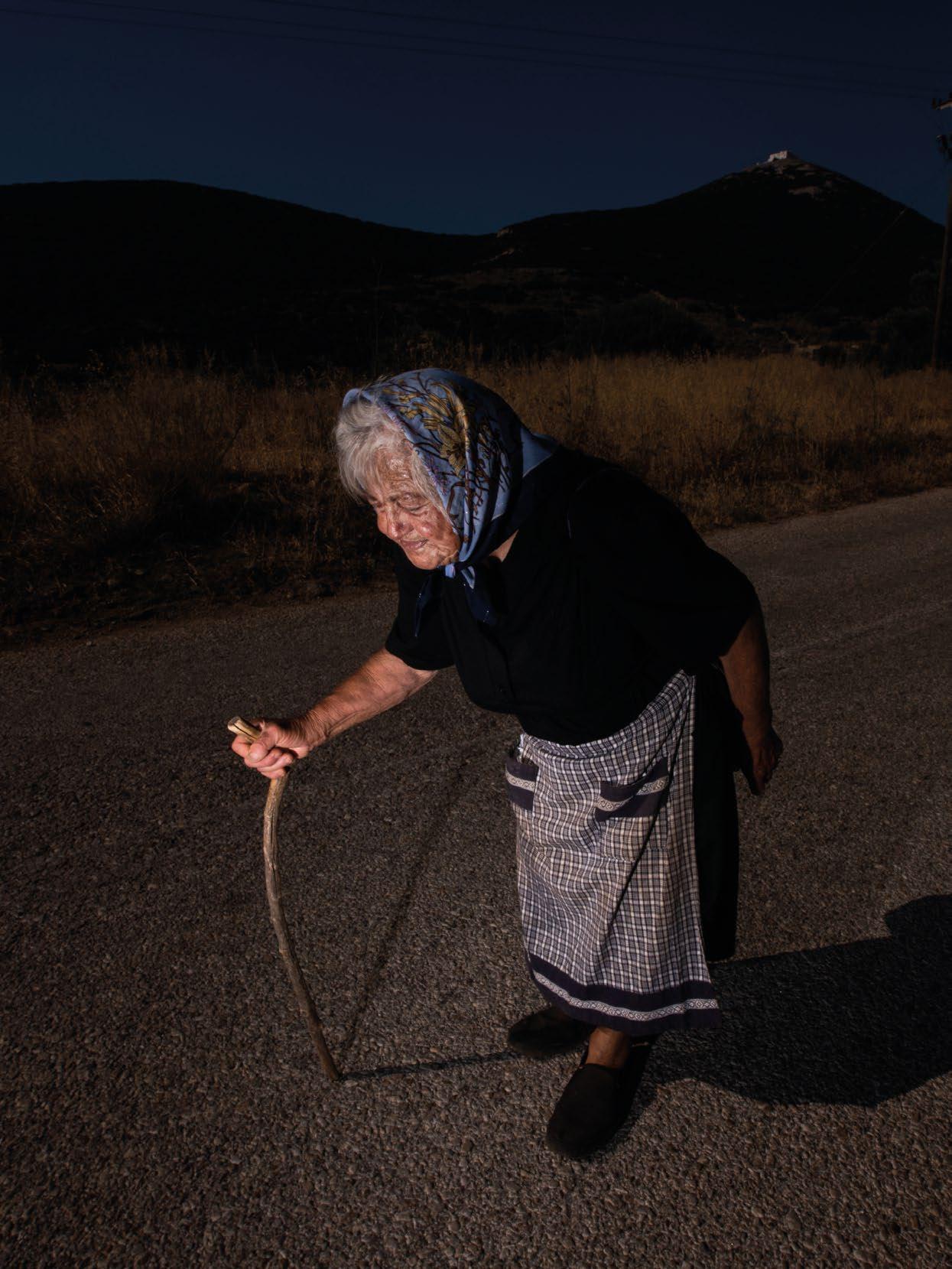
FLORA PATRIARCHI
She is 85 years old, and on the island they call her “the grandmother of the fields.” The eldest of nine siblings, she says that the earth gives you everything. Her land and her poetry have been her entire life. She used to write poems and share them with children during Christmas caroling – an act that filled her with pure joy.
At 20, she came from Syros when her parents moved to Sifnos for work. When she arrived, they welcomed the “city girl from Syros” with a violin celebration. That’s where she met the love of her life. They had no property, but true love, companionship, and solidarity made their life full and joyful. Together, they would set out at sunrise for the fields, and return hand in hand to cook.
Flora is a remarkable presence. Even today, she goes out every morning to harvest beans, zucchini, onions –whatever the earth has to give. She’s deeply grateful for her land, passionately loves her island of Sifnos and Greece. When she speaks of her earth, her eyes well with joy and gratitude. “Until I stop walking,” she says, “I’ll keep gathering the earth’s gifts and sharing them with my grandchildren.”

We first met the presbytera (the wife of a Greek Orthodox priest) just after she had milked her goat and was bringing fresh milk to the monastery of Zoodochos Pigi. Her first words to us were simple and wise: “If you have bread and olive oil, you can do anything.”
She opened both her heart and home to us, guiding us through her gardens and livestock with a quiet, humble pride.
She told us how, back in the 1990s, she began cooking on the beach for the few travelers who reached the remote Roukounas beach on Anafi. And when the travelers grew in number and became tourists, she never changed her heart – only her space.
With her own two hands, she built her garden, her small tavern, and the stone pen for her animals, all in one place. It was an act of ongoing hospitality – a gift of love to everyone.



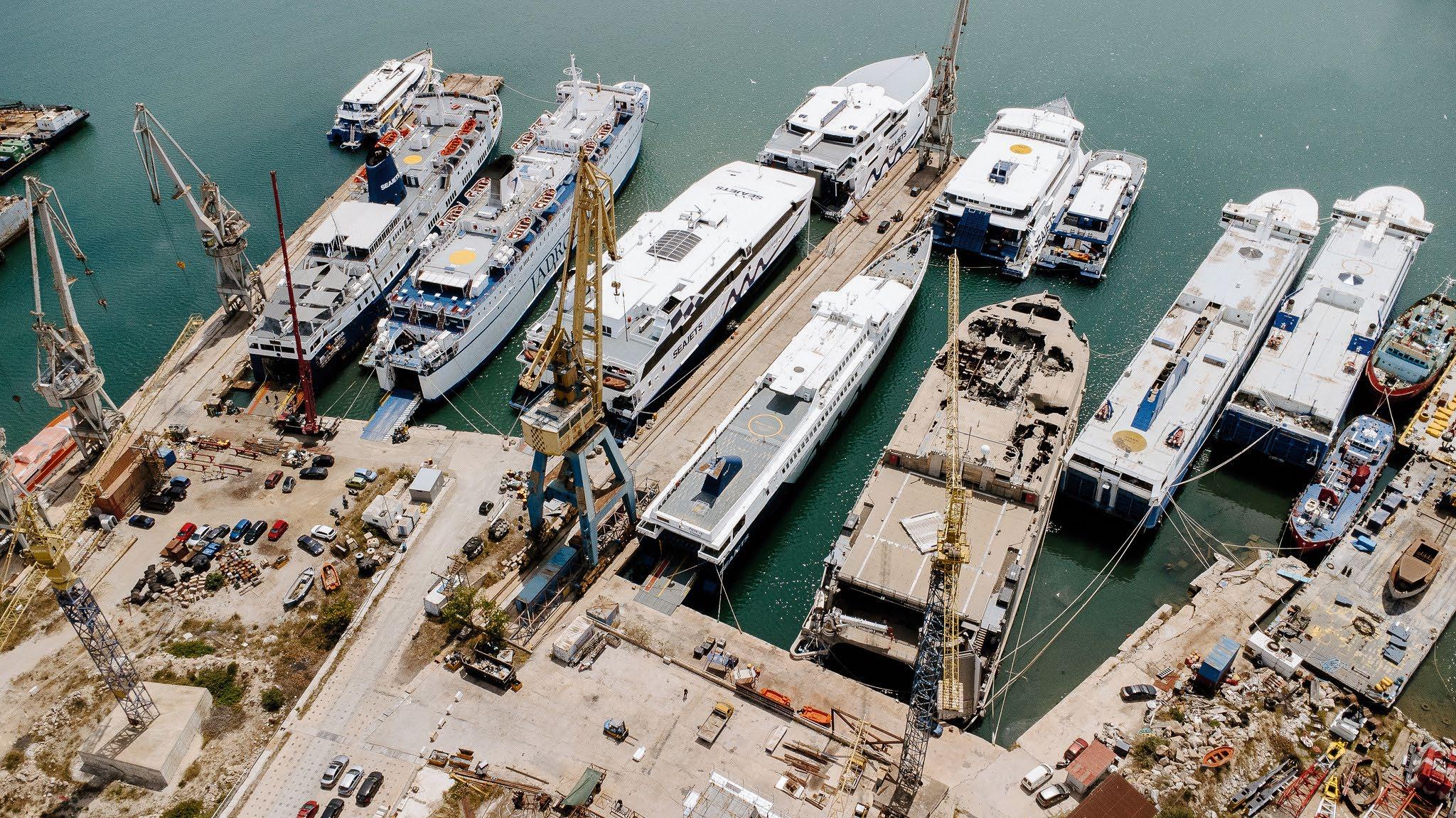
By Marianna Pateraki
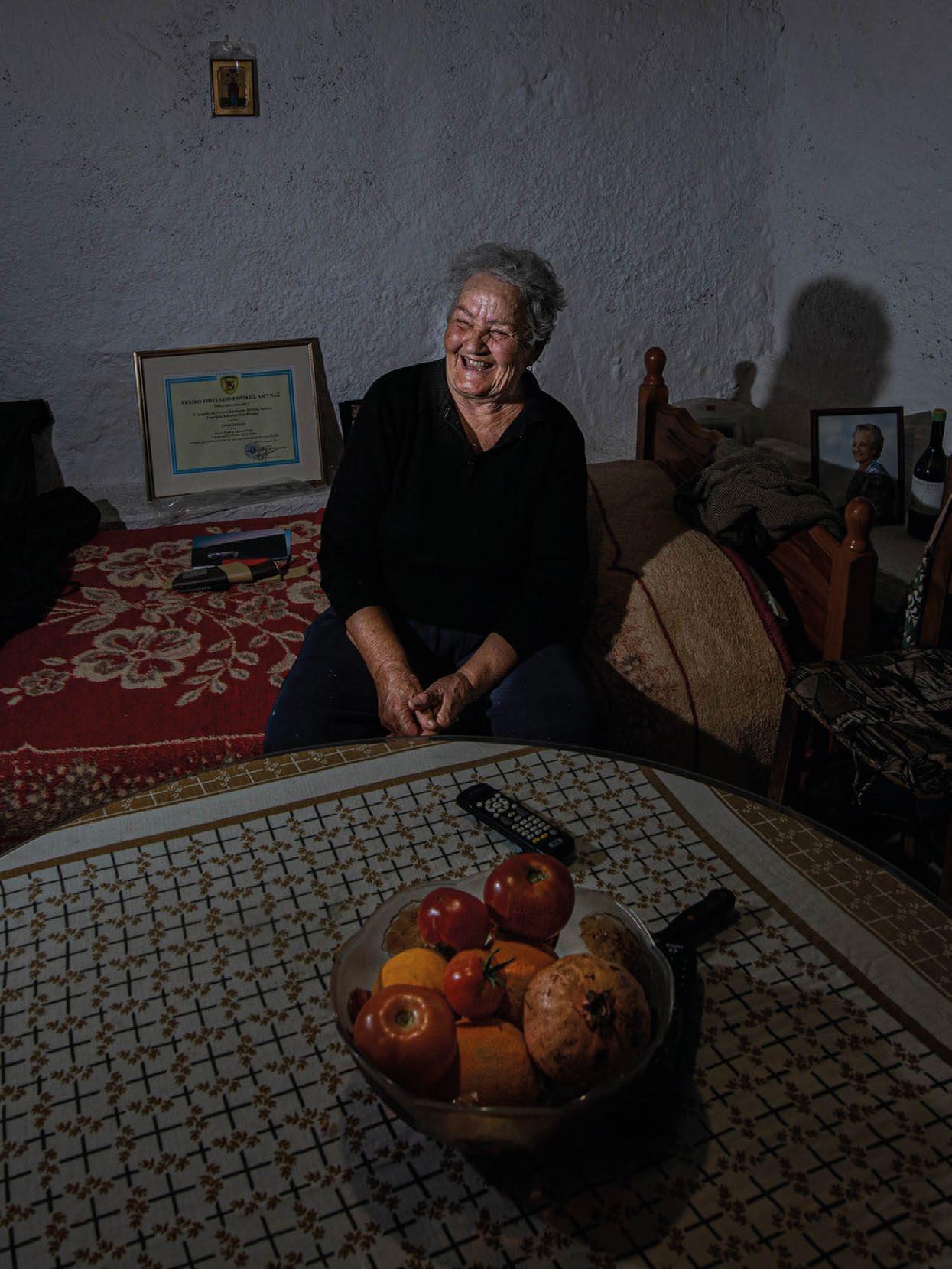
LADY RINIO
“Lady Rinio!” the captain calls out as the boat turns to anchor in a small cove. We switch to the dinghy; she awaits us on the veranda, hands behind her back like a general, but with the playful smile of a pirate. The waves kiss the steps. On the wall above her bed hangs a plaque: “Sole Inhabitant of Kinaros.”
She’s been on the island since she was eight days old, tending animals since the age of five. She remembers the Occupation, the eight families that once lived here, and the year 1960 when they all left – and she stayed. She’s lived elsewhere – fifteen years in Darwin – but the island never left her. She recalls a cyclone: “We were having coffee, and... there goes the roof!”
In 2015, she heard the roar, smelled burnt metal. A military helicopter had crashed behind the mountain. She was alone. “It felt like hell,” she says. Nowadays, censuses are done by phone, to avoid counting her. But she holds her ground. She guards the island.
“I can’t stand crowds. We don’t know each other anymore.” Alone with the animals, who understand her. “Wherever I go, I think of the sea here. This island is the most beautiful of all.”



Piraeus is evolving into an independent tourist destination

Can Piraeus become an independent tourist destination?
Piraeus is already on the path to becoming an autonomous tourist destination. Piraeus has all the elements to become a destination in its own right: a rich and ancient history, cultural landmarks such as the Archaeological Museum, the Maritime Museum, and the Municipal Theatre of Piraeus, picturesque neighborhoods like Kastella, Mikrolimano, Piraiki, and Pasalimani, an extended coastline ideal for walks, dining, and leisure, as well as a rich gastronomic tradition that we as a Municipality are actively promoting through targeted initiatives. It is a lively city with a unique character, capable of offering unforgettable travel experiences.
What steps have already been taken toward this goal, and what are the next milestones?
The tourism growth is the result of multiple factors. The development of the port and the cruise sector has played a significant role, as have the major and smaller-scale urban renovations we’ve implemented in key areas of the city - such as the Tower of Piraeus, which stands at the heart of the country’s main port, Mikrolimano, Agios Dionysios, and several public squares - all of which have significantly reshaped the image of the city. The fact that Piraeus is now a clean city is also of great importance. The arrival of the Metro and Tram, which connect Piraeus with central Athens and the airport, has also made a big difference. Our biggest challenge is to keep Piraeus beautiful, clean, and functional, so that visitors enjoy their time here.
We will continue in this direction in the years to come, with major flagship projects such as the redevelopment of the Piraiki seafront. We are also eagerly anticipating the completion of the Underwater Antiquities Museum in the old port warehouses—an exciting project that is expected to draw many visitors.
What is your vision for Piraeus as a multidimensional destination of cultural, business, and tourist interest?
Our vision is that all forms of development must be sustainable. Everything we plan must be designed with respect for people, society, and the environment. Today, no serious, developed city in the world has the luxury to grow uncontrollably, without considering the principles of sustainability.
ΤΟ ΔΗΜΟΤΙΚΟ ΘΕΑΤΡΟ ΠΕΙΡΑΙΑ ΣΥΜΠΛΗΡΏΝΕΙ 130 ΧΡΟ-
ΝΙΑ ΛΕΙΤΟΥΡΓΙΑΣ, ΚΑΛΛΙΤΕΧΝΙΚΗΣ ΔΗΜΙΟΥΡΓΙΑΣ, ΠΟΛΙΤΙΣΜΙΚΗΣ ΚΑΙΝΟΤΟΜΙΑΣ, ΑΝΑΠΤΥΞΗΣ, ΕΠΙΤΥΧΙΑΣ ΚΑΙ ΕΞΏ-
ΣΤΡΕΦΕΙΑΣ. ΤΟ «ΣΤΟΛΙΔΙ» ΤΟΥ
THE MUNICIPAL THEATRE OF PIRAEUS CELEBRATES 130 YEARS OF OPERATION -130 YEARS OF ARTISTIC CREATION, CULTURAL INNOVATION, GROWTH, SUCCESS, AND OPENNESS TO THE WORLD. THE “JEWEL” OF PIRAEUS WAS INAUGURATED ON APRIL 9, 1895.
Atheatre intrinsically linked to the history of the city. Great personalities -actors, directors, playwrights- as well as iconic works of Greek and international drama, strong ties with the country’s leading cultural institutions, but also wars, displacement, bombings, and the harsh struggle for survival, have all left their mark on this remarkable 130-year journey.
Today, the Municipal Theatre of Piraeus is growing, envisioning, evolving.
Its high-caliber artistic events, theatrical performances, concerts, educational programs, and diverse cultural activities draw in large audiences, giving the theatre a leading role not only on a local but also on a national and even international level. As an architectural monument, it is well worth a visit—a major landmark of the city and one of the most important theatres in Greece.
"This anniversary brings with it an added responsibility for us all: to ensure that our theatre continues to play a leading role -as a beacon of culture and creativity, with events and initiatives worthy of its legacy,” notes the Mayor of Piraeus, Yannis Moralis, on the occasion of the theatre’s 130th anniversary. “Throughout the years, our Municipal Authority has succeeded in shaping an open and outward-looking theatre, accessible to the people of Piraeus and the broader community. We are proud of the journey of the Municipal Theatre of Piraeus. I hope it continues on this beautiful path, because theatre educates, entertains, and elevates humanity. We will keep supporting our theatre with the same passion and vision, continuing to spread culture across our city and among its people.”
The entire month of September will be dedicated to the 130-year anniversary, with a rich, diverse artistic festival featuring daily events and site-specific interventions that will engage with the living fabric of the city, highlighting the theatre’s enduring historical grandeur.
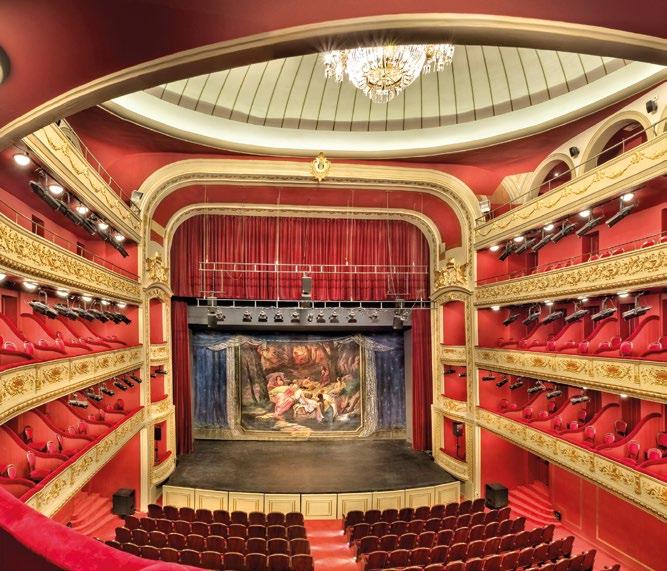
WorldChampion Jet
Champions League Jet & Power Jet

One Day Tour: Santorini from
With the world’s fastest high-speed vessel, the Worldchampion Jet and the stunning Champions League Jet & Power Jet
Santorini is where nature and myth blend into a breathtaking landscape of whitewashed villages, volcanic cliffs, and endless Aegean blue. From the postcard-perfect streets of Oia to the dramatic views of the Caldera and the island’s colorful beaches, this world-famous destination offers a once-in-a-lifetime opportunity.
Μεσαριά / Mesaria



our buses will be waiting to take you on your Santorini adventure. Your first stop is Oia, built along the rim of the Caldera, offering magnificent views of houses carved into the volcanic cliffs.
Next, explore the island’s lively capital, Fira, with its picturesque alleys, shops and cafes.
You can also choose to join an optional boat trip to the volcano aboard traditional wooden vessels and swim in the warm, mineral-rich waters of the hot springs.
Travel from:
• From Heraklion: in just 1h 45min
• From Rethymno: every Tuesday & Sunday in 2h 20min
Your journey is accompanied by the Worldchampion Jet, the Guinness World Record holder for the fastest speedboat. Don’t miss the chance to take a photo with the authentic Formula 1 car located inside.

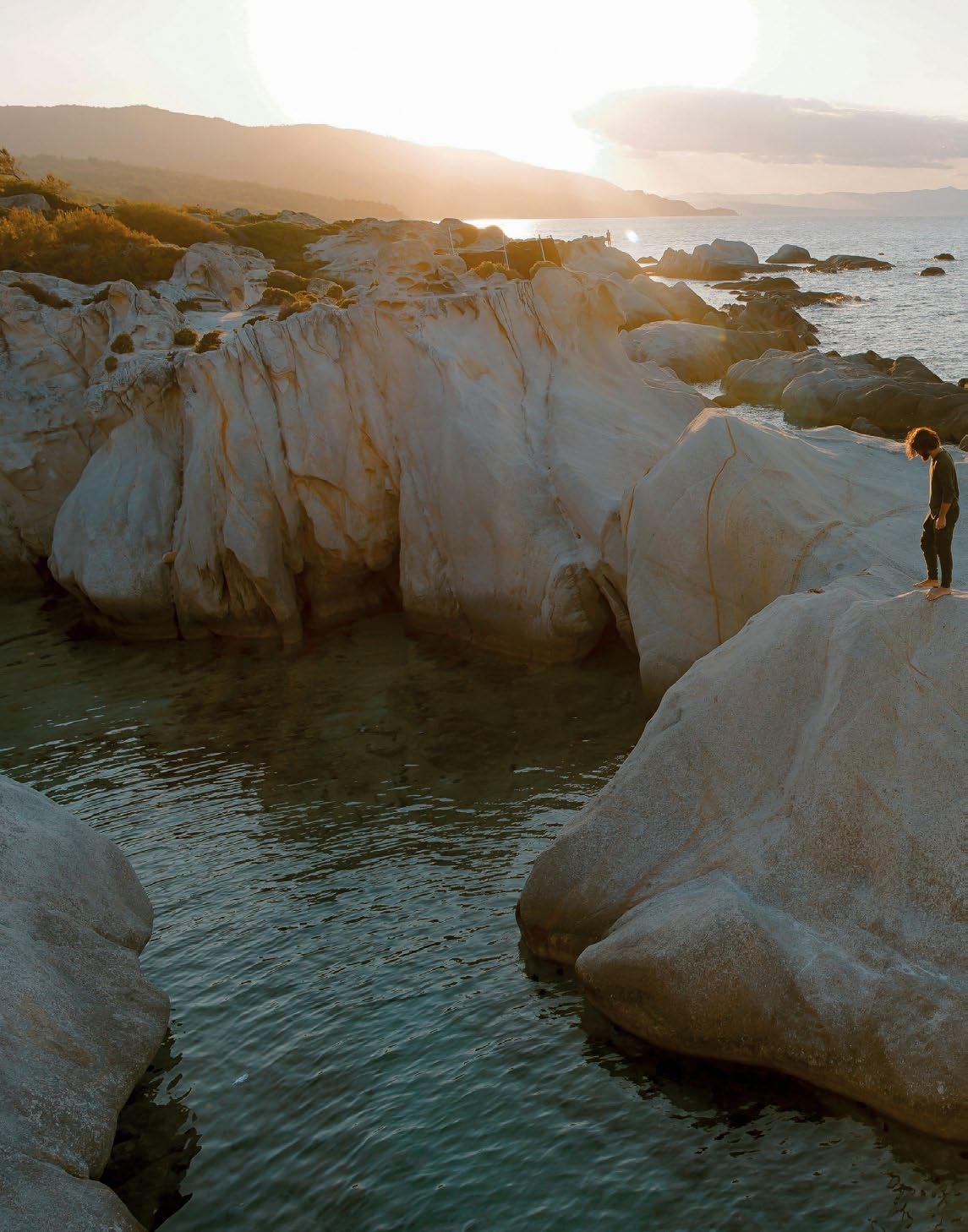

INFO

I’ve always seen life more clearly through the lens of theatre. I am a director, and a large part of my life is spent searching – through theatre – for unknown aspects of the human condition.
Last summer, I had the good fortune to direct a performance at the archaeological site of Ancient Zone, just outside Alexandroupoli. A place that unfolds across a hillside, gazing out at the vast blue of the Northern Aegean, layered with earth –and with history.
That journey opened up a whole new world, one where I connected both personally and artistically with the soul of this land.
Together, we listened to the stories whispered by the ruins. We gave voice to silence, bearing witness to the dreams and sorrows of those who lived there over the centuries. We created a site-specific, walking performance – a composition of experience and fiction – told as a collective narrative. It spoke to the timeless human need to invent, to explore, to belong, and to put down roots.
Our land is a canvas painted with ambition, relentless creativity, quiet tears, and hardfought battles. All of it – scattered and yet deeply connected – lives in the forest of Ancient Zone.
I smiled inwardly: who would have imagined we were standing on the same ground where Odysseus is said to have made his first stop on the way home from nearby Troy to Ithaca?
You, too, are travelers – seeking beauty, serenity, and meaning. Perhaps, if you listen closely, you’ll be lucky enough to hear the stories of this land –stories that build bridges through time.
Perhaps you’ll encounter art as it meets history, crosses centuries, gives voice to what is often forgotten, and invites us to feel, to reflect on the present and the future – by following the thread of the narratives that shaped this place for thousands of years.
In theatre, we rewrite our stories. We open paths for continued creation – a reminder that the truest stories are the ones we shape ourselves.
Safe travels to those who journey with their hearts and arrive with open hearts. Culture is still alive –in every stone, in every voice.
Discover what the world keeps hidden, and return full of stories that will inspire us all.
INFO
Explore cultural events and discover the history of each destination. Find recommendations in the Agenda section at the front of this magazine and online at www.elculture.gr & www.elculture.com
Sofia Vgenopoulou is a theater ditector.

The symbol of infinity honors the 100th anniversary of Takis’ birth, with the Basil & Elise Goulandris Foundation in Athens and Andros magnetized by his works through a major retrospective exhibition at its museums, running from June 22 to November 2, 2025. Among the works on display in Andros, over 30 of Takis’ Signals await us, placed together just as the artist himself envisioned them – like a forest.
For the first time in the Foundation’s history, all spaces dedicated to temporary exhibitions will be devoted exclusively to Takis, featuring over 150 of his works. The exhibition coincides with the reopening of the newly renovated Old Wing of the Museum of Contemporary Art in Andros.
Marie Koutsomallis-Moreau, Head of Collections at the Basil & Elise Goulandris Foundation, alongside curator Toby Kamps, Head of the Modernist Collection at the Hamburger Kunsthalle and a Takis specialist, curated this major retrospective – a “puzzle,” as Koutsomallis-Moreau calls it. Takis was so prolific in his output that the greatest challenge was selecting the works and deciding how to present them in a way that makes sense to the visitor. Common threads running through the Athens and Andros exhibitions include the yellow hue from Takis’ Magnetic Wall, which inspired the exhibition design, and the inclusion of sound – as Takis always wanted sound to be present in all his exhibitions.
Marie Koutsomallis-Moreau shares the vision behind Takis 1∞: “I hope we achieve what Takis always wanted – to touch everyone. He believed art was not something to be discussed or analyzed. That’s why he didn’t hold the professional art world in high regard. What mattered to him was the authentic, initial contact with art – something that moves you but also entertains. The playfulness within the works. Our goal is to help the visitor see that, even though he was self-taught, he possessed tremendous talent from his early years – something that shines especially in Andros, with his earliest, lesser-known works. These reveal a young man who, despite experiencing the Occupation, hunger, and even imprisonment, found an outlet through art and expressed immense talent.”



with the Basil & Elise Goulandris Foundation "dressed" in yellow like the artist's "Magnetic Wall"
INFO
Athens:
13,

“What we conceived in order to differentiate Athens from Andros was to focus solely on Takis’ relationship with magnetism in Athens – hence the exhibition’s subtitle Magnetic Fields. When he discovered he could use magnetism as matter to reveal the invisible in sculpture, it was a revolutionary moment for him. He continued to explore magnetism until his death.
In Andros, we focused on the sequence of discoveries he made throughout his career – each time bringing something new. The subtitle in Andros is Eureka It wasn’t just magnetism. It was also the discovery of sound, the music within his works, then color – especially when he introduced the Magnetic Walls. Light too, using materials like mercury, and with the Telelights, which also held great significance for him.”
“What Takis contributed to art was the revelation of the invisible,” says Marie Koutsomallis-Moreau. “He made the invisible material. What’s striking about his works is that you feel an energy around you –mostly related to magnetism, but not only that. He remained authentic to the end, saying, ‘I am selftaught, but with my curiosity and the abilities I uncover through science – not as a scientist, but as an artist – I can offer something new to humanity.’
Art, for him, went beyond the boundaries of walls, beyond the primary matter of sculpture, and reached everyone and everything.”
The exhibition is made possible with the support of the Takis Foundation.
INFO
BASIL & ELISE GOULANDRIS FOUNDATION
Athens: 13 Eratosthenous str., Athens 116 35, Greece T. +30 210 72 52 895
Chora Andros: 845 00, Greece, T. +30 22820 22444
116 35, T. 210 72 52 895
845 00, T. 22820 22444
Visit Information: visit@goulandris.gr
Visit Information: visit@goulandris.gr
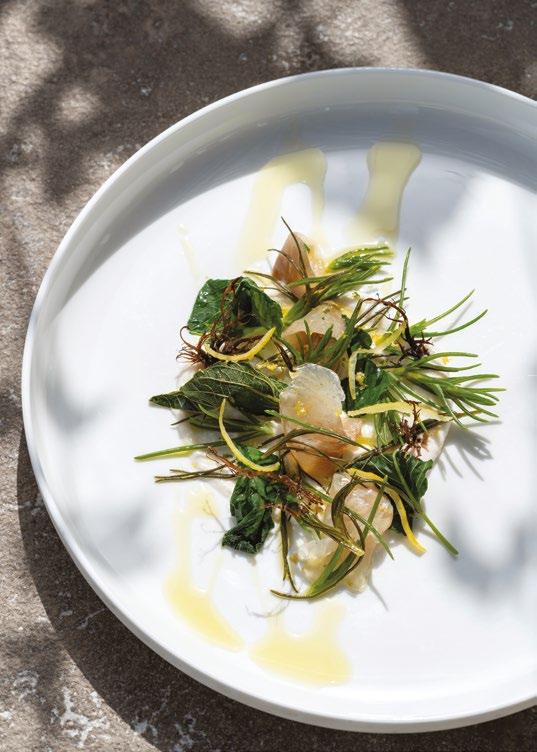

At the Little Theatre of Ancient Epidaurus – where voice merges with landscape and song takes on a primal quality – Maria Farantouri is preparing to take the stage in her own tribute to the centenary of Mikis Theodorakis’ birth. The evening will shed light on lesser-known lyrical works from his late creative period: The Odyssey, set to the poetry of Kostas Kartelias (2006), alongside selections from The Lyrical (1976, poetry by Tasos Leivaditis), and Beatrice on Zero Street (1994, poetry by Dionysis Karatzas). Accompanied by a small but superb ensemble, Maria Farantouri and baritone Tassis Christoyannopoulos will bring to life a more meditative, more poetic side of Mikis Theodorakis.

A life with Mikis – A life for music and poetry

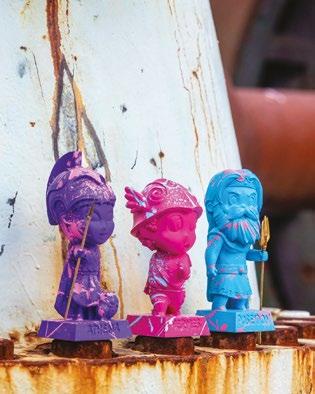

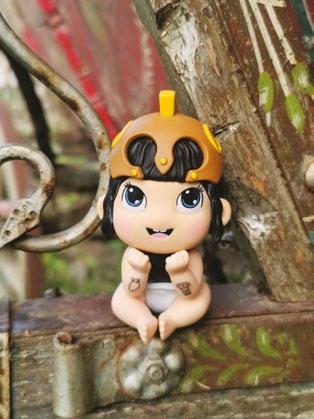





INFO
“Performing in this place always has something special this time, sharing the stage with Tassis Christoyannopoulos – a performer of rare sensitivity and vocal depth – makes the night even more meaningful.”
Poetry was always the foundation of Theodorakis’ work. “He wanted the people to know poetry. He brought it to the lips of everyday folk. Ritsos, Seferis, Leivaditis – their verses became songs everyone knew. For him, that was a sacred duty. He fused poetry and music to create something new: the art song.”
Farantouri recalls the moment it all began.
“It was the early ’60s. Mikis had just returned from abroad, influenced also by his friend Manos Hadjidakis, who had already paved his own path. That was the birth of a new cultural movement. We were all there: Manos Loizos, Christos Leontis, Dimos Moutsis, Thanos Mikroutsikos. After the silence of the 1950s, Greece was yearning for a voice – and found it in poetry and song,” she says.
For the acclaimed singer, that era was nothing short of mythical.
“He was a great teacher – never harsh in the strict sense, but always demanding, with heart. What he gave me was a lifelong journey. He wasn’t just a father figure. He was almost godlike. I feel him beside me when I sing. It’s as if he spreads wings over me. Though I’ve sung many works – Greek and foreign, from the Beatles to John Williams – I always return to the beginning. My voice is intertwined with him.
But Theodorakis’ legacy was more than just music and poetry. There was something deeper. For Theodorakis, politics and culture were never separate realms. “Mikis was a singular figure. Both political and artistic. He had a profound sense of duty to his country, and a belief that culture could bring transformation. In Cuba, Fidel Castro himself called him a ‘revolutionary musician.’”
When I ask if there could ever be another like him, she falls silent for a moment.
“I don’t know if that’s possible. Everything is changing – technology, the rise of AI. But I do believe that even today’s young composers, if they know their roots, can create great works. Every region has its own voice – Epirus, the islands, Thrace, the Ionian, Asia Minor – they are all treasures. Foreign artists tell me this too – like the great saxophonist Charles Lloyd, with whom I’ve collaborated – how rich the Greek musical soul is.”
She concludes with a thought encapsulates all: “The feeling back then was that poetry was sung everywhere. Young people, everyone, carried it with them. There was myth, enchantment. A kind of imagination that could lift you above the harshness of reality. And that was the greatness of the songs of that era.”
The evening will be a quiet homage to the power of music to transform verse into flame.
INFO
MARIA FARANTOURI – TASSIS CHRISTOYANNOPOULOS
A Magical Night – 100 Years of Mikis Theodorakis
Little Theatre of Ancient Epidaurus | August 16, 2025, at 21:30











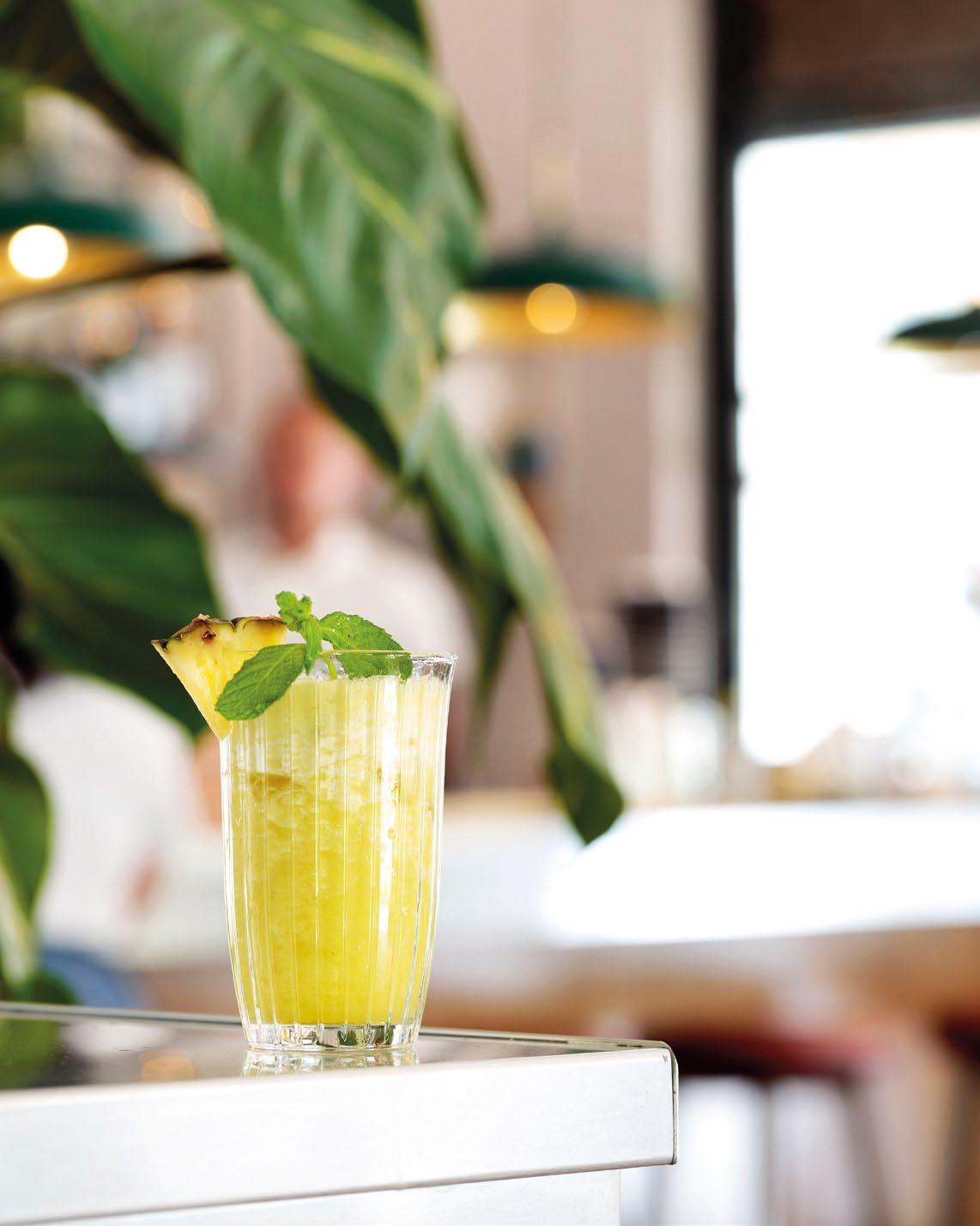
If you’re in the Greek capital, these four restaurants deserve your attention
FROM THE OPEN FIRE AT PHARAOH IN EXARCHIA AND THE STREET-STYLE THAI ENERGY OF GROOVY MANGO IN NEOS KOSMOS, TO MAKRIS’S FINE DINING IN THISEIORIGHT BESIDE THE ANTIQUITIES - AND THE TIMELESS ELEGANCE OF COOKOOVAYA, CONTEMPORARY ATHENIAN GASTRONOMY OFFERS ABUNDANCE. JUST DISCOVER IT FOR YOURSELF.
How does the most traditional, natural, simple, and unpretentious style of cooking merge with a venue that, from day one, has been the trendiest, hottest spot in downtown Athens?
You need to ask four people to learn the secret: Manolis Papoutsakis (chef), Fotis Vallatos (journalist), Dimitris Plantanias (opera baritone), and Peri Panagiotakopoulos (wine aficionado).
Each from their own field, they harmoniously combined their knowledge and passion to create what is now a gastronomic landmark in Athens: Pharaoh.

Το
Groovy Mango |
insta: @groovymango_athens

Set in Exarchia, the space strikes a balance between rugged and refined: concrete, wood, theatrical lighting, memorabilia gathered from around the globe, and vinyl records spinning Afro-jazz and Anatolian rock.
Chef Papoutsakis’s kitchen relies exclusively on fire - wood ovens, charcoal, stovetop braises. The menu changes daily but remains Greek and rustic, drawn from the chef’s deep culinary understanding: beef stewed in tomato with barley, stuffed cabbage leaves, savory pies, cauliflower with sour coarse barley, lemon-rooster. All ingredients come from small producers, farmers’ markets, and vegetable gardens. Its bar holds over 250 natural and biodynamic wines - fairly priced, authentic, full of character. They recommend them without snobbery and serve them with warmth, just like the people you’ll meet there.
Pharaoh | Solomou 54, Athens | www.pharaoh.gr
Groovy Mango is a very fresh arrival - both literally and in energy. Opened in May in Neos Kosmos, just across from the Syngrou–Fix metro stop, this project stems from a decades-long friendship between two individuals with very different backgrounds.
On one side is seasoned restaurateur Antonis Liolis, with stints at Circus in Kolonaki, Blue Bamboo, and the beloved Tzoutzouka; on the other, George “Mo,” known for Mo Vintage Athens, a boutique selling archival designer clothing even to museums. Their friendship and personalities now define the restaurant’s identity.
They outfitted the space themselves with no external designers: “Groovy Mango is us,” says Mo. Everything in the design and ambiance is their own creation, as is the menu, which is deliberately concise. A few well-crafted dishes lie at the heart of Thai cuisine. Already popular are chicken satay, pad thai, and bao buns with minced meat - Groovy Mango’s twist.
At the bar, don’t miss their signature cocktails - try the “remixed” Zombie - and a wine list featuring Greek and international selections. Music plays a central role: “Every moment has its own soundtrack,” says Mo, meaning the playlist is ever-changing.
Groovy Mango caters largely to Greeks who’ll make it their local spot - yet city visitors will equally find something authentic and engaging, far from chasing easy profit. It’s the perfect destination for a postwork drink and good food.
Groovy Mango | Irakleous 22, Neos Kosmos insta: @groovymango_athens

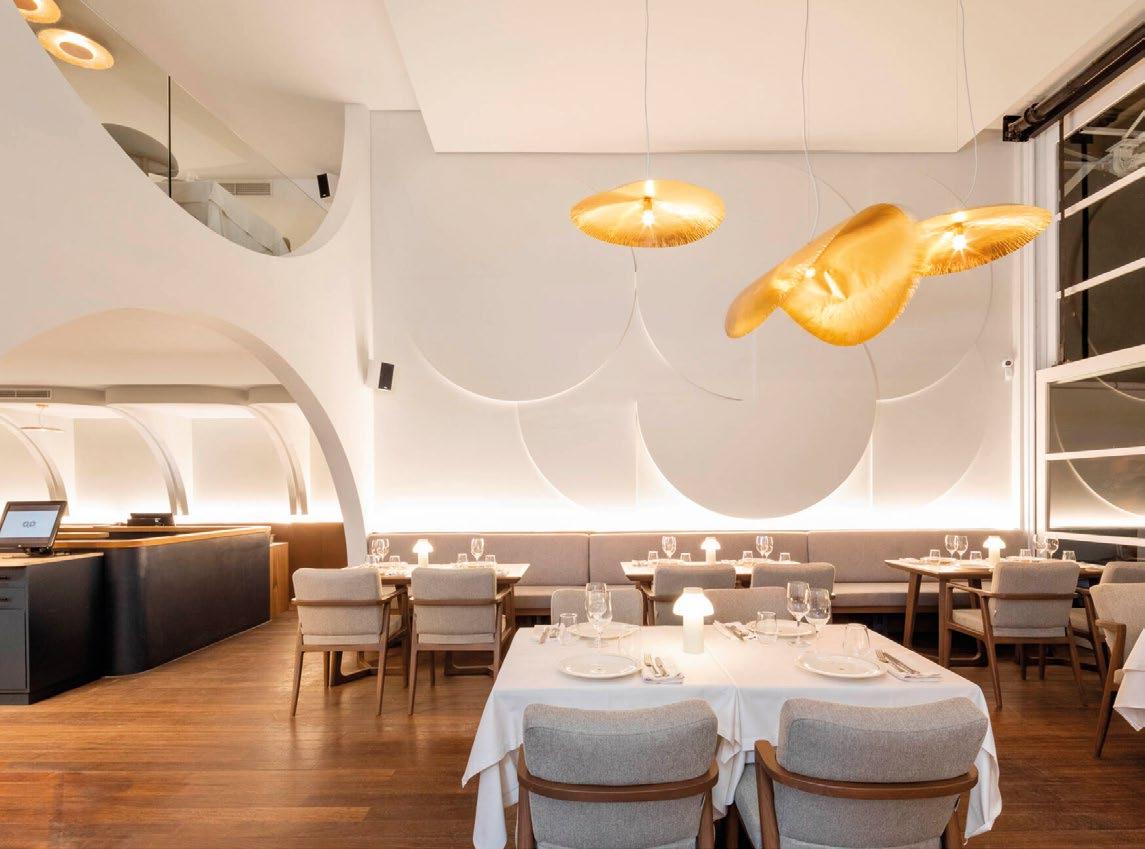
Makris
www.makrisathens.com
In Thiseio, on a quiet corner just steps from the Ancient Agora, Makris Athens Fine Dining delivers a deeply Greek experience. At the entrance, Corfiot amphora fragments under a glass floor subtly reference the concept’s origins; archaeological finds below reinforce Athens’s historical weight, a presence mirrored in the menu with the “gifts” of Greek land.
Chef Petros Dimas, with experience from top restaurants in Greece and abroad, offers a menu built on a clear philosophy: clean flavors, pure ingredients, and culinary technique. Most ingredients come from his family’s estate in Ancient Corinth: olive oil, fruits, herbs, and vegetables appear in every dish and are paired with specialized wine pairings or selected cocktails from a 250-label list of Greek and international wines.
It’s no coincidence that Makris earned a Michelin star within its first year – an exquisite gastronomic journey in Athens’s historic center for discerning diners.
Makris Athens | Astiggos 10 & Ermou 119, Athens www.makrisathens.com



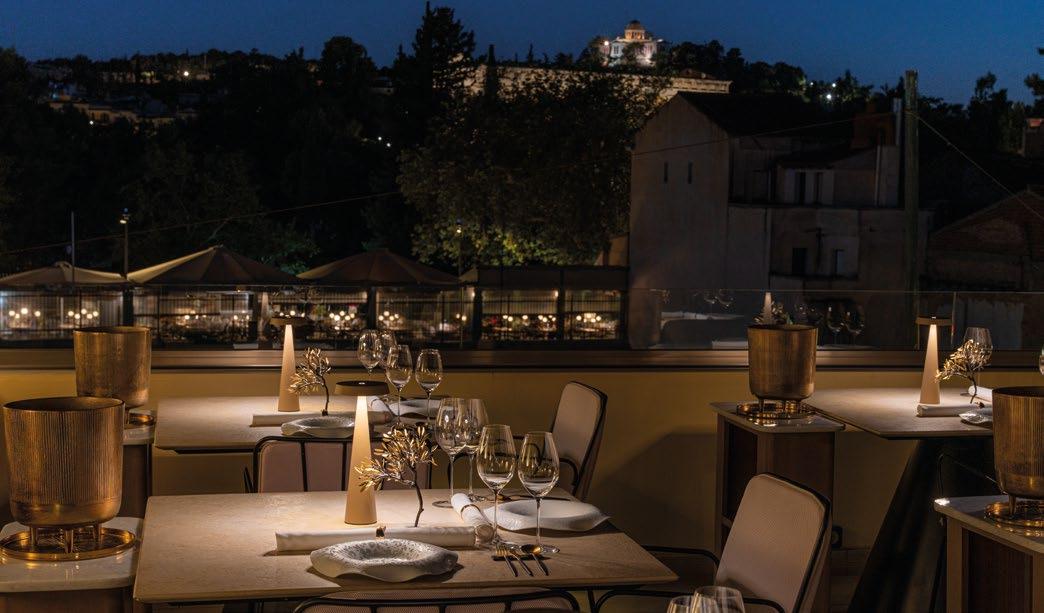
Cookoovaya
Cookoovaya |
www.cookoovaya.gr
A sunlit stroll through Koukaki leads to 3 Parthenonos Street, where a small, modern grocery store stands out across from a large supermarket. Batzina, owned by Kostas Fotiou, is a place with soul. Stocked with carefully selected products from small producers, homemade-style pies, teas, figs, herbs, and jazz playing softly on the radio, Kostas builds relationships, not just clientele. He shares stories, offers beers, and reminds us that shopping can be an experience. A store that honors its name - but above all, celebrates the spirit of hospitality.
Batzina Grocery | 3 Parthenonos Street
If any Athens restaurant embodies true urbanity, it’s Cookoovaya. Just behind the (still-closed) Hilton Hotel, on Hatzigianni Mexi Street, Periklis Koskinas has put his distinctive stamp on modern Greek cuisine. His cooking relies on seasonality, ingredient quality, and a profound understanding of Greek flavor. From a sautéed briam with greens and broad beans, to red prawns with delicate marinade or bucatini with wreckfish cheeks - and signature variations on bourdetto and bianco, two outstanding seafood disheseach plate builds a deep, balanced experience.
The space is one of the restaurant’s strengths: bright, open, graceful and elegant, yet still feeling like a destination for everyday dining.
Cookoovaya is a staple of Athens’s gastronomy - a culinary experience for both the city’s food lovers and visitors seeking Greek cuisine with character, substance, and urban sophistication.
Cookoovaya | Hatzigianni Mexi 2A, Athens www.cookoovaya.gr


Start your journey from Rethymno and head to the enchanting island of Milos. Explore SEAJETS’ updated schedule and discover Milos exotic beaches and unique geological landscapes. The trip is available every Friday and Sunday, with a travel time of just 2 hours and 45 minutes!
The trip begins with one of the most iconic beaches of the Cyclades: Sarakiniko. Its lunar-like landscape, formed by white volcanic rocks and crystal-clear waters, creates a scene of unparalleled beauty.
The second stop is at Aggeria Mines, one of the largest and most impressive bentonite and perlite mines in the world. Get a glimpse into Milos’s industrial and geological heritage.
Pollonia, a picturesque fishing village, is among the island’s most popular destinations. With its sandy beach and seaside tavernas, it’s the perfect place to experience the Greek hospitality.
The fourth stop is Plaka, the capital of Milos. Stroll through its narrow cobblestone alleys lined with whitewashed houses and colorful doors, savor local flavors, and soak in the breathtaking views of the Aegean Sea.
The excursion concludes at the port of Milos, Adamas. Full of life, with seaside cafés, restaurants, and shops, it’s the perfect last stop for an afternoon walk before heading back to Rethymno.

Optional visit to the Early Christian Catacombs of Milos, accessible via minibus (limited availability).
ΓΛΥΚΙΈΣ
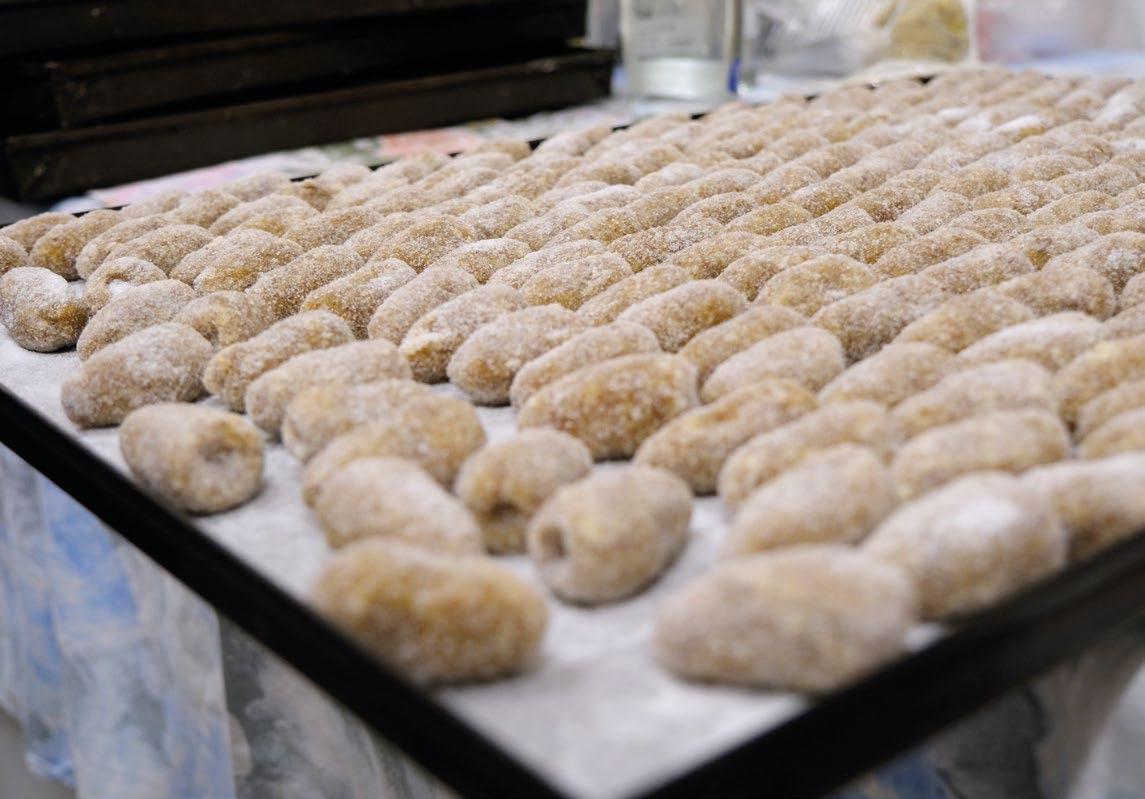
AMONG WINDMILLS, WHITEWASHED ALLEYS, AND THE ENDLESS BLUE OF THE AEGEAN, FLAVORS BECOME STORYTELLERS. THESE ARE NOT JUST RECIPES – THEY ARE SECRETS PASSED DOWN IN CHILDHOOD, GESTURES REPEATED DAILY AT THE WORKBENCH, FACES CRAFTING THE SAME SWEET EACH DAY WITH THE SAME CARE.
In Syros, loukoumi is more than a treat: it is memory, hospitality, and the legacy of a people displaced. In Sifnos, almond confections and the sweets of Artemonas are more than flavors –they are continuity itself, a kind of oral history told through sugar, rose water, and almonds.
We discovered two stories, two places, two workshops – distinct, yet closely related. Places where everyday life becomes ritual, and sweetness holds deep, ancient, living roots. And where, still today, a small taste can offer comfort – or simply, joy – on a plate.

BY ΖΟΕ LYMPERI
This June, Ermoupoli celebrated 200 years of pastry-making heritage with a festival that beautifully blended tradition with modernity. Pastry chefs from Greece and abroad gathered in Syros for a sweet celebration of memory, hosted by the Syros Gastronomy Club. Inspired by the island’s traditional confections, they created both classic and contemporary variations, all in honor of the bicentennial since the founding of the Cycladic capital. Naturally, Dina Sykoutri couldn’t be absent from this event. A true representative of Syros’ culinary heritage, she is almost synonymous with the island’s iconic sweet: loukoumi.
That’s how I found myself wandering down the quaint alley of Mystras Street. At number 8, a sign reads: Sykoutris Loukoumi Workshop – Established 1928. Inside, beside the copper kettles, trays of flour, weighing scales, and sugar-dusted counters, Ayman is packing boxes with freshly cut loukoumi cubes, and gestures for me to try one. My favorite flavor? Bergamot. Dina agrees – it’s excellent. To this day, she still eats loukoumi daily: “Every day, whenever it’s needed. Much more in the summer, far less in the winter,” she says.
Next to us, boxes are filled with flavors: mastic, rose, almond or without, walnut and honey, coconut, with or without bite-sized portions. And of course, the traditional halvadopita with almond or pistachio.

“I learned the loukoumi recipe very young. It wasn’t a secret – just part of our everyday life. What impressed me was its simplicity. It’s the simplest sweet recipe: water, sugar, and starch. Such a humble recipe, yet it conquered the world. It’s a sweet born and intertwined with Ermoupoli, because they share the same origin – the Chiot refugees of 1822,” she explains.
The first kettle of loukoumi in Syros is said to have boiled in 1832. Today, Dina Sykoutri’s workshop is the smallest in Ermoupoli. Her father arrived from Smyrna in 1922, aged 15. He had already learned the craft







from his own father, who made loukoumi back in Asia Minor. In 1928, he was granted a license to open his own workshop. On the walls, your gaze falls on awards and distinctions the family has earned, framed alongside archive photos – including one of Dina Sykoutri with Syros-born poet Manos Eleftheriou.
We stroll down together from the workshop to the harbor – she’s expected to open the family shop in the historic market on Chios Street. Now in her eighth decade, Dina is tireless: on her feet all day, serving customers, checking what’s needed for the next kettle, managing orders across Greece and abroad, and always speaking directly with everyone herself.
That’s incredible stamina! You’re on your feet every day? I ask.
— Always!
— Can you imagine ever stopping?
— No, that’s unthinkable!
The taste of loukoumi has always been there, after all – present at both celebrations and sorrows for the people of Syros. It carries with it the stories of their ancestors. In homes and in cafés alike, a small loukoumi placed on a toothpick, right beside a cup of Greek coffee. Since 2019, loukoumi has also been officially listed in Greece’s National Inventory of Intangible Cultural Heritage.
“It’s very important – and very difficult – because all the documentation had to be found,” notes Dina. “You don’t just get on the list because you make a good sweet. It’s a matter of substance – there must be proof. I believe proof is necessary in everything.”
And as everyone chases after the freshest loukoumi, I leave with the sparkle of Dina Sykoutri etched in my mind – and in my hands, a sweet story from the salty waters of the Aegean.
Traditional Loukoumi of Syros – Sykoutris, 5 Chiou Street, Ermoupoli 84100 | Production Facility: 8 Mystras Street














/
BY PEPI NIKOLOPOULOU

IN THE HEART OF ARTEMONAS, A PASTRY SHOP WITH NEARLY A CENTURY OF HISTORY STILL SCENTS THE AIR WITH ROSE WATER AND MEMORIES.
In one of the picturesque alleys of Artemonas, a pastry shop stands out as if it stepped straight out of the Cyclades’ sweetest memories. Housed in a building dating back to 1896 – once a home, later the island’s first primary school, and, in 1933, Sifnos’ very first patisserie – Theodorou family’s shop , painted in the whites and blues of a Cycladic house, welcomes locals and travelers with open doors and shelves full of sweet aromas


and nostalgia. The scent of freshly baked amygdalota – almond confections spread out on trays – fills the air.
Loukoumi and pasteli, sugar-dusted or plain kourabiedes, halvadopita, “submarine” spoon sweets, and of course, the island’s famed almond delights. These legendary little sweets, a delicate craft marked by Sifnian finesse, are offered at weddings, festivals, baptisms – and have been lovingly kneaded by the same hands of tradition since 1933.
“All the traditional sweets of Sifnos and the Cyclades,” says Vasilodimos Theodorou, proud steward of the family legacy and the third generation at the helm of the workshop.
The story begins in 1922, when his grandfather Giorgos Theodorou, originally a potter, learned the art of loukoumi and halvadopita on Syros. A decade later, he returned to Sifnos and opened the family shop – offering not only confections but also the island’s very first ice cream. A remarkable feat for the time, considering that ice was shipped from Piraeus by boat and then carried to Artemonas by mule. In 1967, his son Nikos Theodorou took over, continuing the tradition to this day.
The shop’s steady clientele is a testament to its quality and authenticity: locals return for the flavors of their childhood, and visitors discover the soul of Sifnos through its sweets.





There’s only one element missing from Vasilodimos’ daily Sifnian life: the sea. He has never gone swimming. Not for lack of will, but because, at age five, while vacationing in Cheronisos, an octopus grabbed his leg and pulled him under. Since then, he’s stayed away from the water – just like his mother, Mrs. Katina, who has never gone into the sea either.
Yet Mrs. Katina is almost always at the shop, standing behind the counter with a bright gaze and a smile as sweet as the treats she serves. If you don’t ask her about the octopus, she’ll likely offer you a treat – and maybe whisper a tale or two that smell of sugar, almonds, and summer.
If there’s one thing that remains unchanged across the Aegean – beyond the light and the sea – it’s the need to remember. With a piece of loukoumi or a bite of amygdaloto in hand, with a grandmother behind the counter and the scent of sweetness wafting through the alley, each dessert becomes a tiny journey through time. A keepsake of all we’ve loved. A quiet way of saying:
“We are still here. And we carry on.”
INFO
THEODOROU PASTRY SHOP
Artemonas, Sifnos, Tel. +30 22840 31370




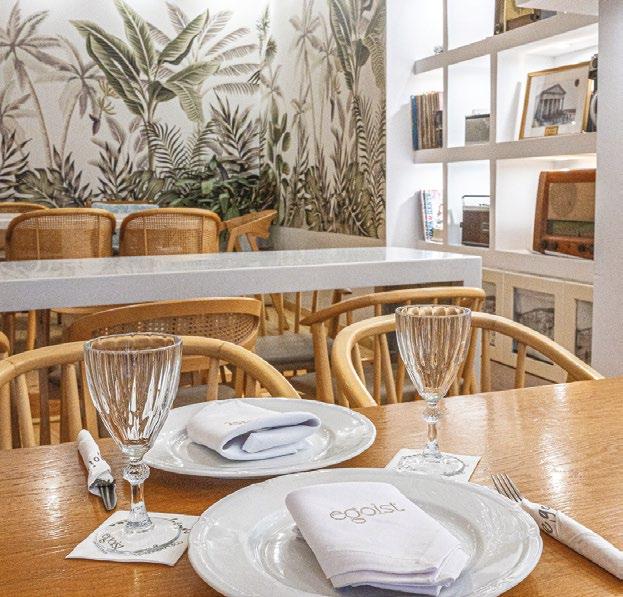
Situated in the port of Adamas, Egoist cafe offers an excellent blend of tranquillity, delicious �lavours and authentic island hospitality. For coffee, breakfast or brunch, delicious food and unique cocktails, Egoist is the ultimate destination for every moment of the day!









BY DEANA KARTSAGOULI
An Exhibition about clothing, identity, and our times
This is Athens, “Tsoli” / Christos Katsavochristos, 2018, Athens, Greece Color archival inkjet pigment print 60 x 90 εκ. 1/6
THIS IS ATHENS is a portrait series of Athenians. The sprawling concrete of this postmodern metropolis stands in stark contrast to the national myths, rural folkloristic traditions and elements of an ancient civilisation. In the shifting surrounding of the city, how do Athenians see themselves? The staged sittings juxtapose the characters with the clash between the contemporary environment and fragments of their heritage.
Bernier/Eliades-Αθήνα/Βρυξέλλες,

FROM THE RUNWAY TO THE STREET, AND FROM ART TO POLITICS, THE EXHIBITION “YOU ARE WHAT YOU WEAR” AT THE MUSEUM OF CONTEMPORARY ART OF CRETE UNRAVELS THE STORY OF CLOTHING LIKE NEVER BEFORE.
What does what we wear say about us? Is it merely a matter of necessity or something more complex? Many believe that it reflects who we are – a silent declaration to the outside world. Often, it’s a way to belong to a social group – or, conversely, to stand out from one. These and other questions are brought to the forefront in the new exhibition YOU ARE WHAT YOU WEAR at the Museum of Contemporary Art of Crete in Rethymno.
The 32 works featured in the exhibition come from the National Museum of Contemporary Art (EMST), the Museum of Contemporary Art of Crete (MSTK), the ATOPOS Contemporary Visual Culture organization, the Bernier/Eliades Gallery (Athens/Brussels), Crux Galerie, Zoumboulakis Gallery, private collections, and the artists themselves.
Greek and international artists and designers come together to form a remarkable ensemble. Fashion and contemporary art meet, clash, and intertwine –ultimately speaking to something deeper: the image of the human being across time and society.
Martin Bernal: BlackAthena: The AfroasiaticRoots of ClassicalCivilisation. Η
VOGUE HELLAS.
Black Athena, Nikopolis, 2004, Athens, Greece
In collaboration with Jannis Tsipoulanius Color archival inkjet pigment print
70 x 85 εκ. 1/10
BLACK ATHENA is conceived as a fashion editorial with Naomi Campbell in reference to the writing of Martin Bernal: “Black Athena: The Afroasiatic Roots of Classical Civilisation”. The cover story was published in the olympic issue of VOGUE HELLAS.
As is often the case, the idea for the exhibition was born out of a casual conversation. During this exchange, the curators – Maria Marangou, Maria Panagidou, and Stavros Kavallaris – shared their common passion for art and fashion.
The question that arose was not simply what these two fields have in common, but how they influence each other – especially today, as the boundaries between them grow increasingly fluid. As the curators explain: “That’s how we set out on this journey – seeking the reciprocal relationship between contemporary art and fashion within the context of political and social conditions. Often, art – and fashion, too – serve as prophetic mechanisms, foreshadowing shifts in each era’s status quo.”
Among the participants are major figures from the contemporary visual and design scene, including Rebecca Horn, Hussein Chalayan, Maria Papadimitriou, Vanessa Beecroft, Dimitris Dabis, Versavais, Yiannis Bournias, Blind Adam, and many others.

INFO
Τ: +30 28310 52530 - E-mail: info@cca.gr • http\\: www.cca.gr

Some works are based on garments, others reflect on the very concept of clothing – or its absence. In every case, the garment becomes a springboard for a more personal, political, and social narrative.
A special place in the exhibition is reserved for a tribute to Sophia Kokosalaki, the renowned Greek fashion designer who passed away prematurely in 2019. Born in Rethymno, she studied at Central Saint Martins and built an international career in London and Paris. Kokosalaki succeeded in weaving Greek tradition into contemporary aesthetics – without ever becoming folkloric.

“Greek cultural heritage was a constant reference for Sophia Kokosalaki – always transcending the expected, always avoiding the folkloric. Minoan civilization, ancient Greece, folk traditions and handicrafts, Crete – her place of origin, childhood memories, and summer returns – became material charged with memory and emotion, feeding her design world. Ancient Greek drapery, macramé, the Snake Goddess, Byzantine iconography, and Greek embroidery met with influences from urban life, street culture, and the aesthetic of the new wave and post-punk music scenes. The result was clothing with intensity, character, and innovation – a personal, minimalist interpretation of ‘Greekness,’ perfectly in tune with the tempo of the present,” notes fashion historian Meti Tsoukatos.
Her signature drapes, handmade details, interplay between silk and leather, her embrace of street culture and new wave sensibilities – all shaped the unique style of a designer whose work became global without ever losing its Greek identity. The tribute showcases 24 of her creations, along with jewellery and designs from her family’s collection. The accompanying text is authored by Meti Tsoukatos.
The exhibition is accompanied by a bilingual catalogue, featuring texts by the artists themselves and photographs of the works.
An exhibition that prompts reflection. A reminder that what we wear isn’t always superficial. It might be part of who we are – or at least, who we wish to be.
INFO
MUSEUM OF CONTEMPORARY ART OF CRETE
Exhibition Duration: May 17 – October 31, 2025
32 Mesolongiou St., 74100 Rethymno, Crete T: +30 28310 52530 – E: info@cca.gr • www.cca.gr

by
Until recently, we travelled to get lost in unnamed alleys, to sit in a square where time flows slowly, to hear a local story only the locals know how to tell. We travelled to feel the air of a place, the scent of pine, the sound of the sea, the light that falls differently on an unfamiliar horizon.
Today, artificial intelligence now a part of our everyday life - doesn’t seek to replace that experience, but to offer a new perspective. The journey of the future isn’t less human. It’s enriched, personalized, and interactive. AI becomes a narrator and a fellow traveller, an invisible companion who reads your mood, detects your interests, and suggests experiences on the map that aim not just to please - but to touch the heart.
From recommending a forgotten archaeological site to reminding you of a local celebration in a nearby village, AI highlights what you might otherwise miss. It acts as a discreet interpreter of cultures, a curator of moments, connecting a place’s history with the personal preferences of the user.
The journey still belongs to us - only now we view it through a broader, more vivid, and more personalized lens.
In this era of rapid artificial intelligence development, Greece is not standing on the sidelines. Through initiatives like the mAiGreece app, it proves that it can be at the forefront of innovation. We spoke with Dimitris
Alexandrou, who leads one of the most dynamic AI companies in Greece, and he explained how UBITECH is investing in this technology by quite literally placing the end user at the center. We spoke with Dimitris Alexandris, head of one of Greece’s most dynamic AI companies with an active role in Europe’s digital transformation. He explained how UBITECH invests in participatory technology – quite literally giving a voice to the user. Knowing that a journey now begins long before check-in, UBITECH set out to create an innovative app that would combine artificial intelligence with tourism intelligence. The result is mAiGreece - a digital “friend” that aims to radically reshape how travellers engage with a place.
Imagine being on an island someone recommended, but you know little about. You arrived yesterday, no plan in hand, just the certainty that you needed to press pause for a while. Now you’re sitting at a café, wondering where all the well-dressed locals are headed. You open mAiGreece - mostly out of curiosity. And suddenly, it feels like someone knows you.
It suggests a personalized itinerary for your stay on the island, based on your interests – a nature trail starting just a few steps away, a beach you didn’t even know existed and is easily accessible, or a village tucked away from prying eyes.
It’s not magic. It’s that the app understands what interests you - and instead of leaving you searching, it gently leads you to what you wouldn’t want to miss. Not with rankings or checklists. But like a friend who knows the island - and knows you too.
And the best part? If you need anything - whether urgent or simply useful - from the nearest pharmacy to the embassy, it’s already at your fingertips. Because traveling means freedom, but also knowing that if something goes wrong, you’re not alone
The platform’s high-end visual design and easy content sharing further strengthen your connection to the destination, cultivating a global community of travellers - true ambassadors of Greece.
GAiA is an end-to-end platform designed to bring TN applications from the lab to production with full transparency and control. “GAiA, because we provide developers with a solid foundation on which they can build their AI applications. CoDev, because GAiA is a co-development environment that allows the client or partner team to co-create alongside UBITECH’s team. And finally, Glassbox - because for the first time, the 'box' in which the user creates, experiments, and tests their implementations has transparent walls, offering a full view of performance, behaviour, and resource consumption.”
What sets GAiA apart is its development cycle philosophy, where each iteration brings the application closer to the operational vision. Its integrated AI assistant enables the definition of personas, tone of voice, and collaboration rules, ensuring a natural flow of dialogue with the end user. At the same time, responses are no longer just plain text: the platform generates real-time, AI-powered dynamic user interfaces that adapt to the content and context of the conversation.
/ BY
PEPI NIKOLOPOULOU
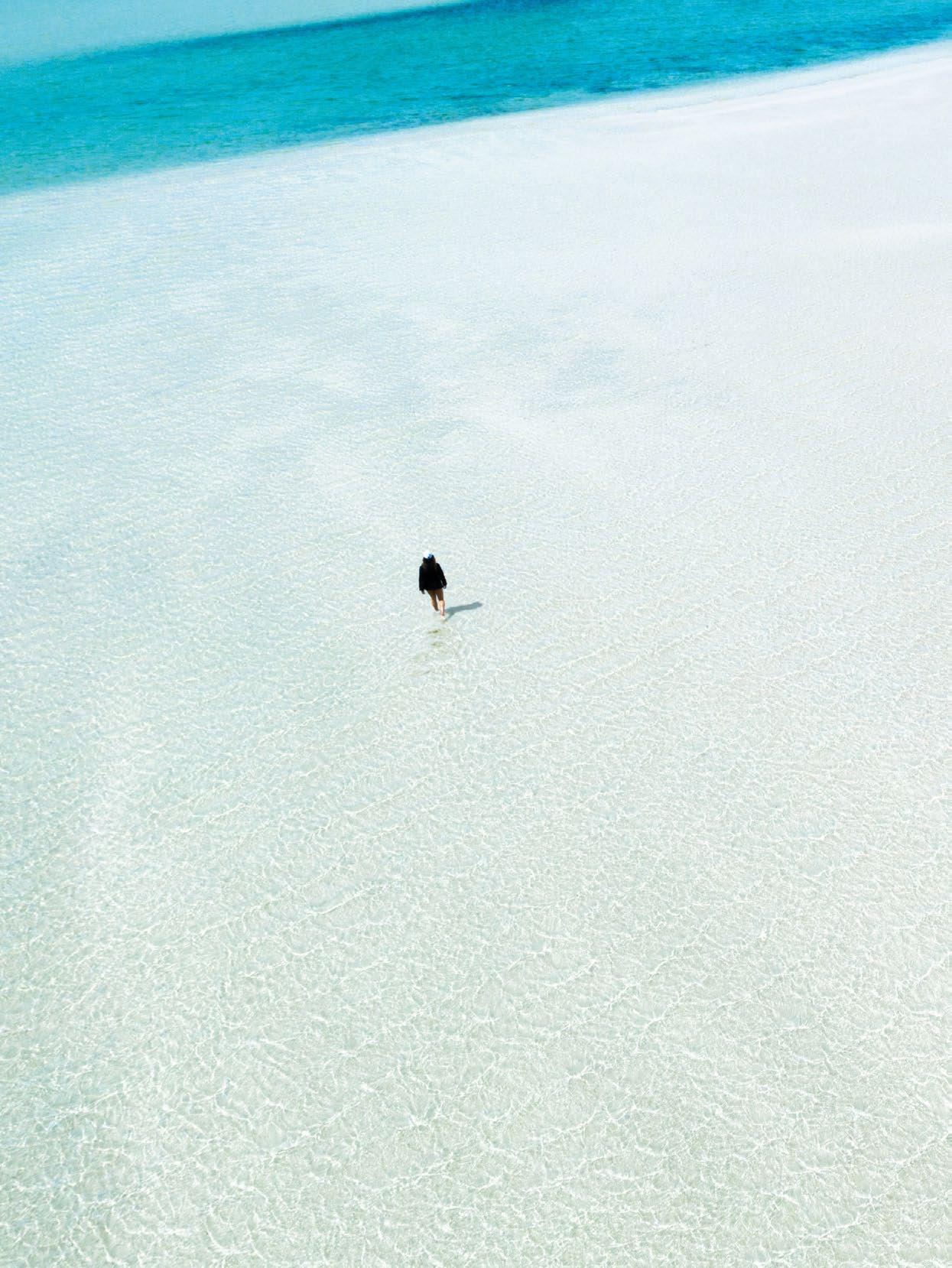

Travel smart. Discover the heartbeat of every place. ΑΠΟ
The journey began one afternoon with no expectations. No grand museums, no photos for Instagram. Just one need: to change scenery, to break free from the autopilot of everyday life, to hear other voices, to find myself in a different setting.
In Paros, I met a woman from Mexico who had just arrived from Stockholm. She didn’t know anyone. We ended up in a small pottery workshop in a village that didn’t exist on any tourist map. Over clay, we spoke about the idea of “home” even though we hadn’t grown up using the same word for it.
In Athens, one night when I felt like a stranger in my own city, someone invited me to dinner. There we were, talking about grandparents and recipes, about how roots are replanted each time someone looks at you with genuine interest and asks, “Where are you from?” “What’s your birtplace?” That’s when my perspective started to shift. I began to travel to connect.
In searching for travel apps that take you places, we discovered one that actually connects you to them: Cosmopolis. A fellow traveller on my journey— one who seemed to know not only every place, but parts of myself I hadn’t quite mapped yet. Like a close friend who gets your rhythms, who knows when you need silence and where to find it, or how to lead you to a circle of people asking the same questions you are.
ImpossibleRoots, the so-called “digital companion,” asked all the right things: Whatareyoureallylooking for in this city? Where do you feel most like yourself?
And that’s how I ended up in a quiet café in Naxos, run by digital nomad parents; on a serene beach in Arki, sharing the moment with local fishermen; and at a spontaneous film screening under the stars in Sifnos.
Whether you’re already aboard a SEAJETS ferry, planning your next escape, or stepping into a new destination, scan the QR code and dive into what you love.
Because the best journeys are the ones that connect us to places, to people, and to ourselves.



BORN ON THE SLOPES OF THE WHITE MOUNTAINS, THE RIZITIKO SONG EMBODIES THE CRETAN SPIRIT LIKE FEW OTHERS. IT WAS CREATED TO ACCOMPANY BATTLE, JOY, MOURNING, LOVE – AND TODAY, TRADITION AND HISTORICAL CONTINUITY. WITHOUT MUSICAL INSTRUMENTS, RELYING SOLELY ON THE HUMAN VOICE, RIZITIKO SONGS WERE PASSED DOWN ORALLY, REFINED THROUGH TIME, AND PRESERVED FROM GENERATION TO GENERATION. IN 2023, THEY WERE RECOGNIZED BY UNESCO AS PART OF GREECE’S INTANGIBLE CULTURAL HERITAGE.

If the White Mountains had a sound, it would undoubtedly echo the melody of a rizitiko. With the grandeur, gravity, and austerity of its Doric character, it would recount the feats of Digenis Akritas, describe the battles of Crete, the marches of the rebels, and the stories that circulated through the villages without ever being written down.
Yet they survived – kept alive through oral tradition. Each voice added something new, altered a few words, made the stories their own, shaping them into their final form.
As Eftychis Kopasakis, president of the Federation of Rizitiko Song Associations, explains: “Rizitika are folk poetry created by anonymous composers, polished over time. Time shapes the rizitiko. Any attempt to write a new one must pass through the voices of many singers. Elements will be added and removed, and what survives – in thirty, forty, fifty years – will be something else.”
In 2023, thanks to the efforts of the Federation based in Chania, rizitiko was officially inscribed by UNESCO as part of Greece’s Intangible Cultural Heritage.

Today, about 30 active groups and associations make up the Federation of Rizitiko Song Associations. It was formed to preserve the song’s core rules and to prevent its mass commodification or distortion through pseudo-renditions using musical instruments.
These groups gather around a table and sing the preserved songs just as they learned them. Around 700 songs have survived, and very few new ones are added.
“It’s not easy to create rizitika,” explains Mr. Kopasakis. “The last ones were composed during World War II, in the Battle of Crete, and later, during the tragedy of Cyprus. That’s because the conditions that birthed them no longer exist. Also, the fast pace of life today, the constant change in events and topics, doesn’t allow someone to dwell on a moment or emotion long enough for lyrics to emerge.”
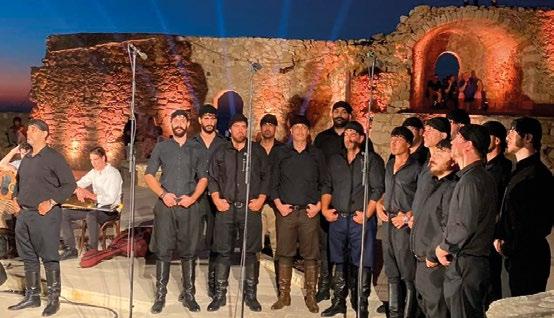
Rizitika belong to the category of traditional Greek folk songs but differ from those of the rest of the country in one fundamental way: they are not accompanied by musical instruments. They rely solely on the human voice.
“Their music lies in their melody,” says Mr. Kopasakis. “There are 35 known surviving melodies.” The songs are strictly classified into those of the tablás (table), sung during feasts, and those of the stráta (road), sung while walking.
Their language – Cretan, with Venetian influences and a few Ottoman words – reveals the era in which each song was born.

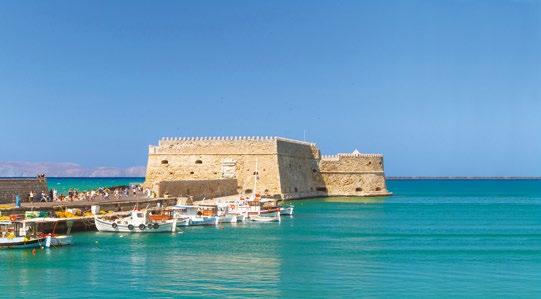
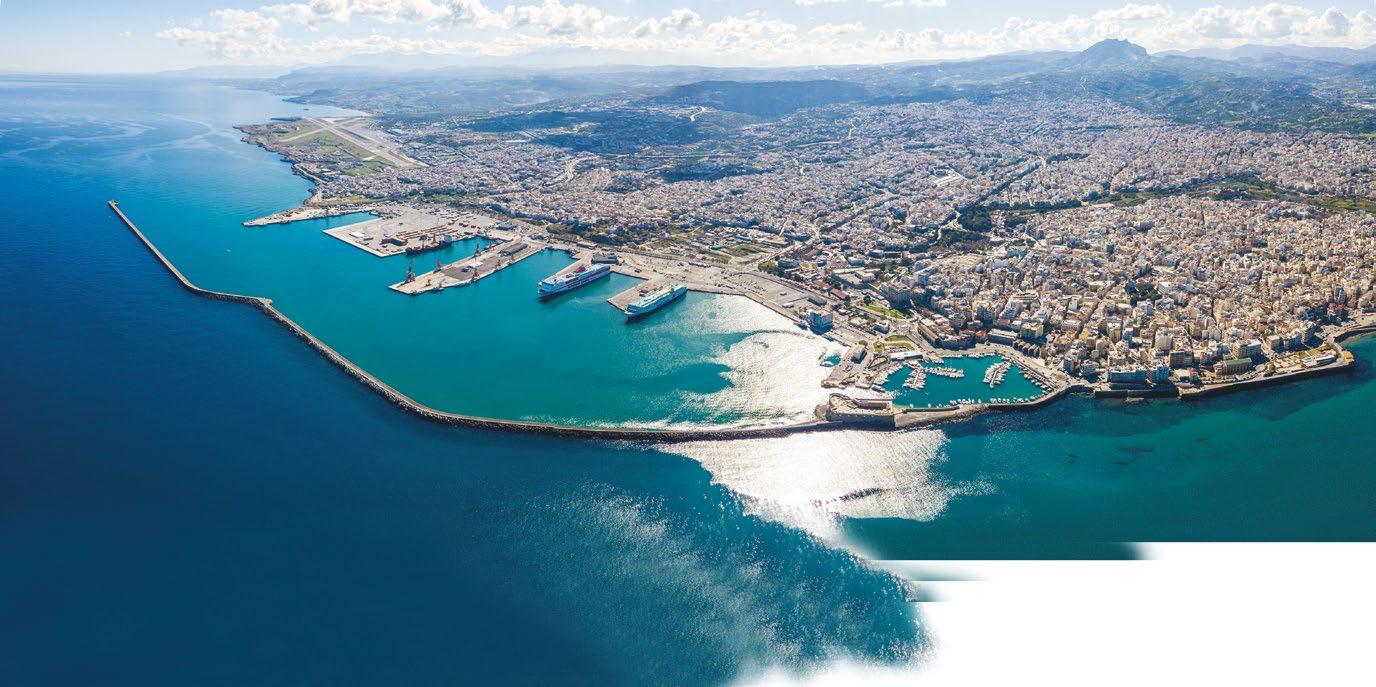


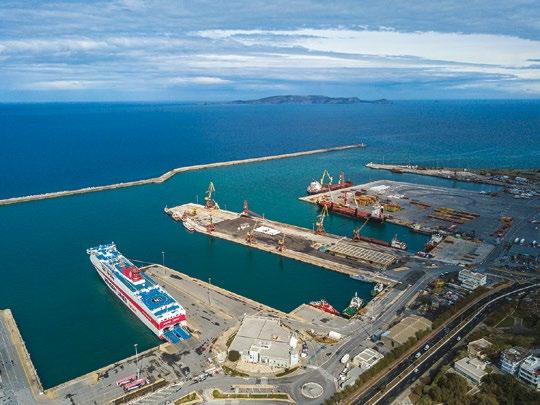





Much like ecclesiastical hymns – indeed, rizitika often resemble Byzantine church chants – they follow strict rules. Their rigid monophony allows no improvisation. No changes in structure or melody are permitted.
Their themes are diverse, yet because they stem from Doric paeans, they are primarily heroic and warlike. Love songs exist, but they are fewer in number.
Traditionally, and historically, they were sung by men, often on the battlefield. “There were rizitika sung by women,” notes Mr. Kopasakis, “but they were different from those sung by men. In the past, tables in Crete were never mixed. Women sat separately and sang their own songs – few of which survived. Also, as in ancient Greek drama, where men played female roles, some rizitika written from a woman’s perspective were performed by men.”
As Crete evolves and voices grow fewer, as long as there are those who love and honor it, the rizitiko will continue to claim its place where it was born: in courtyards, around the table with friends, at the “roots” of the White Mountains.
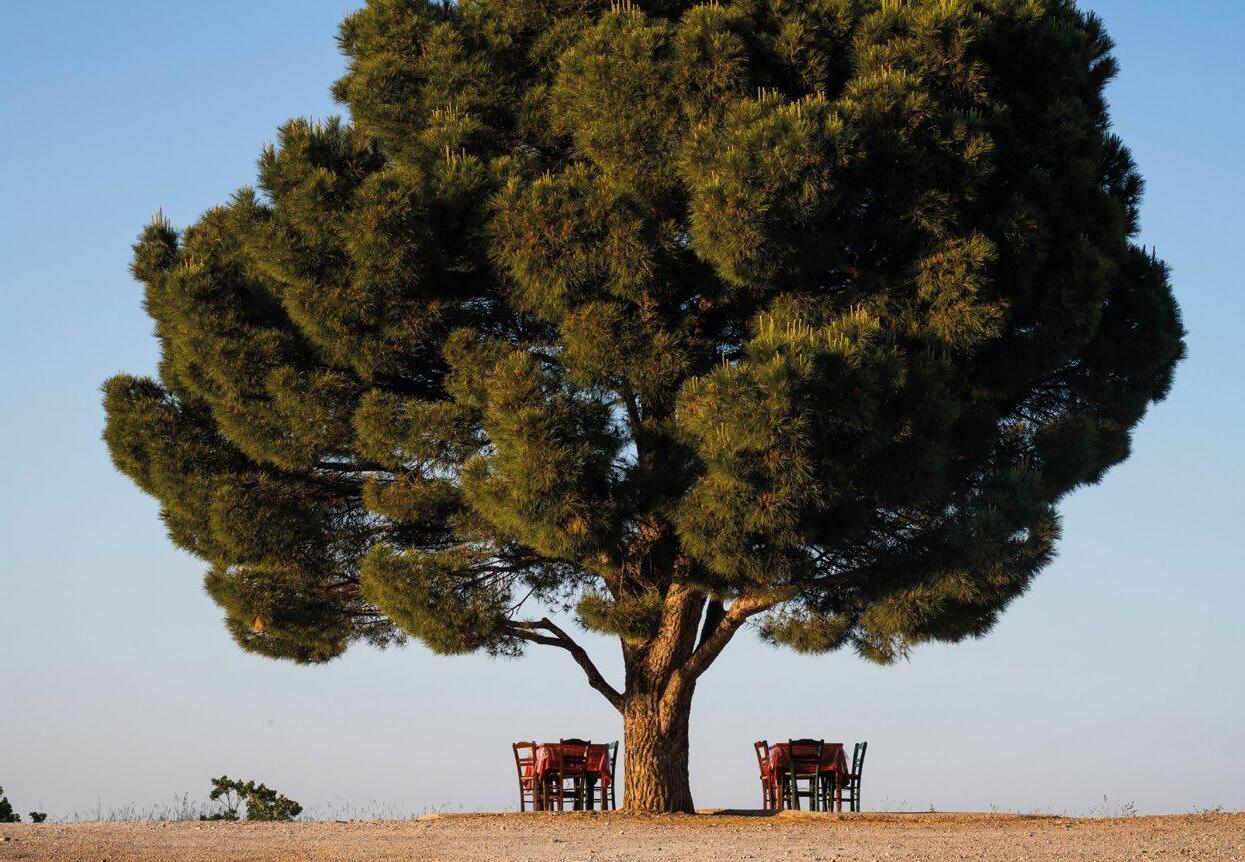
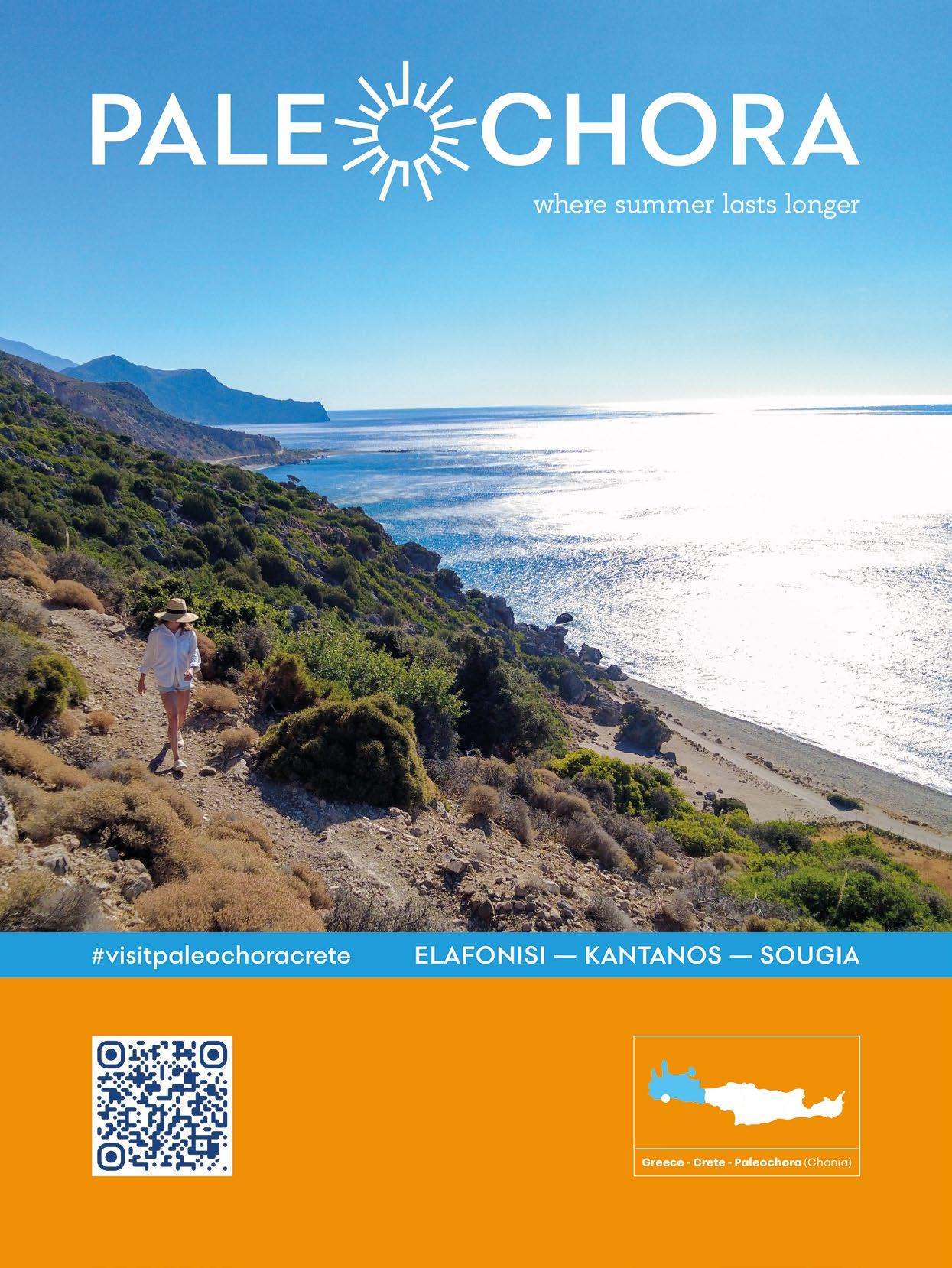
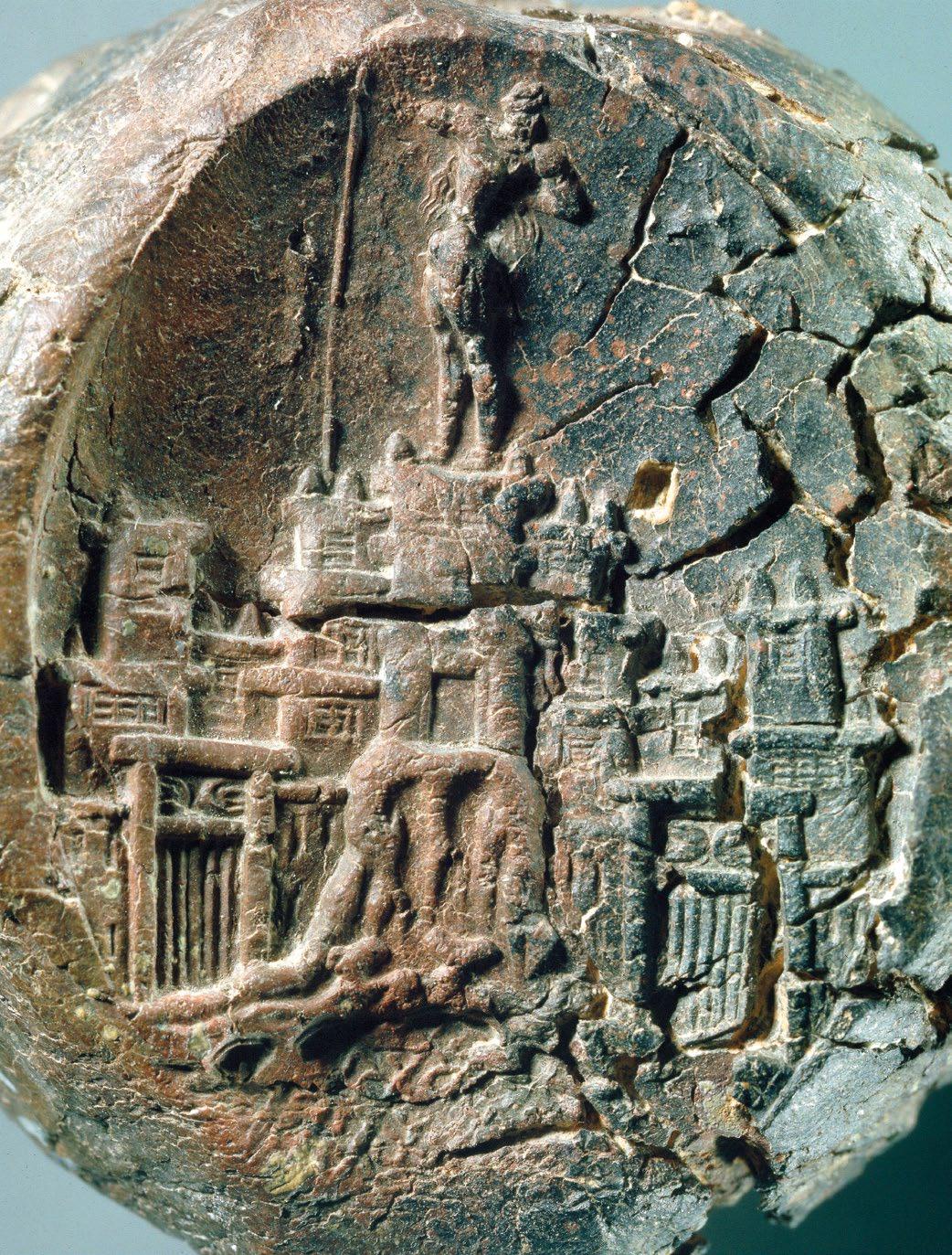
The clay "Seal of the Lord" (1450–1420 BC). Discovered during the Greek-Swedish excavations on the Kastelli Hill in the Old Town of Chania (Agia Aikaterini Square). It is believed to depict the Minoan palace of Chania, as seen from the sea.
BY DEANA KARTSAGOULI
"I was troubled by how to communicate to the public the thrilling yet macabre discovery of human sacrifice"
ARCHAEOLOGIST MARIA VLAZAKI SPEAKS ABOUT ONE OF THE MOST HAUNTING DISCOVERIES OF HER CAREER – THE RITUAL SACRIFICE IN MINOAN-MYCENAEAN KYDONIA AND ITS RELEVANCE TO TODAY’S WORLD.
Archaeologist Maria Vlazaki speaks about one of the most haunting discoveries of her career – the ritual sacrifice in Minoan-Mycenaean Kydonia and its relevance to today’s world.
Ancient Kydonia, buried beneath the modern city of Chania, was one of the most important cities in Crete. Archaeological excavations on the Kastelli hill, above the old harbor, have revealed a palatial center from the Minoan and Mycenaean periods, marked by rich cultural continuity and intense activity.

The most recent phase of excavation by the Ephorate of Antiquities of Chania, directed by Maria Vlazaki, focuses on 1 Katre Street. Among the shocking finds, the most extraordinary is the only documented case of a virgin sacrifice in the Mycenaean world (13th century BC). For Minoan Crete, a well-known case is the 17th-century BC sacrifice of a man at the sanctuary of Anemospilia in Archanes.
Maria Vlazaki, former head of the Ephorate of Antiquities of Chania and former General Director of Antiquities and Secretary General of the Ministry of Culture, has devoted her life to uncovering the secrets of Kydonia. She speaks in depth about the revelation of the ritual sacrifice and its meaning.
What were the findings of the human sacrifice at Kydonia?
The bones of the virgin were found dismembered, scattered in the deposition area and mixed with the bones of animals that had also been sacrificed. All were slaughtered nearby and later placed on the earthquake-damaged floor, after parts of it had been cleared and then covered with stones and slabs. This is interpreted as a chthonic offering to the gods and

| Kastelli Hill. Excavation at 1 Katre Street. A Minoan-Mycenaean palace. Large hypostyle hall – loggia. The crushed lime floor, destroyed by the major earthquake of the 13th century BC.
demons after a powerful earthquake (estimated at 6.5–7.5 on the Richter scale) that struck in the early 13th century BC.
It is important to note that the large ceremonial hall of the palace on Katre Street, where the deposition was found, is intersected by an active fault line that fractured, raised, and collapsed the floor during the quake. Imagine the terror those people must have felt.
Yet it’s not only the finding itself that is significant – but the way the sacrifice was conducted. The location of the remains, the dismemberment method, and especially the fact that the girl’s skull was opened along the cranial sutures, point to a type of ritual sacrifice never before documented.
What do we know about the girl?
She was 12–14 years old, according to anthropologist Dr. McGeorge. Ancient DNA analysis by the Max Planck Institute revealed she carried approximately 30% mainland genetic ancestry.
What does this tell us about the role of women in ritual practices of the time?
If we compare this case to virgin sacrifices described in ancient Greek texts and tragic plays, we can deduce that such acts occurred in the Mycenaean era, in the 2nd millennium BC. Homeric mythology is full of such examples – like Iphigenia and Polyxena.
Well-known also are the sacrifices of the daughters of Erechtheus, Cecrops, and Leos in Attica, as well as the daughters of Orion and Heracles. Notably, even the daughter of King Kydon, Eulymene, was sacrificed here in Kydonia.
Men went to war. A virgin would be sacrificed for the good of the land in exceptional and dire circumstances. These were not acts of barbarity but measures to avert disaster or appease the Gods following destruction.
What was your reaction when you realized the nature of the discovery?
At the end of the first excavation phase, on the last day, we uncovered a human shinbone, to our astonishment. Over the following years, more human bones emerged, prompting us to bring in anthropologist Dr. Photini McGeorge. For the animal bones, we collaborated with zooarchaeologist Dr. Dimitra Mylonas.
The experience with my colleagues was deeply emotional. It felt as though our ancestors were speaking to us. The discovery shook me. I was deeply concerned about how to communicate such a fascinating but also macabre finding to the public.
Another unique aspect is that this excavation takes place in a densely populated urban area. That must be very challenging.
Yes, it is indeed a particularly difficult excavation for two main reasons. First, due to the presence of thin, successive habitation layers in areas surrounded by modern buildings. Second, because the site is crossed by an active fault line. The effects of this fault’s activity over the centuries are visible in the excavation, especially the massive 365 AD earthquake – over 8 on the Richter scale. That was the “day of terror” when all cities of Crete were leveled, and the resulting tsunami reached as far as Alexandria.

INFO


The skull of the maiden, following its conservation (conservator: Anna Mylona)
Was the deposition located inside the palace?
Yes, the remains were placed inside a large hall – essentially a loggia – about 200 square meters in size. We aim to uncover as much of it as possible and eventually make it accessible to the public and scholars. In Archaic times, the space likely served as the forecourt of a public building. It lies north of the acropolis wall of Classical Kydonia. In the same area, two hoards of early Hellenistic coins were also discovered.
It seems this site never stops yielding surprises. Indeed. Just last year we found a clay inscribed label belonging to the palace archives. This confirms that we are excavating the palace of Minoan-Mycenaean Kydonia.
What lessons does this knowledge of the ancient world offer to modern society?
It helps us understand who we are and where we come from. It reveals the trajectory of human achievements – and failures. It also reminds us that history repeats itself. That’s fundamental. The disasters – natural or man-made – that we face today were also experienced by our ancestors.
Everything leaves traces of its time.
At the new Archaeological Museum of Chania in Chalepa, there are many videos and reconstructions to help the public – and especially young people – understand the antiquities on display. It’s essential that our cultural heritage becomes everyone’s heritage. People must protect it, preserve it, and resist offering everything up on the altar of profit.
INFO
ARCHAEOLOGICAL MUSEUM OF CHANIA
Located in the historic neighbourhood of Chalepa, 98 meters above sea level and designed by architect Theofanis Bobotis, the new Archaeological Museum of Chania houses exhibits that span from the Paleolithic era to Roman times.
15 Skra Str. Chalepa, Chania 73133 | Τel. +30 28210 23315 www.archaeologicalmuseums.gr

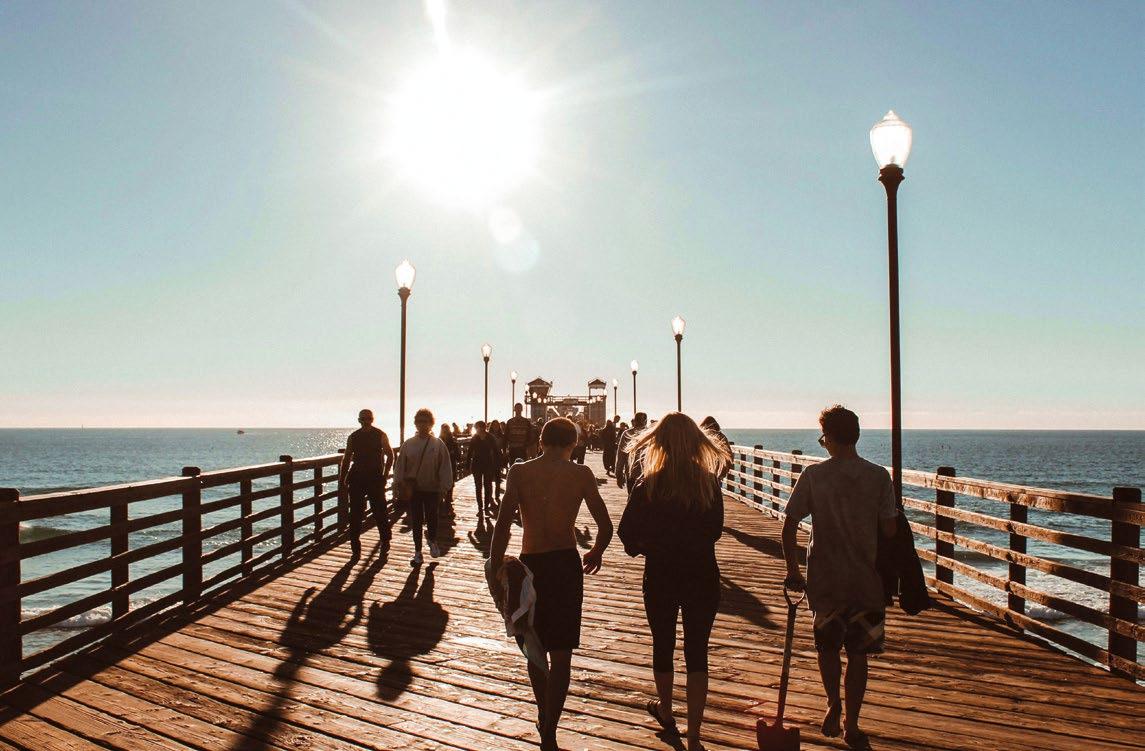
In today’s Greece, many people are looking for ways to engage meaningfully, to contribute, to be part of something that matters. HIGGS, based in Athens and active throughout the country, serves as a bridge: between citizens who want to offer their time and energy, and organizations that need support.
Since 2016, it has stood by small organizations and social enterprises that start out with vision but often lack resources or guidance. It provides free training, mentoring, and people who will truly listen – who help you plan, dare, and endure. Like a workshop of social care, HIGGS takes care of those who care for others.
Through programs like the Incubator and the Accelerator, small teams and new social enterprises receive training, support, and access to networks they often don’t have. The goal is not just survival – it’s to strengthen their voice and help them develop sustainable solutions with social or environmental impact.
And for those who may not have a plan yet but do have the willingness, there are other paths. Through HIGGS’s volunteer platforms, you can find where you’re needed. Not far away – right next to you. In a refugee support group. In a mental health network. In an environmental action. You don’t have to change the whole world. Just stand by one person. And there, something begins to shift.
HIGGS doesn’t promise miracles. It offers tools, relationships, trust. And a quiet, persistent reminder: society doesn’t change from above – but from beside, from within, together.

SEAJETS is the largest highspeed ferry operator in the world, registering a continuous growth in its industry.
SEAJETS is continuously developing its fleet, growing through its own capital and having almost zero bank liabilities. With the powerful development of its routes, SEAJETS has managed to attract tourists that wish to discover the beauty of the Greek Islands, while at the same time encouraging island hopping.
HIGH-SPEED VESSELS
6
3 0 FERRIES
HIGHSPEED FERRY COMPANY, CAPACITY-WISE, IN THE WORLD.
The ferry reached a top speed of almost 50 knots setting a new World Record for the Guinness World Records. Awarded by LLOYD’S LIST AWARDS as Ship Of The Year.
TOTAL CAPACITY
31.000 passengers
the Cyclades, Sporades, Dodecanese and Crete, and also from the ports of Piraeus, Rafina, Lavrio,
Covering the needs of every traveler that wishes to discover the Aegean, SEAJETS serves a total of 50 ports and more than 400 interconnections from Piraeus, Rafina Thessaloniki, Lavrio, Crete, Volos and Mantoudi Evia to final destinations in the Cyclades, the Sporades and the Aegean Sea.
50
PORTS AROUND THE AEGEAN SEA INTERCONNECTIONS
400
ACTIVE 12 months of the year & 4.600 vehicles
ESTABLISHED A COMPREHENSIVE NETWORK BY LINKING ALL ISLANDS WITH INTERNATIONAL AIRPORTS LOCATED IN THE AEGEAN SEA & CRETE
MORE THAN
1.000 employees
Heraklion – Santorini
1 HR & 45 MIN
Piraeus – Mykonos
1 HR & 40 MIN
DYNAMIC GROWTH OF PASSENGER COUNT
ECONOMY, SILVER, CLUB & PLATINUM SEATS WITH COMFORTABLE SEATING AND PERSONALIZED SERVICE
CONTINUOUS GROWTH OF FLEET
Rethymno – Piraeus
5 HRS & 45 MIN • VESSELS • HELICOPTER FOR EMERGENCY CASES
S T A N D B Y
MORE THAN IN GREECE AND AROUND THE WORLD
VISION: TO CONNECT THE AEGEAN FROM LENGTH TO BREADTH
2.000 AGENTS
We support the communities of the Aegean!
With consistency and responsibility, we stand by the islanders, offering reliable sea transportation, targeted sponsorships, and social initiatives in health, education, sports, and culture.
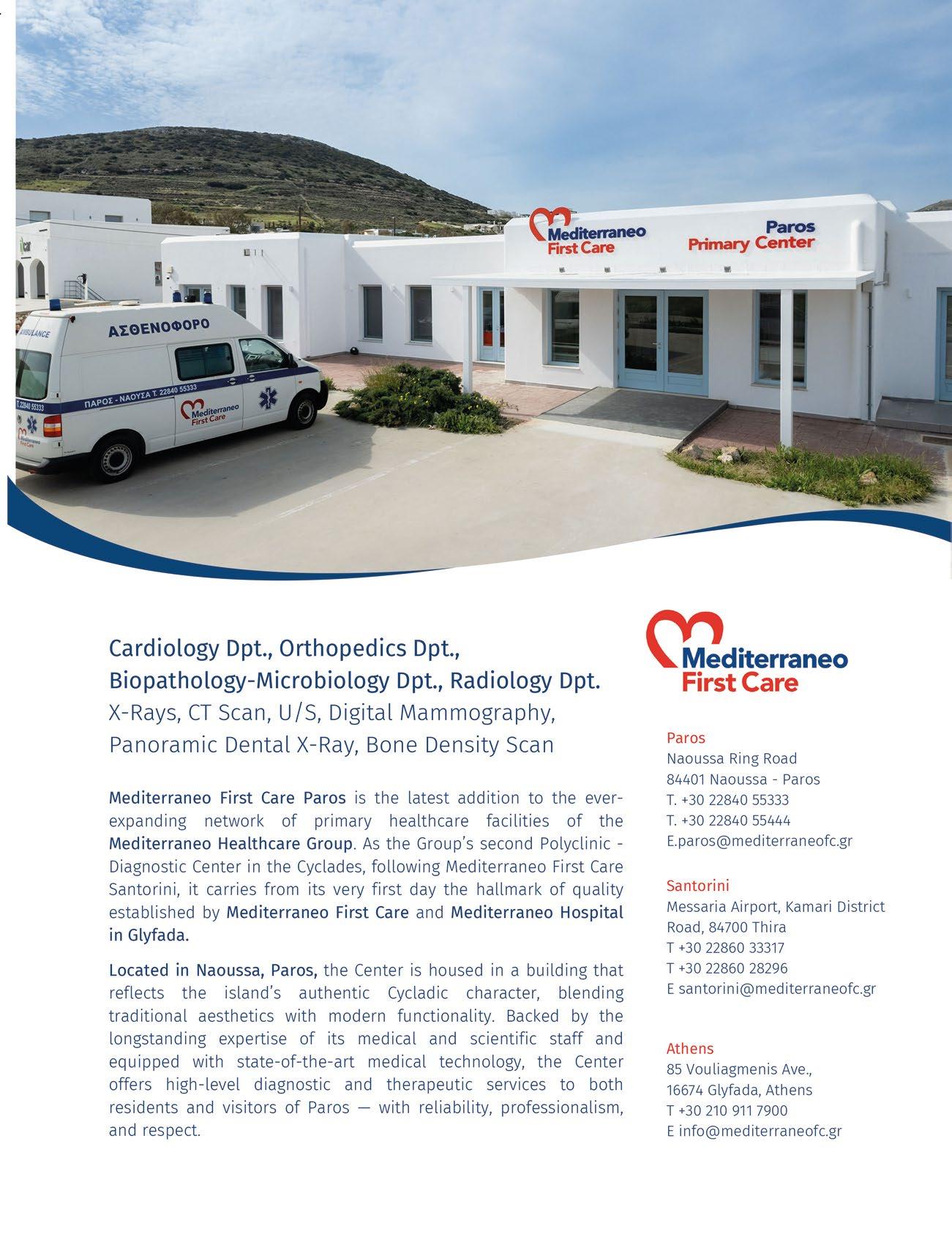



By Maria Makridakis, MSc, PsychD Psychologist –Doctor of Counselling Psychology, University of Surrey Deputy Scientific Supervisor, Athens Day Centre for Employee Support – Thalpos Mental Health
Disconnecting is not a luxury – it’s a necessity.
“O
ut of Office” is not just an automatic email setting. It is a quiet reminder that humans are not machines. And yet, for many of us, holidays come with guilt: “I’ll be on the island but feel free to call,” or “Of course I’ll keep checking my emails while I’m away.”
If you’re reading this, you may already be on a boat, perhaps just before reaching your summer destination. You now have a chance: to leave behind, even briefly, the pace of work and the year-long weight of obligations, and to see this trip not simply as a break, but as an opportunity to reconnect – with yourself, with others, with nature.






Rest and inner peace do not automatically come with a change of scenery. Being on an island with sun and sea means little if your mind is flooded with work-related stress. You must flick your inner switch – consciously decide to pause, to live in the moment, to be present. Many people take their holiday with the same stressful mindset they carry year-round: constant photos, social media, and the fear of missing out. But what if you disconnect from all that, and reconnect with the now? With the simple act of gazing at the sea with no agenda. Of having no schedule. Of waking without an alarm. Of feeling – rather than just consuming – experiences. So that when the holiday ends, what remains isn’t just the photos...
INFO
THALPOS MENTAL HEALTH
Patision & Agathopoleos 5, Athens 11257 | Tel.: +30 210 33 14 603 www.thalpos.org.gr







BREATH: The most overlooked “recovery tool”
FEELING TENSE OR ANXIOUS? START WITH YOUR BREATH.
3



106 74 | T: 210 725 1322 ADDRESS: IRODOTOU 5, ATHENS, 106 74 | T: +30 210 7251322 www.bodyinmotion.gr
3 Exercises for better posture, calm, and wellbeing
You don’t need any equipment or much time. Five to ten minutes a day is enough.
1.
Box Breathing (Αναπνοή σε τετράγωνο).
Box Breathing. For calmness, mental clarity, and inner stability.
Οδηγίες / Instructions:
• Εισπνοή
•
•
•
•
2.
για 4
/ Inhale through the nose for 4 seconds
/ Hold for 4 seconds
4 δευτερόλεπτα / Exhale through the mouth for 4 seconds
/ Repeat for 2–3 minutes •
/ Ideal before sleep or during stressful moments

3.
Crocodile Breathing (Αναπνοή
Crocodile Breathing. To strengthen the diaphragm and decompress the lower back.
Οδηγίες / Instructions:
•
/ Lie face down, hands under your forehead
/ Take a deep breath in through your nose and feel your belly press against the floor
/ Exhale slowly, letting your body relax
Chair + Breath + Core. Core activation in a seated position.
/ Instructions:
/ Sit at the edge of a chair, without leaning back
/ Inhale: Imagine lengthening your spine
/ Exhale: Gently pull your belly inward, without sucking it in
/ Continue






